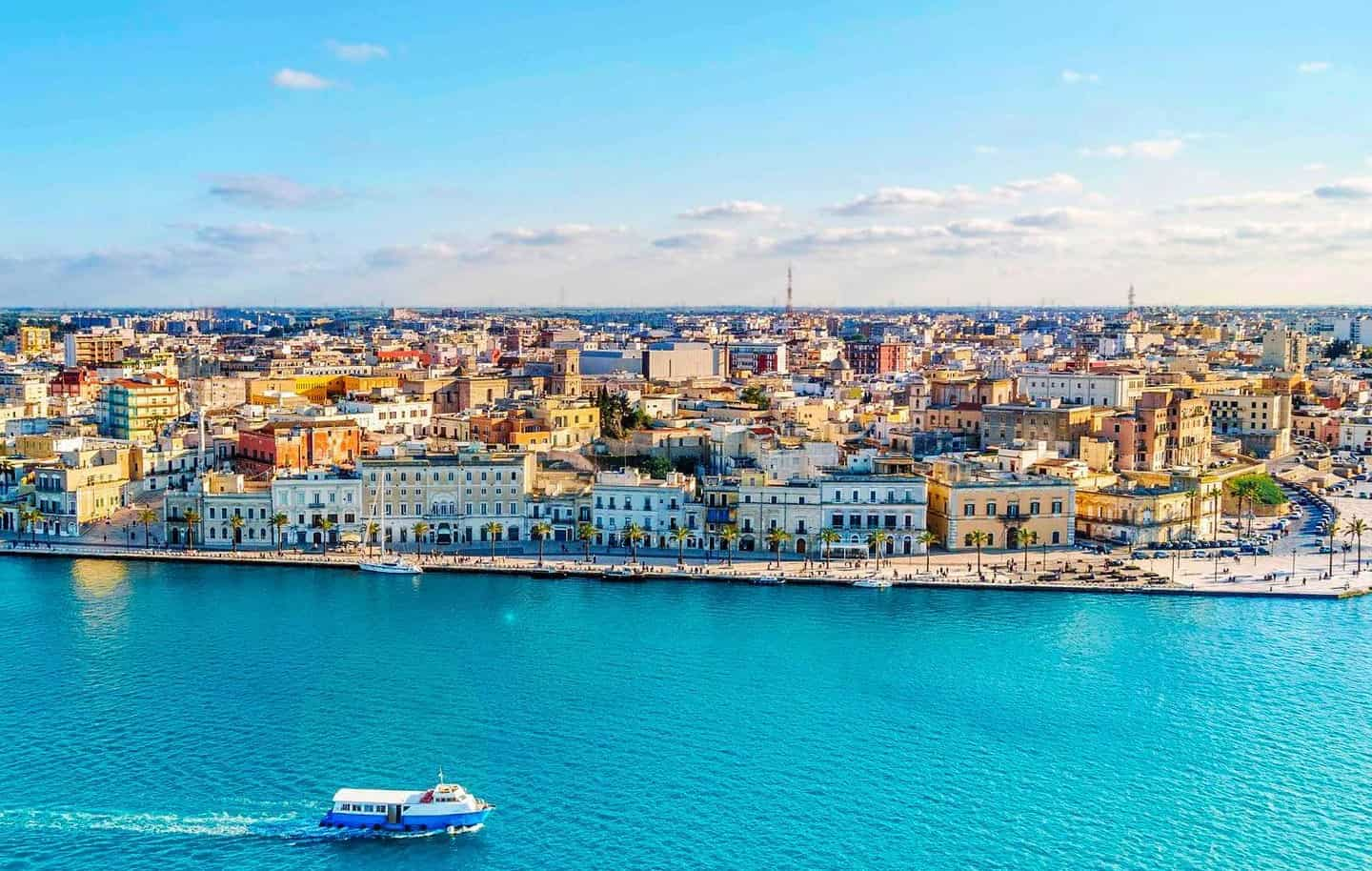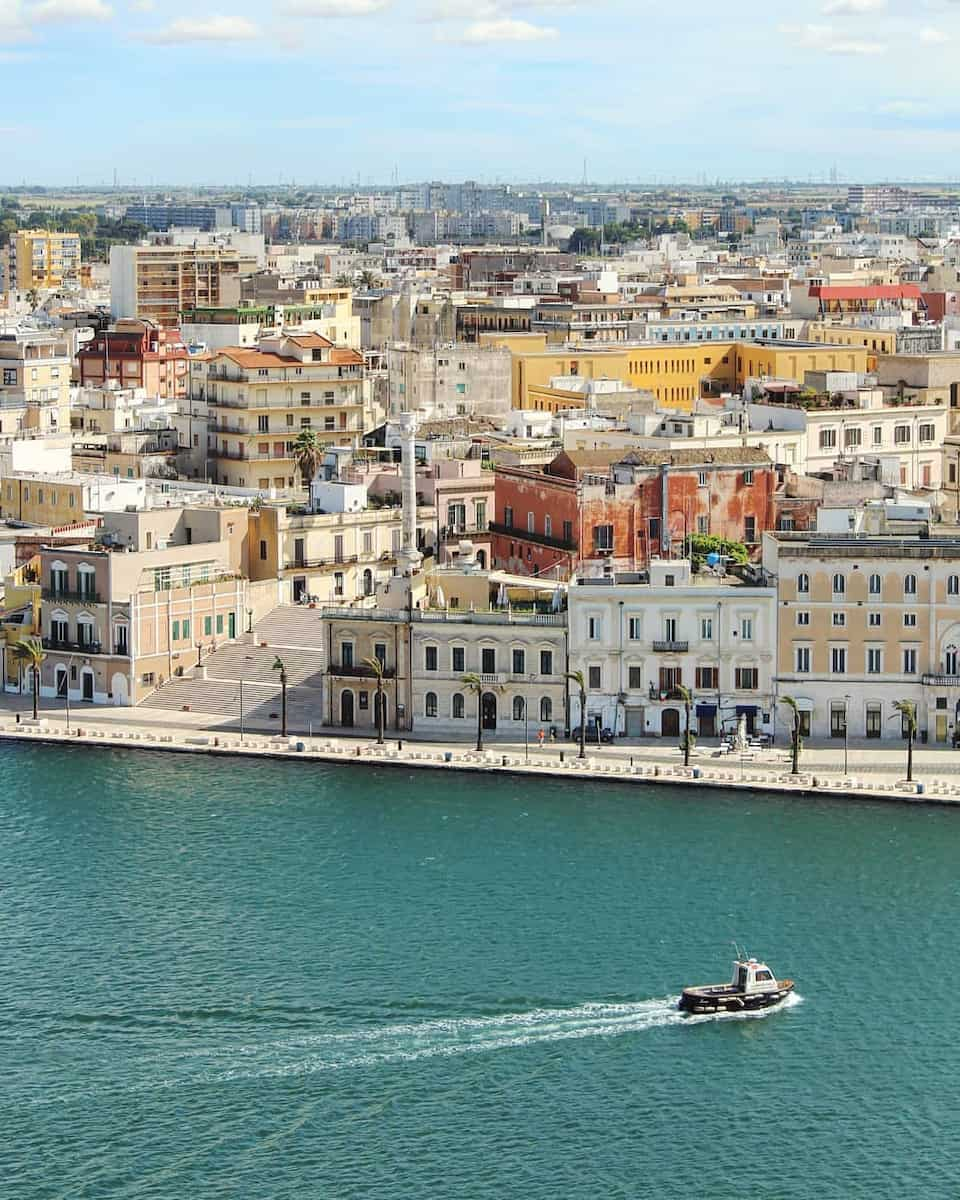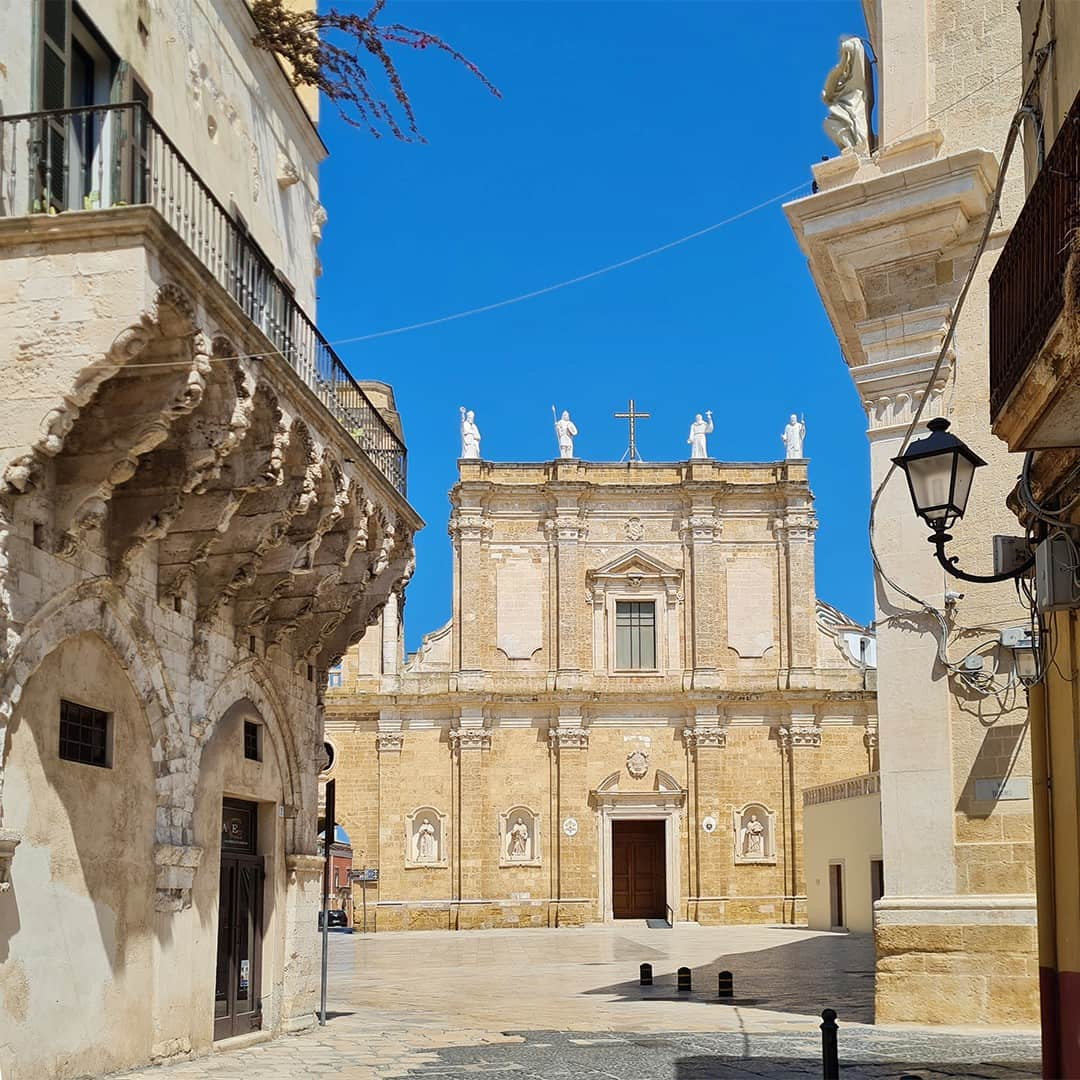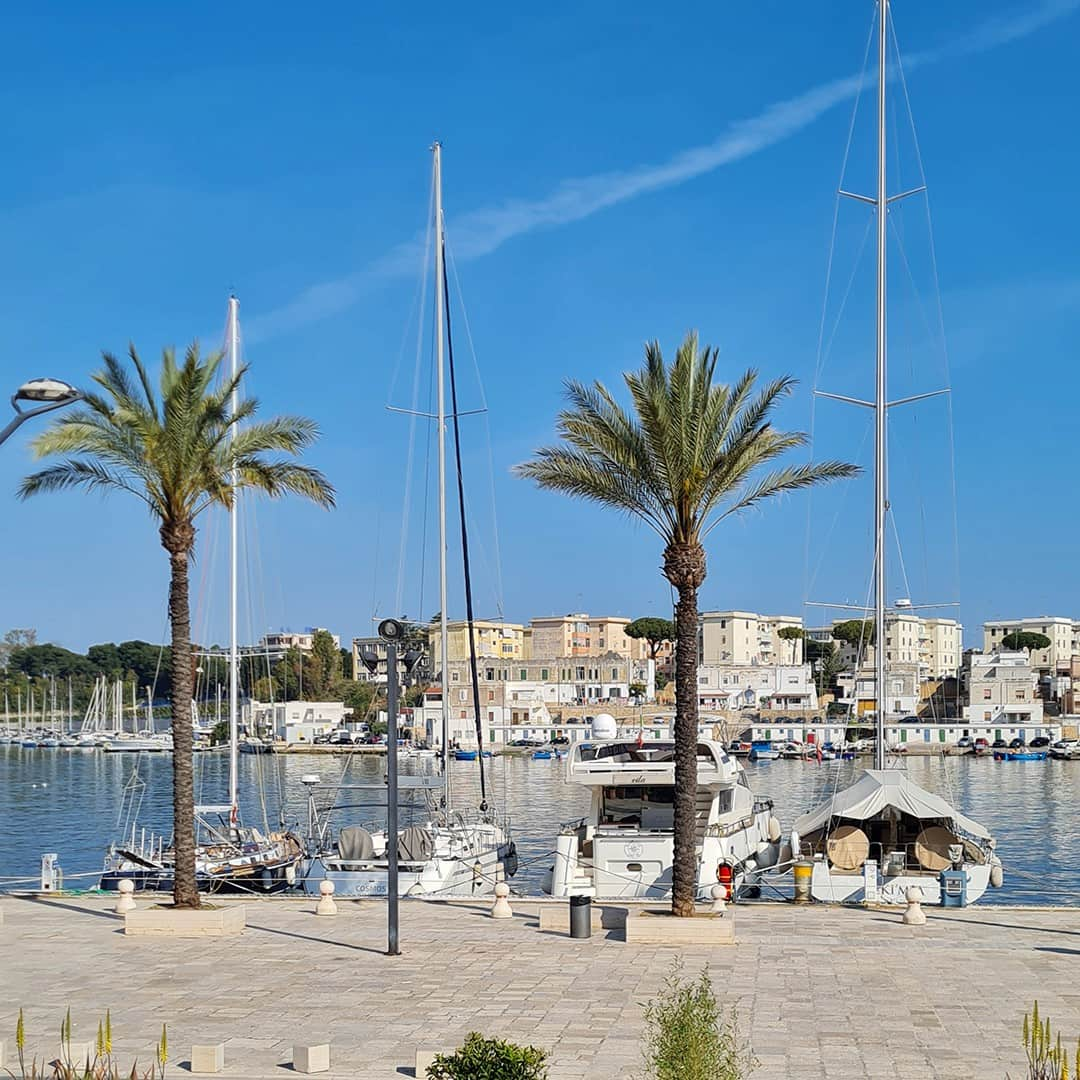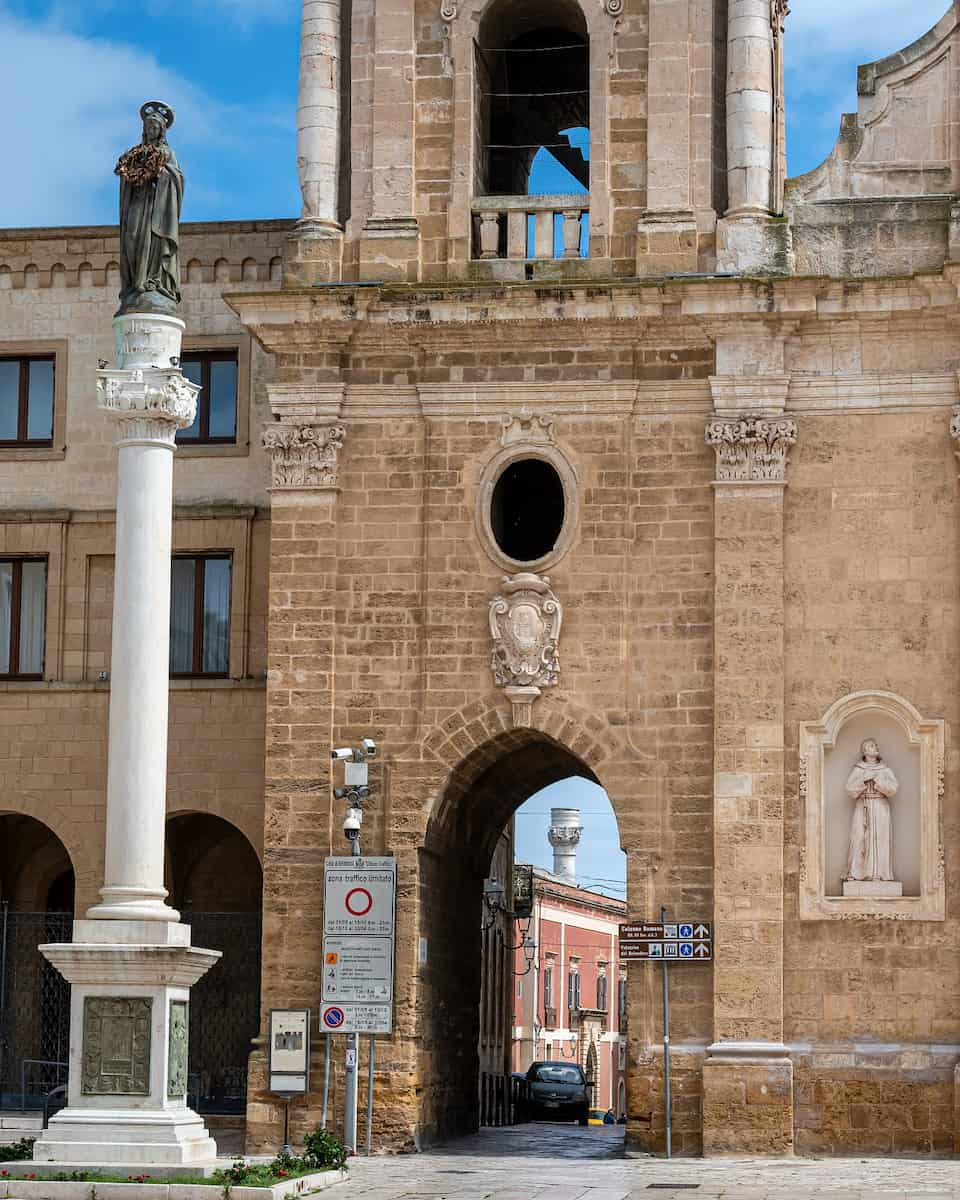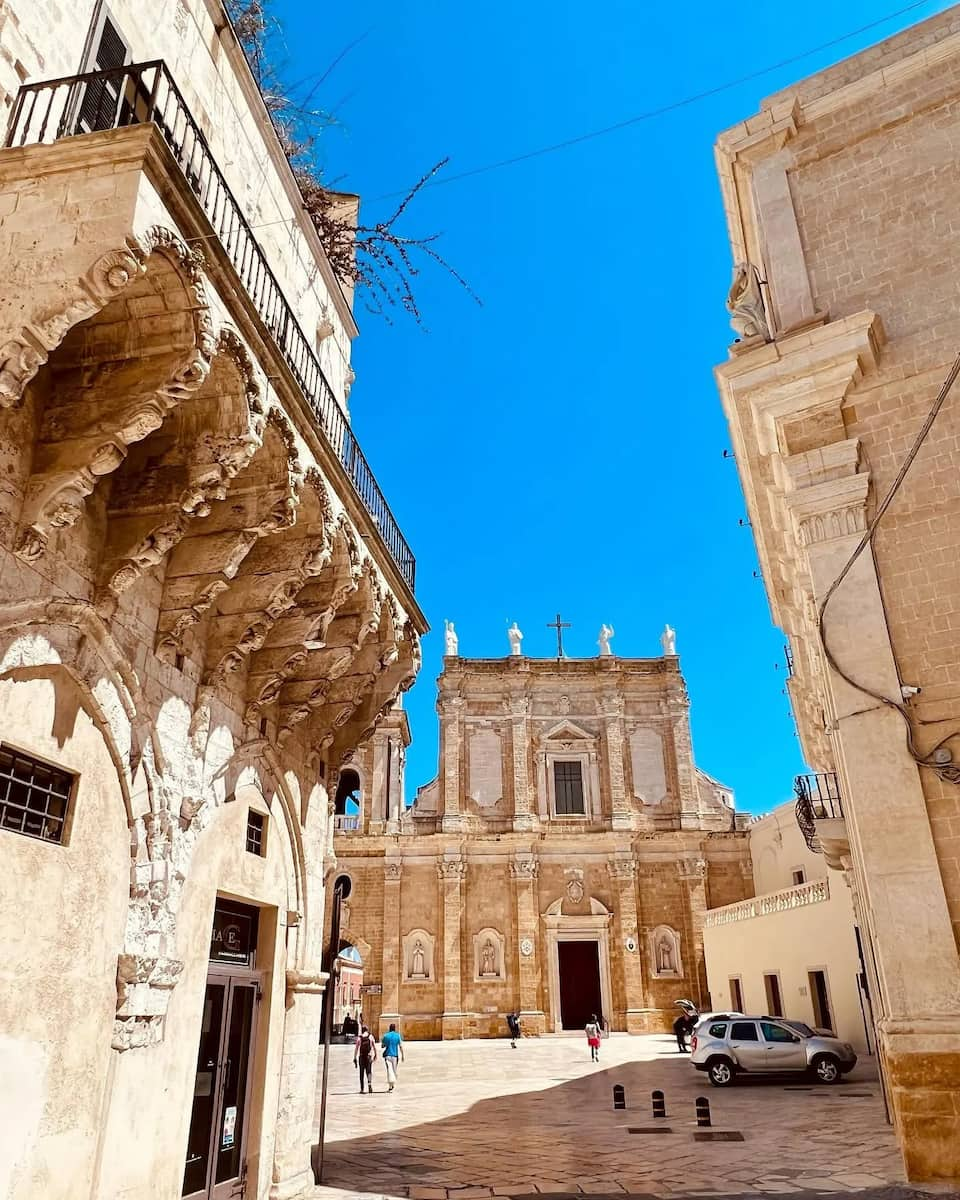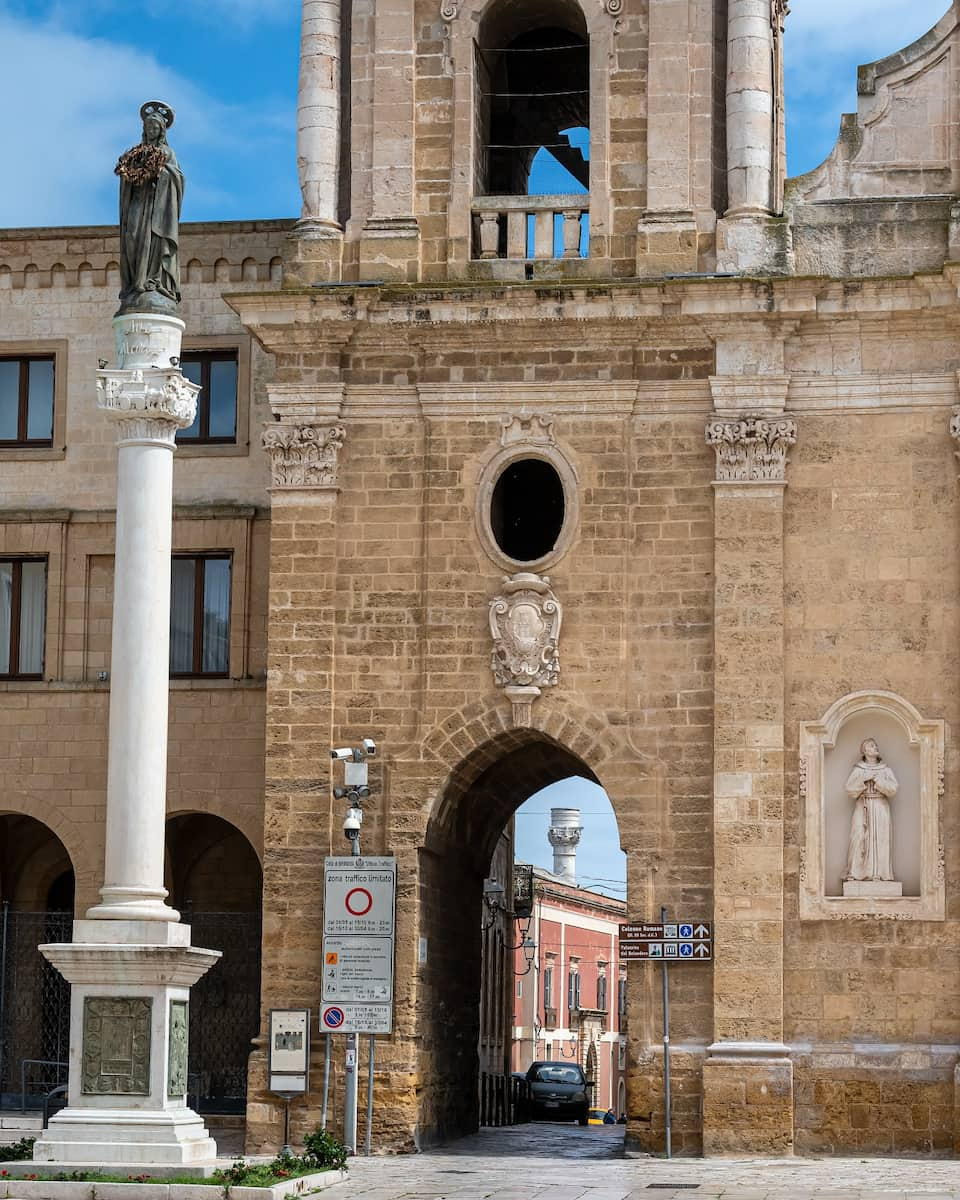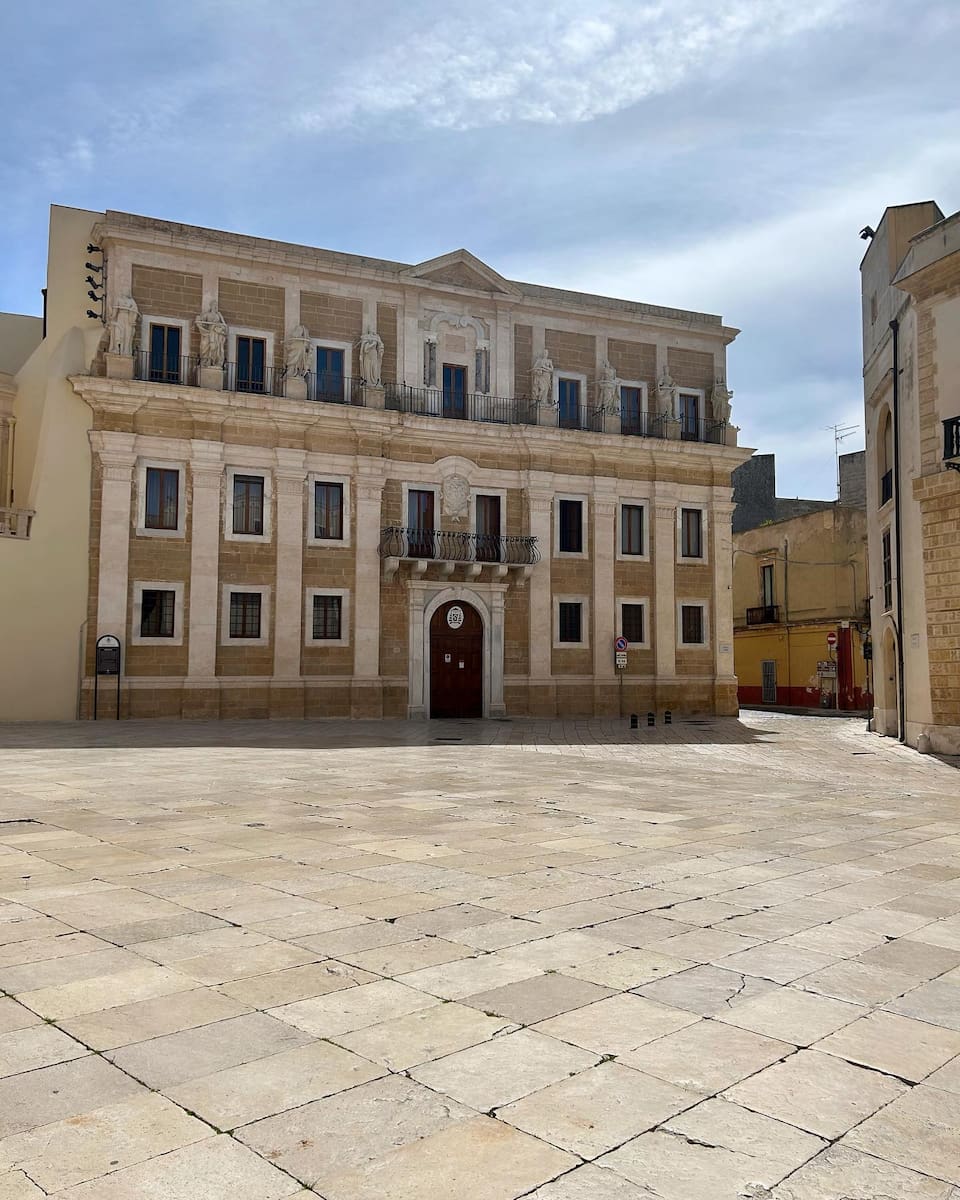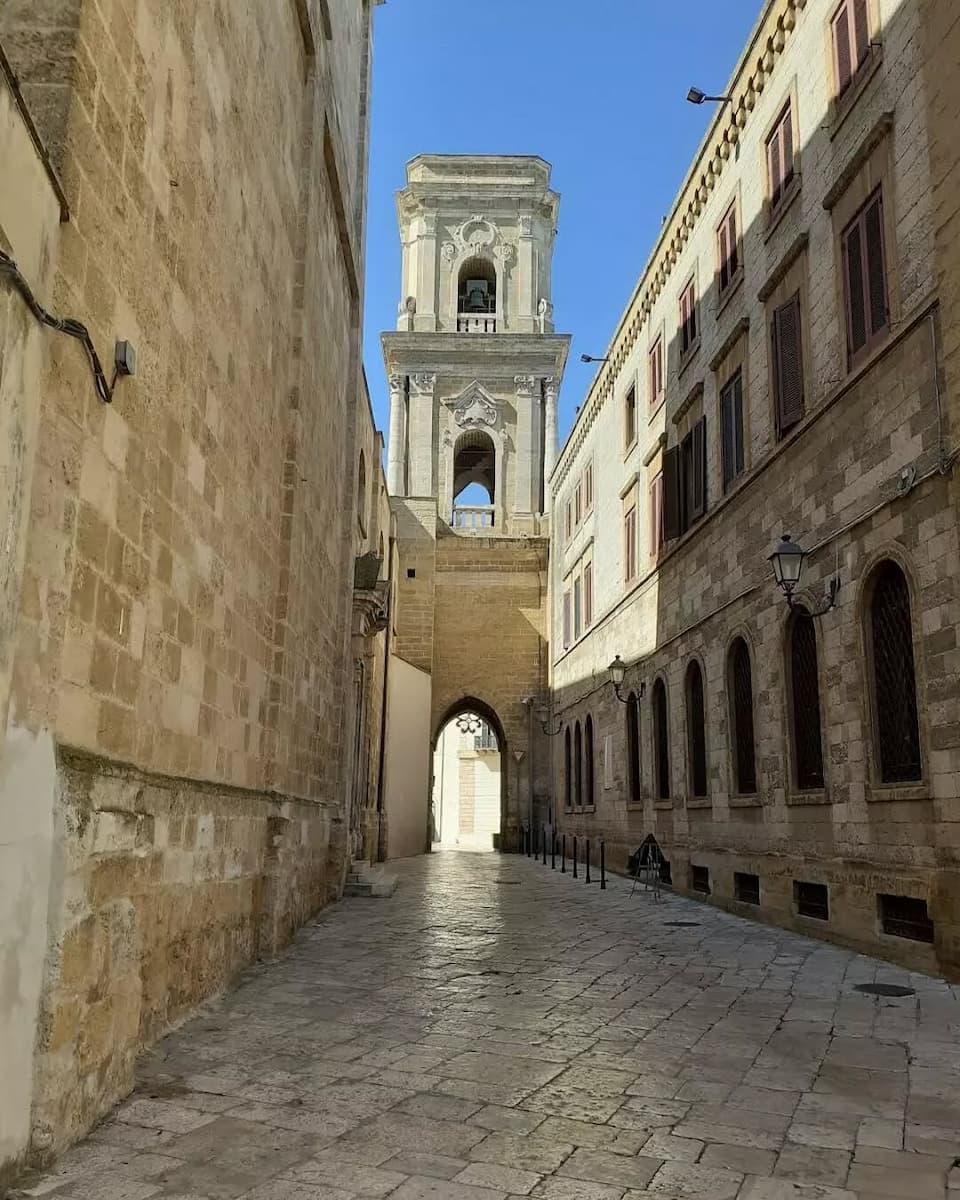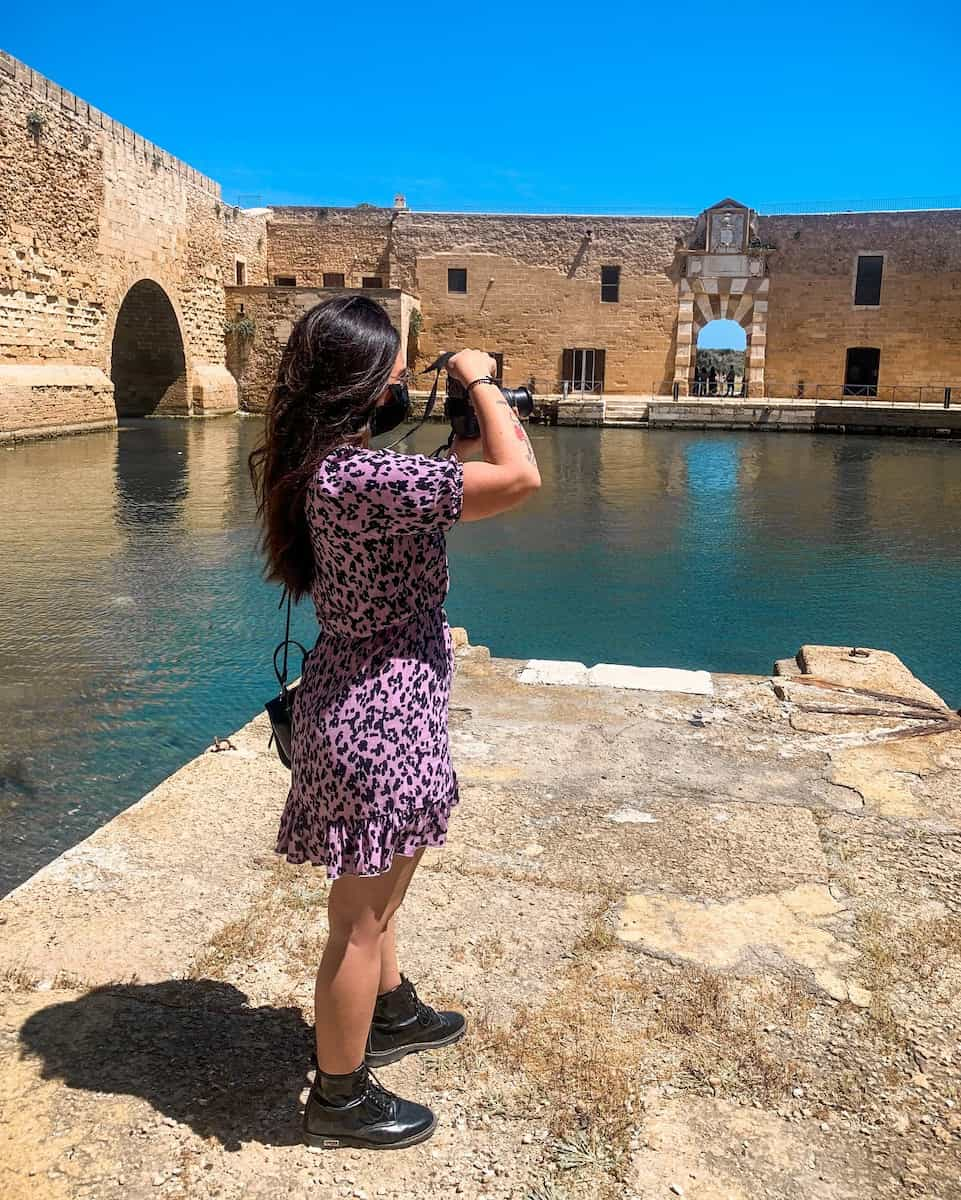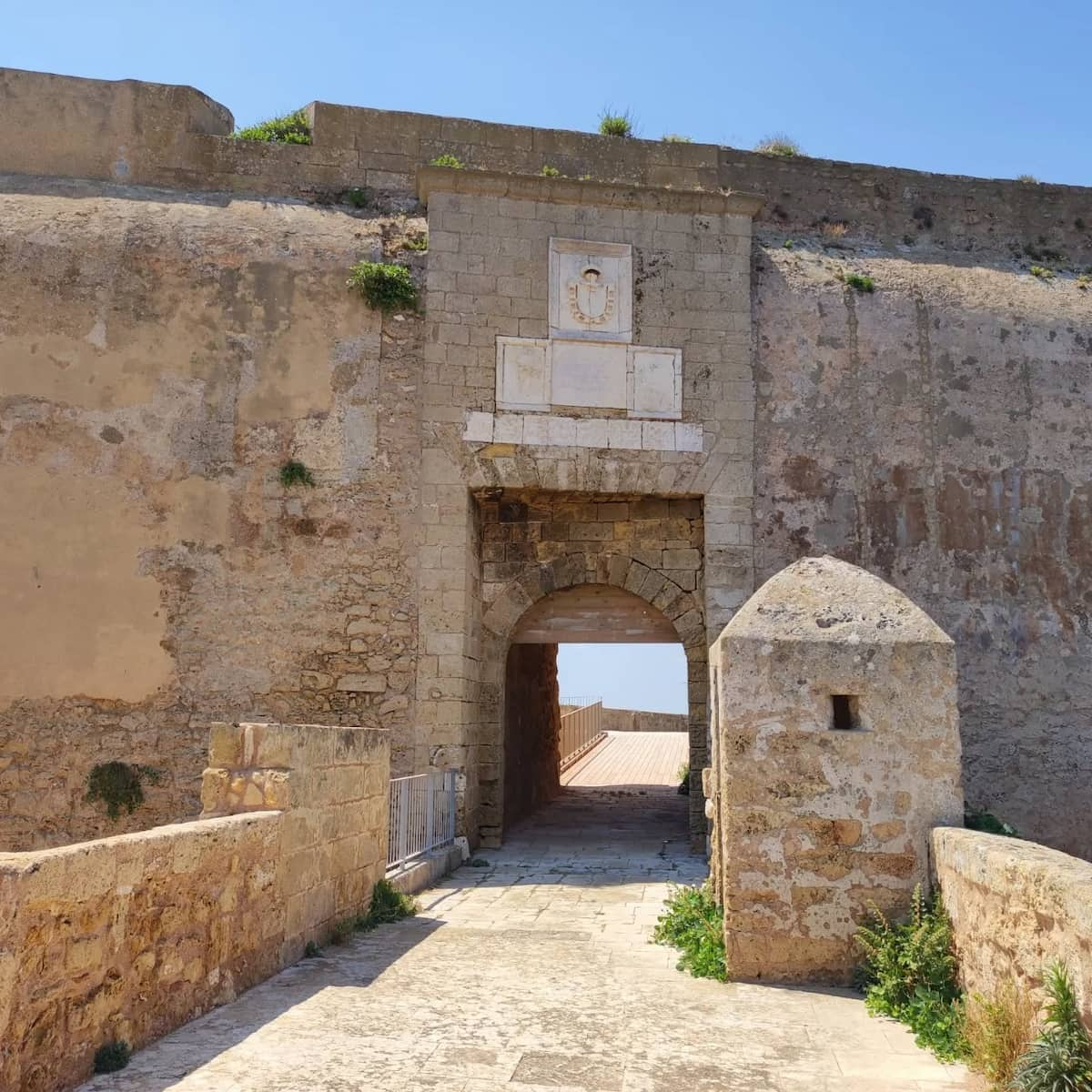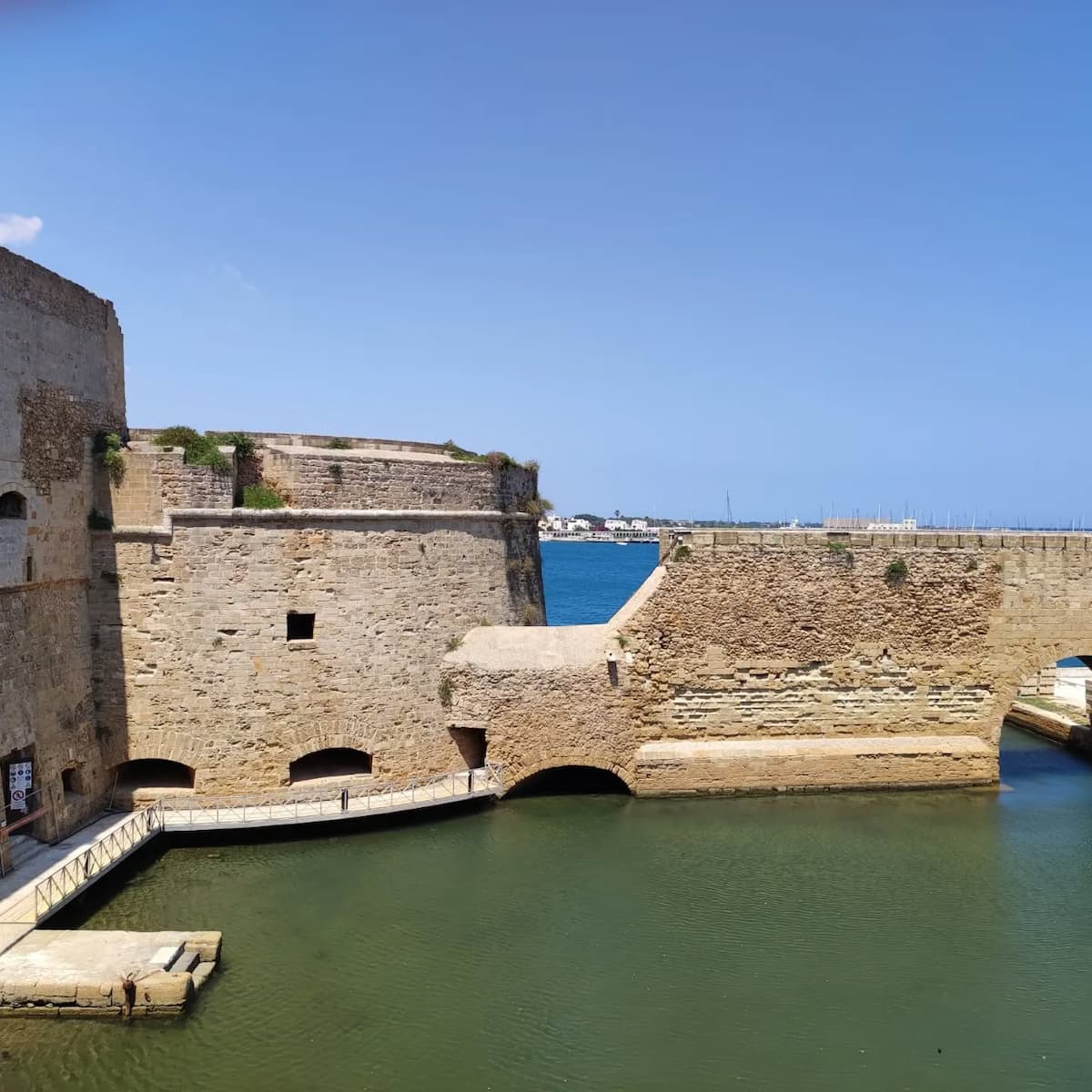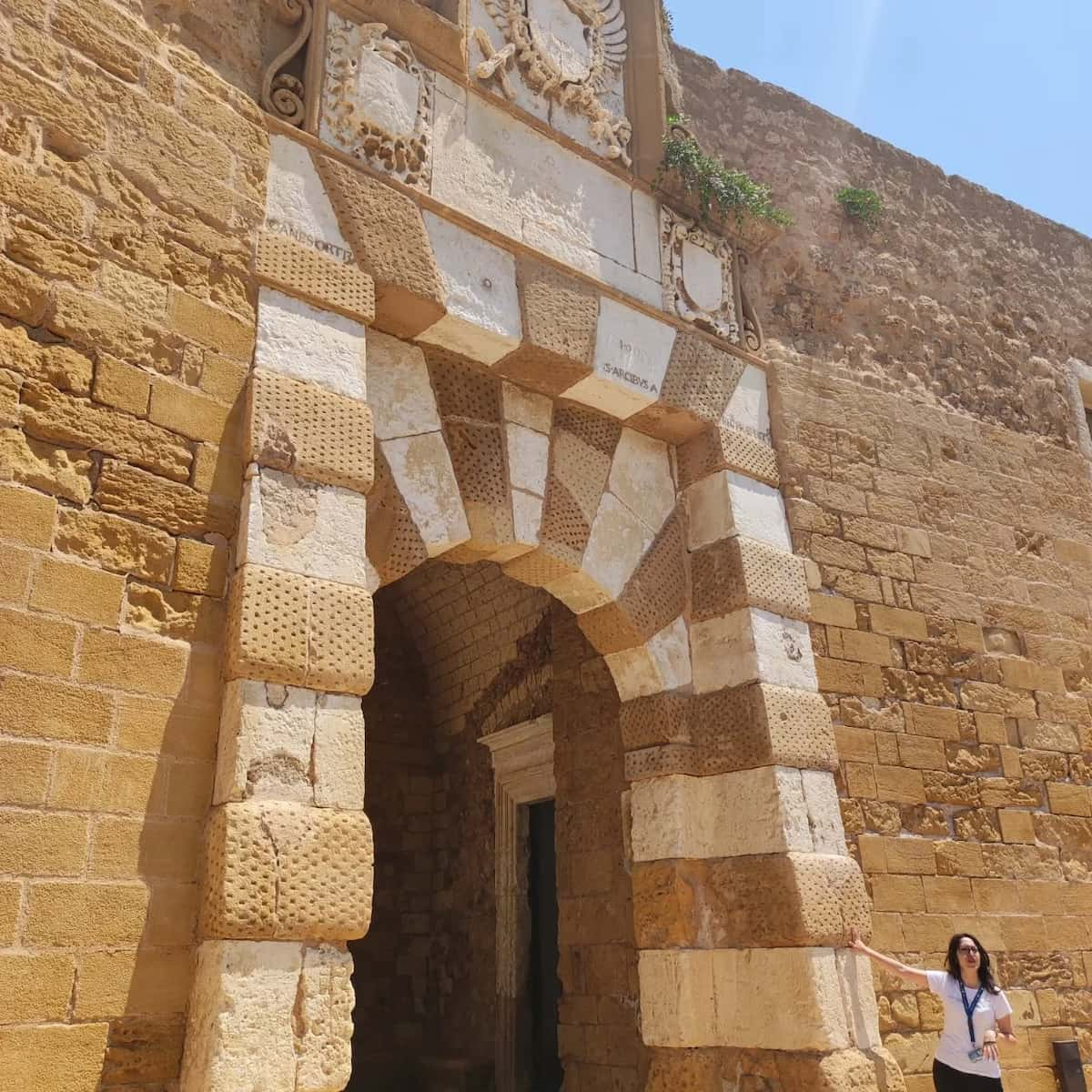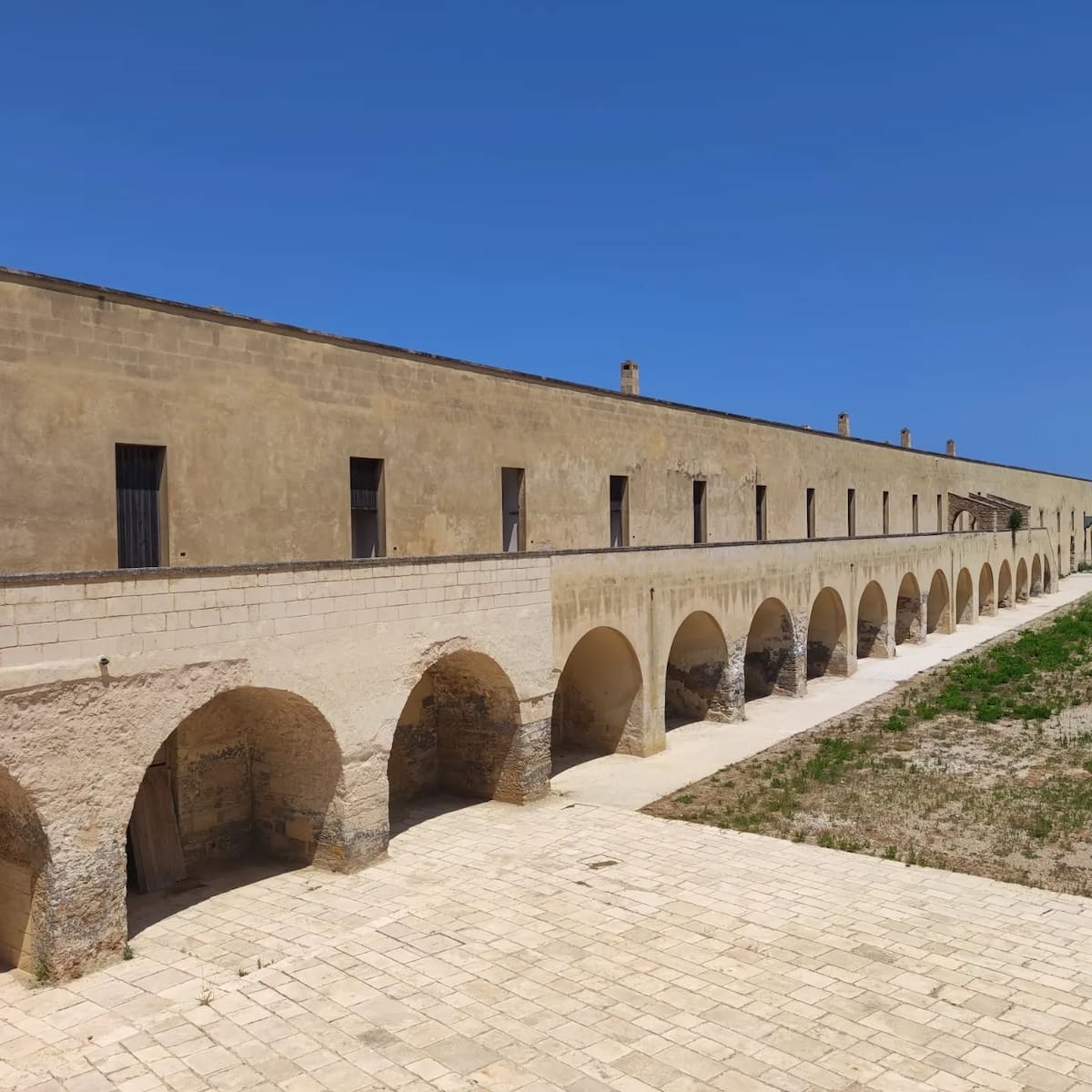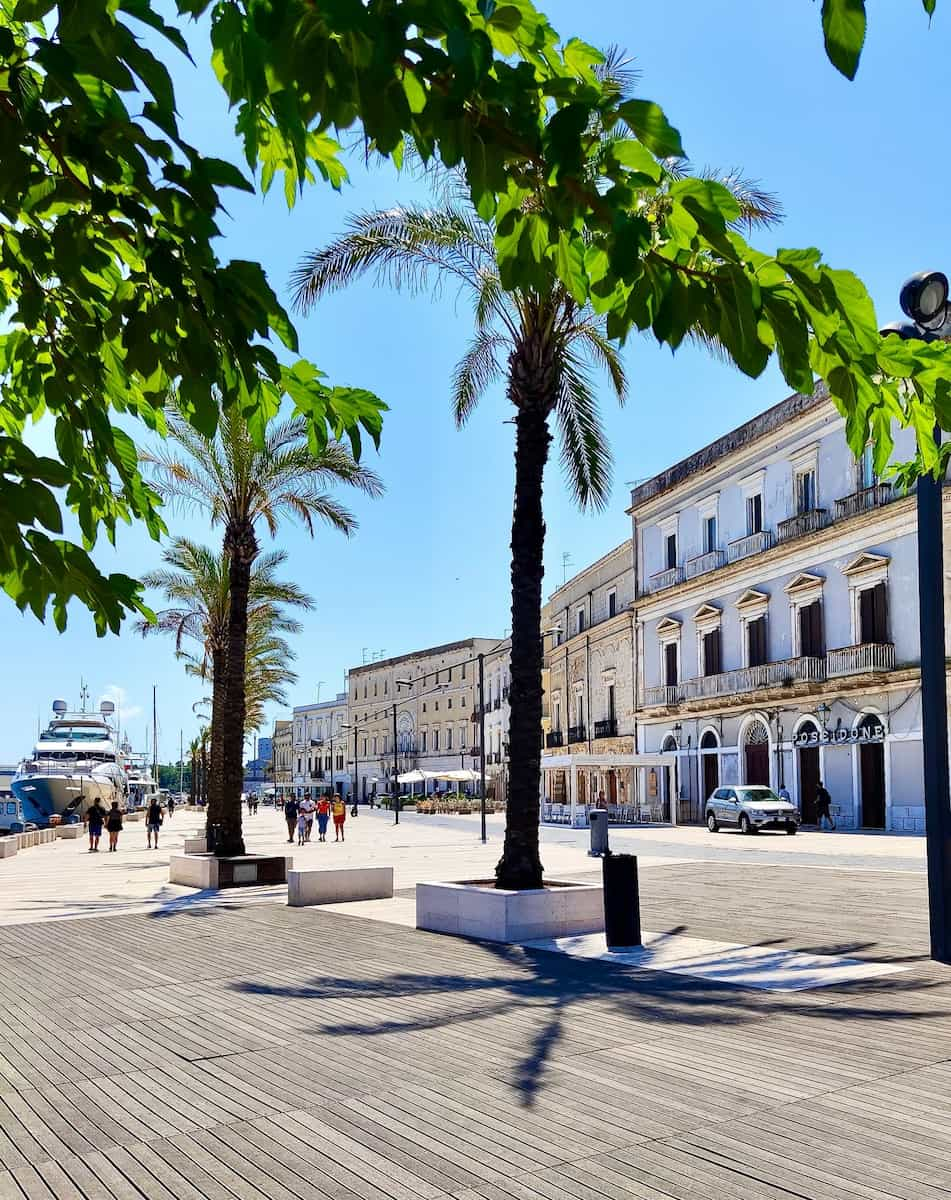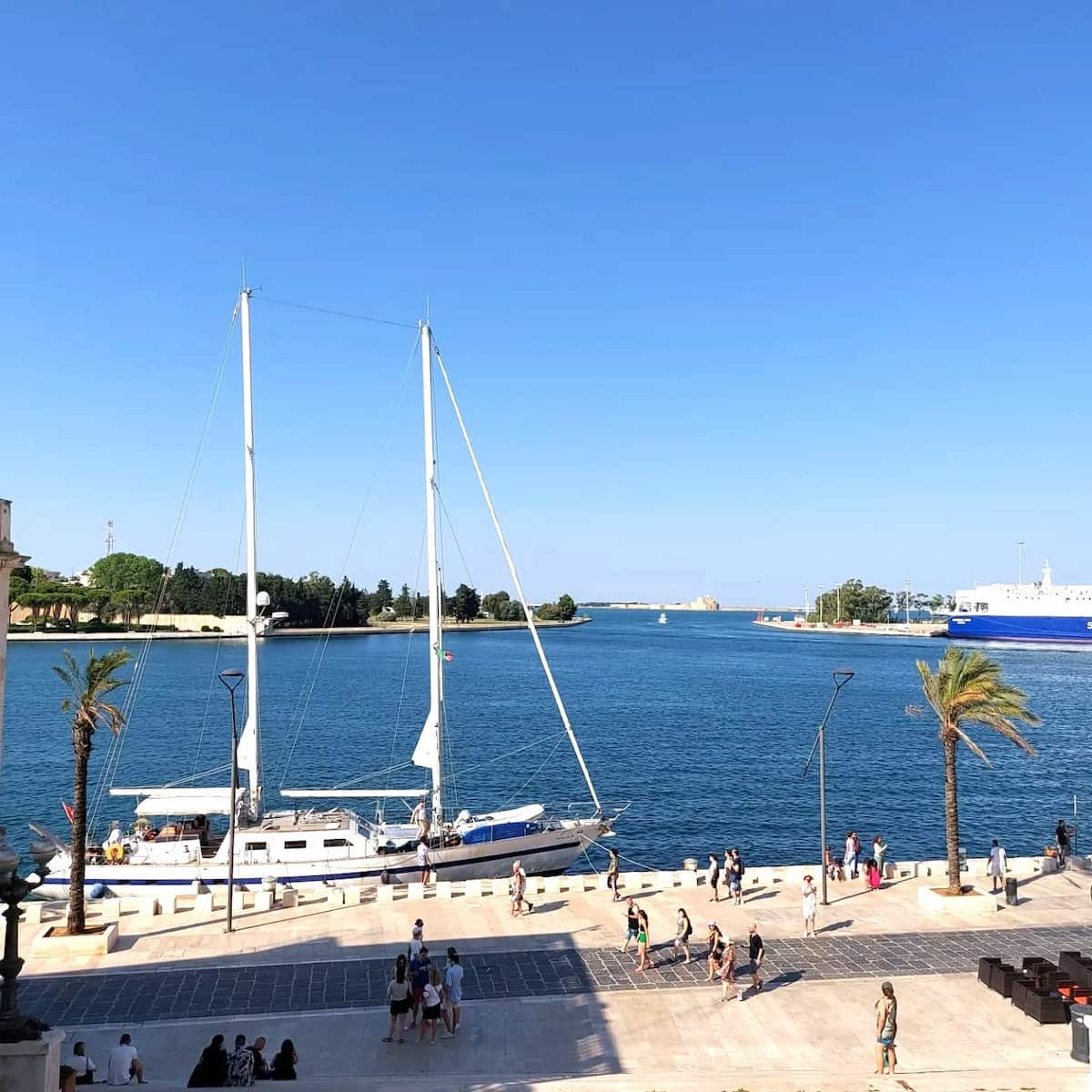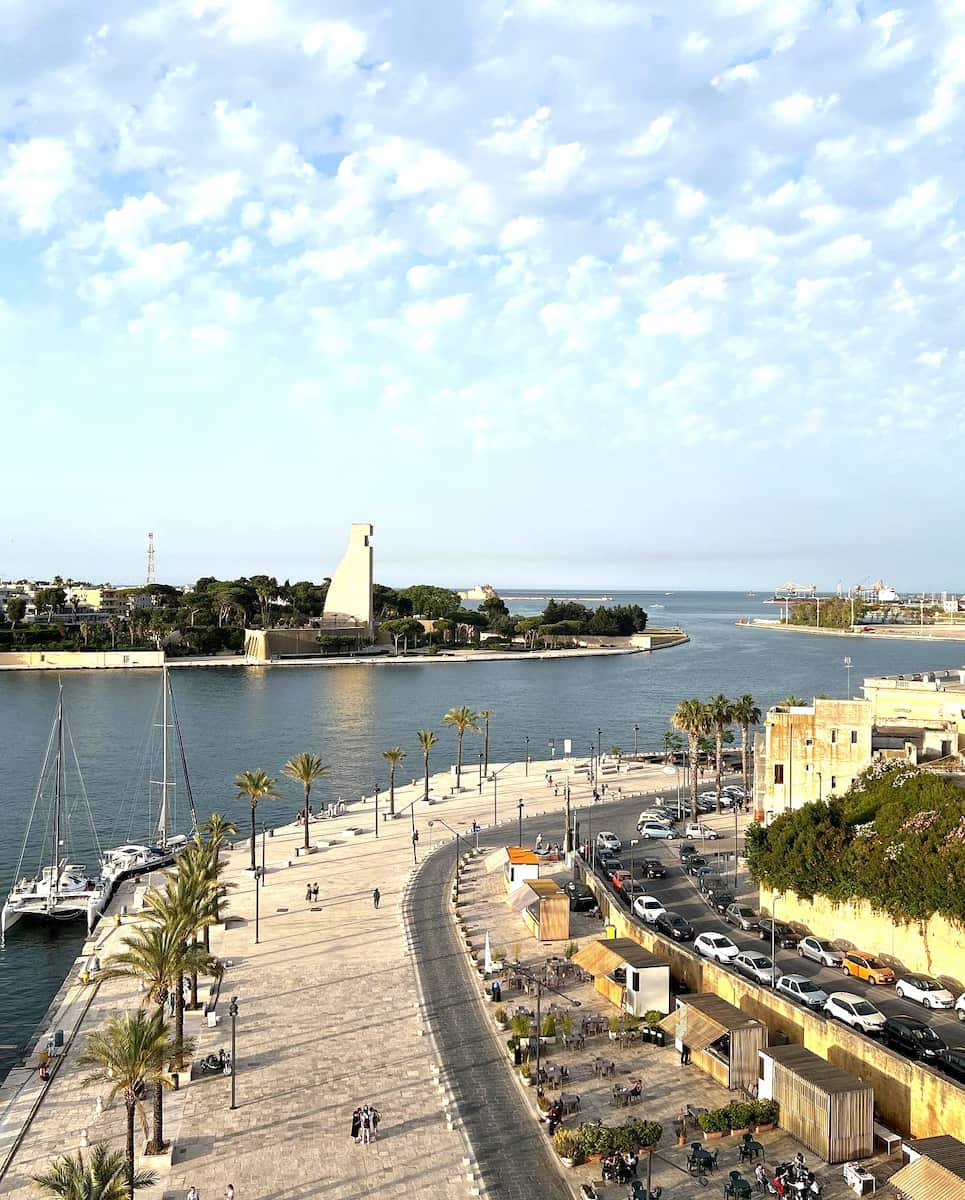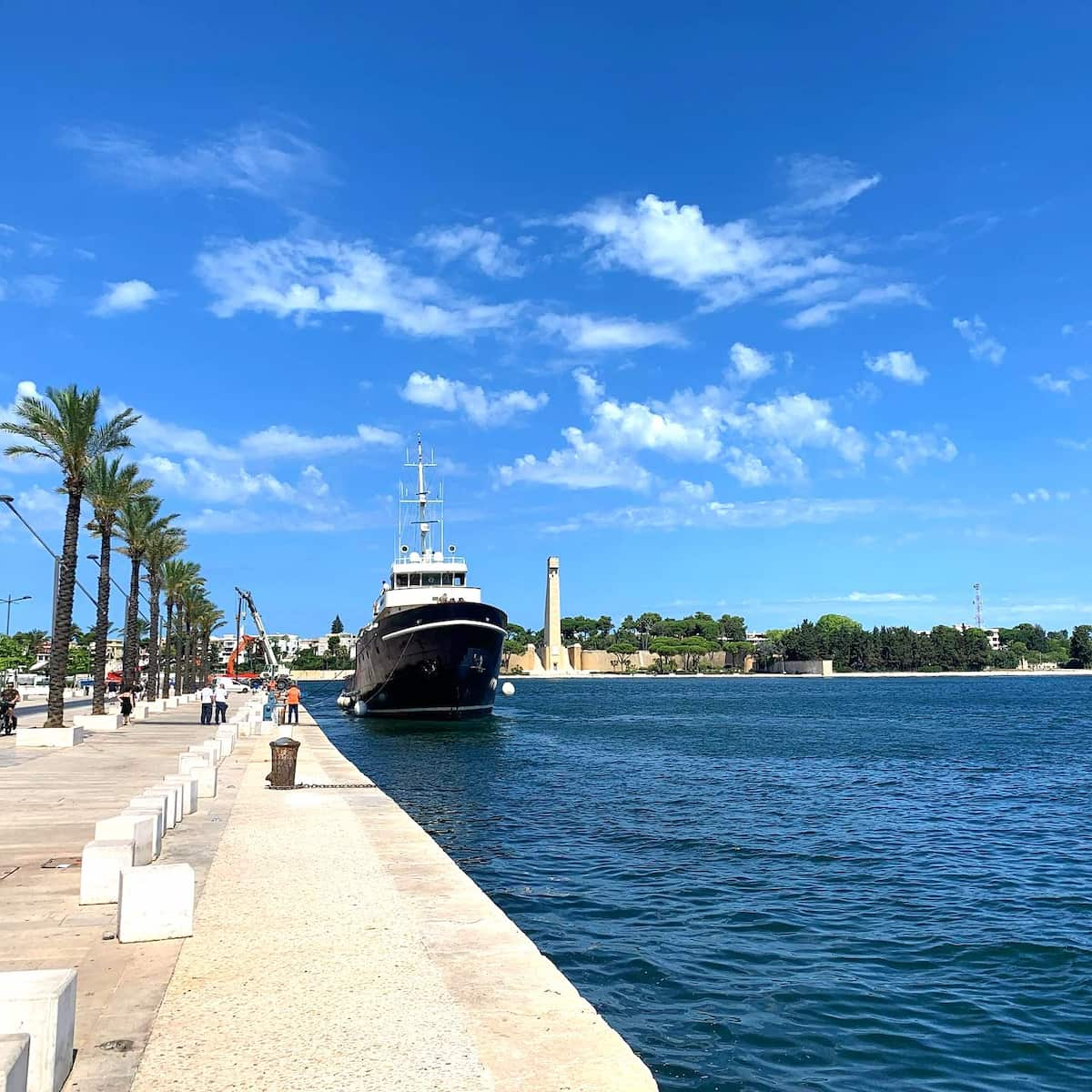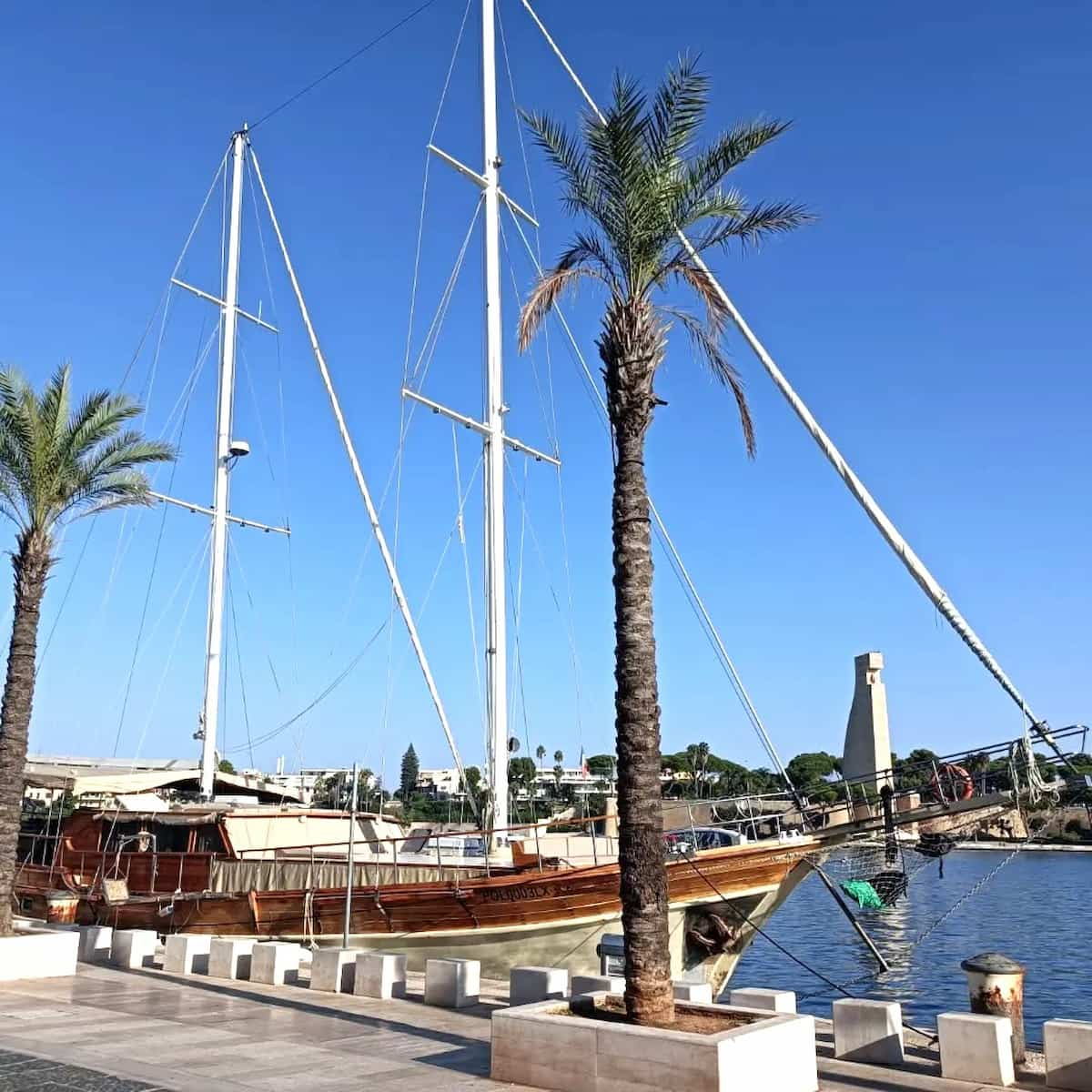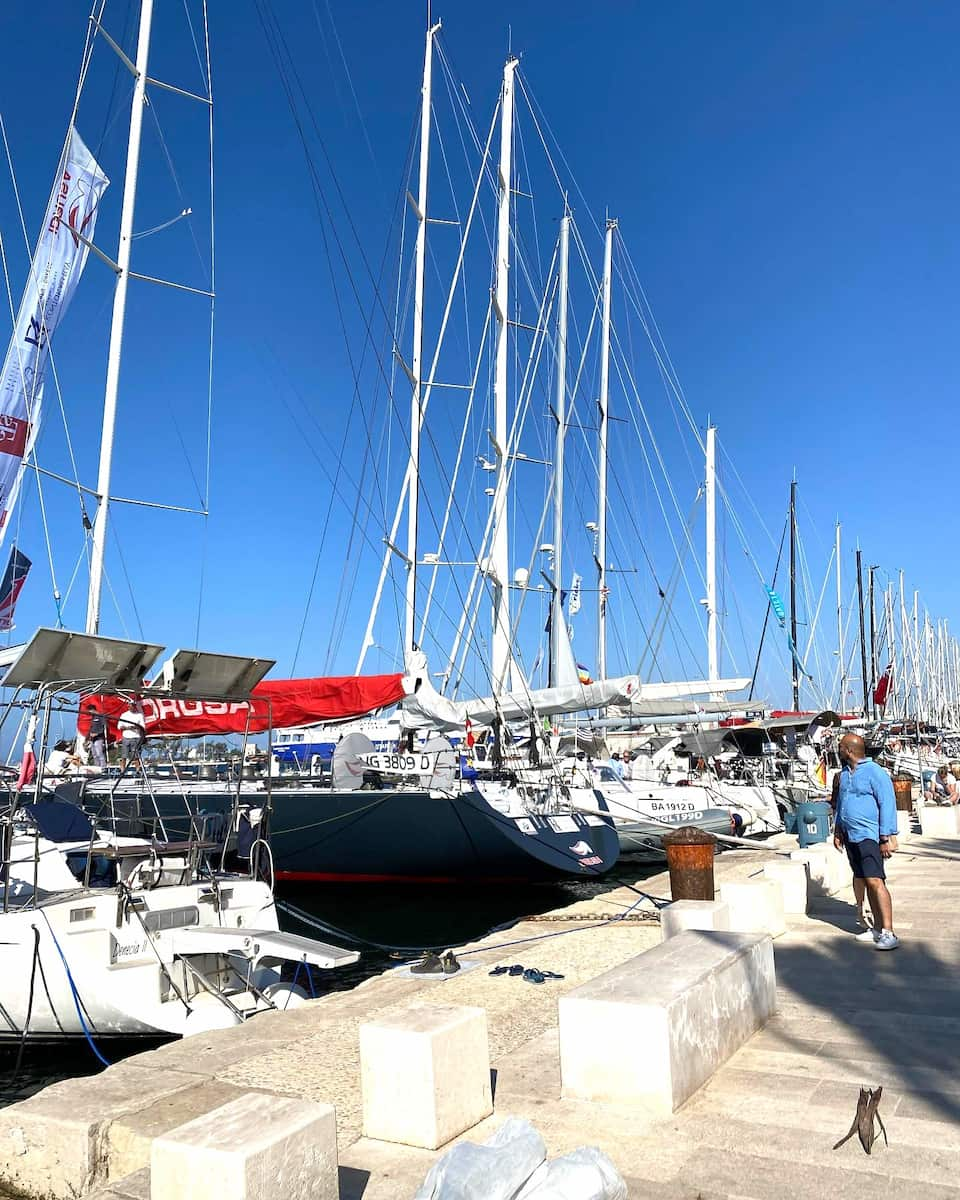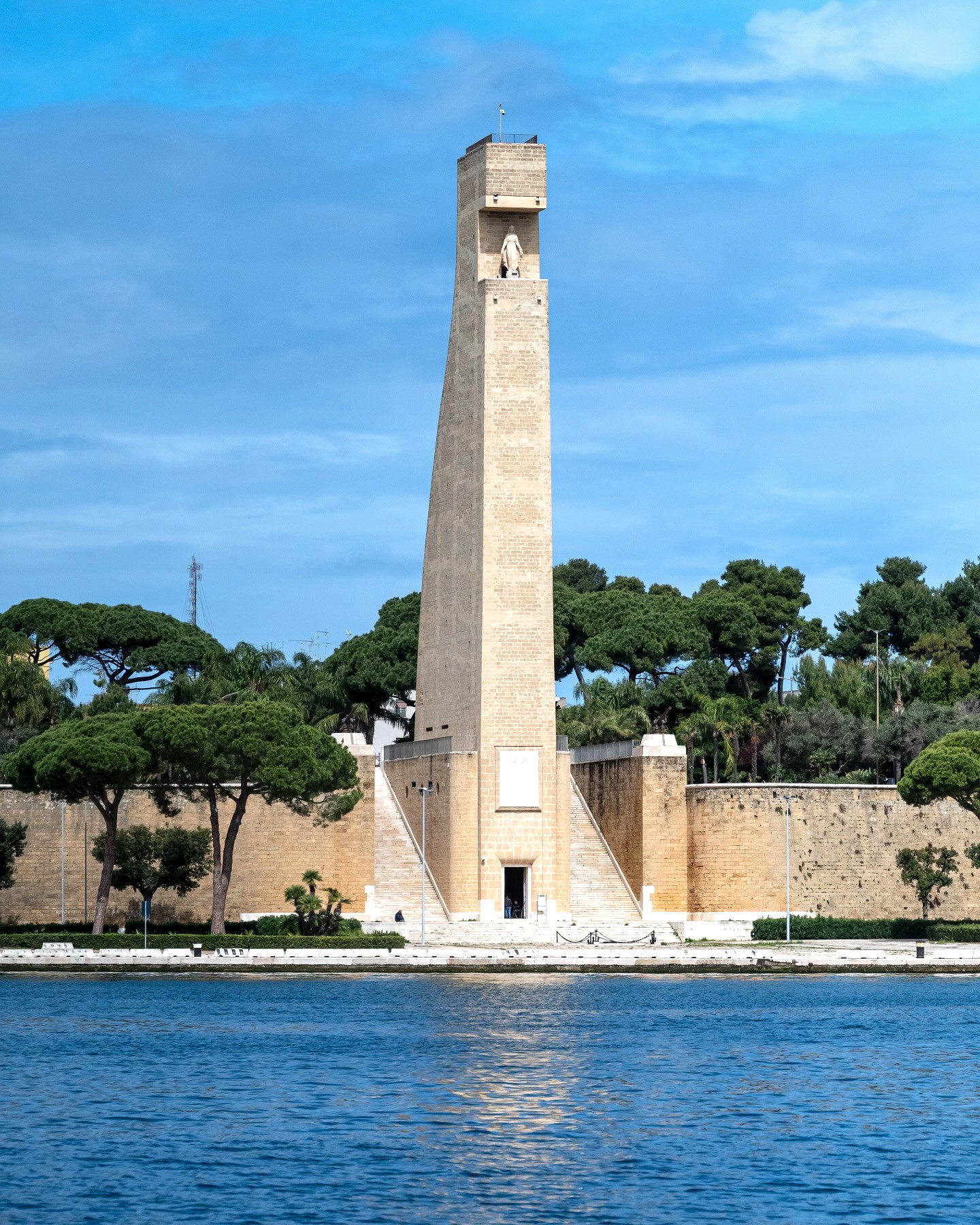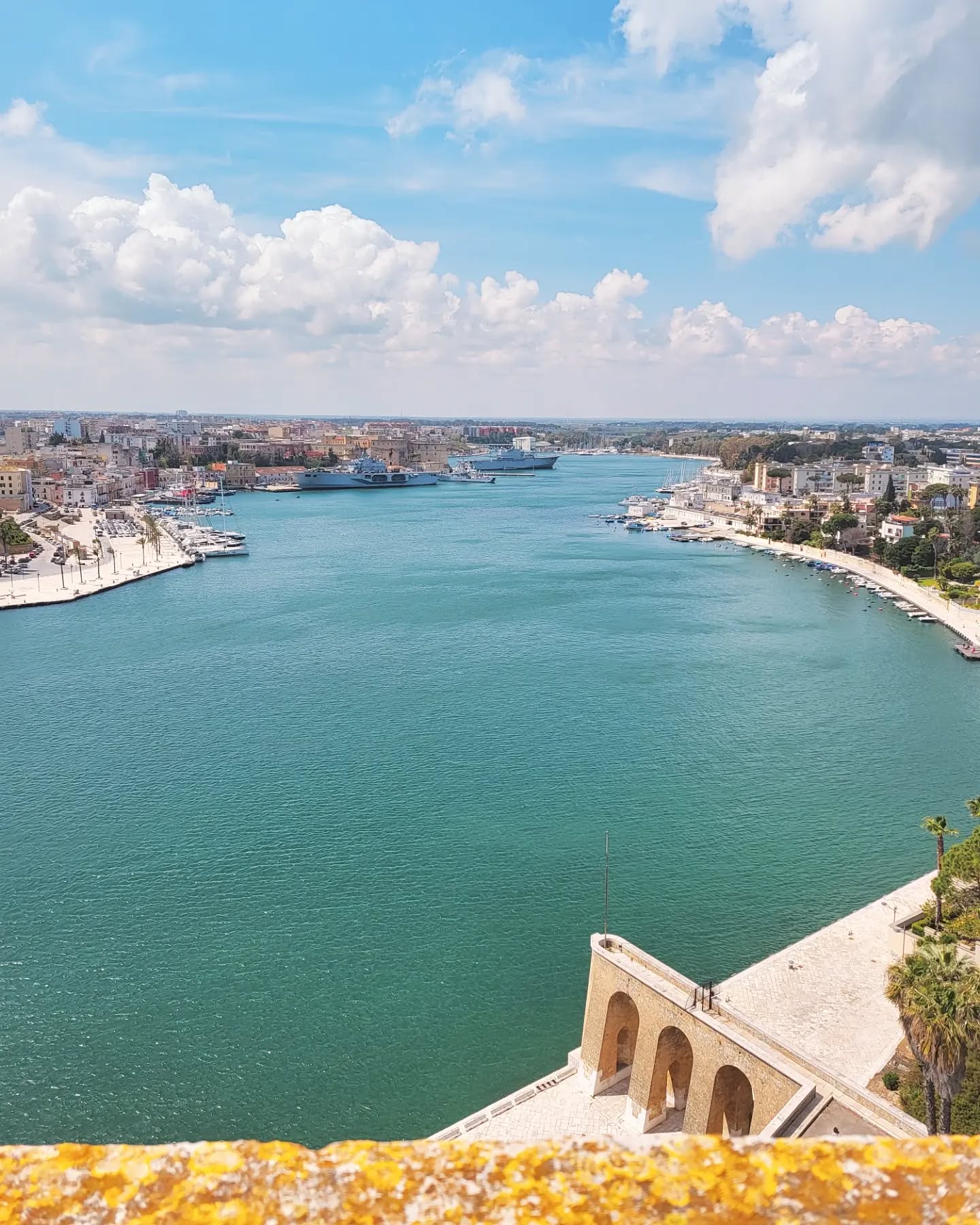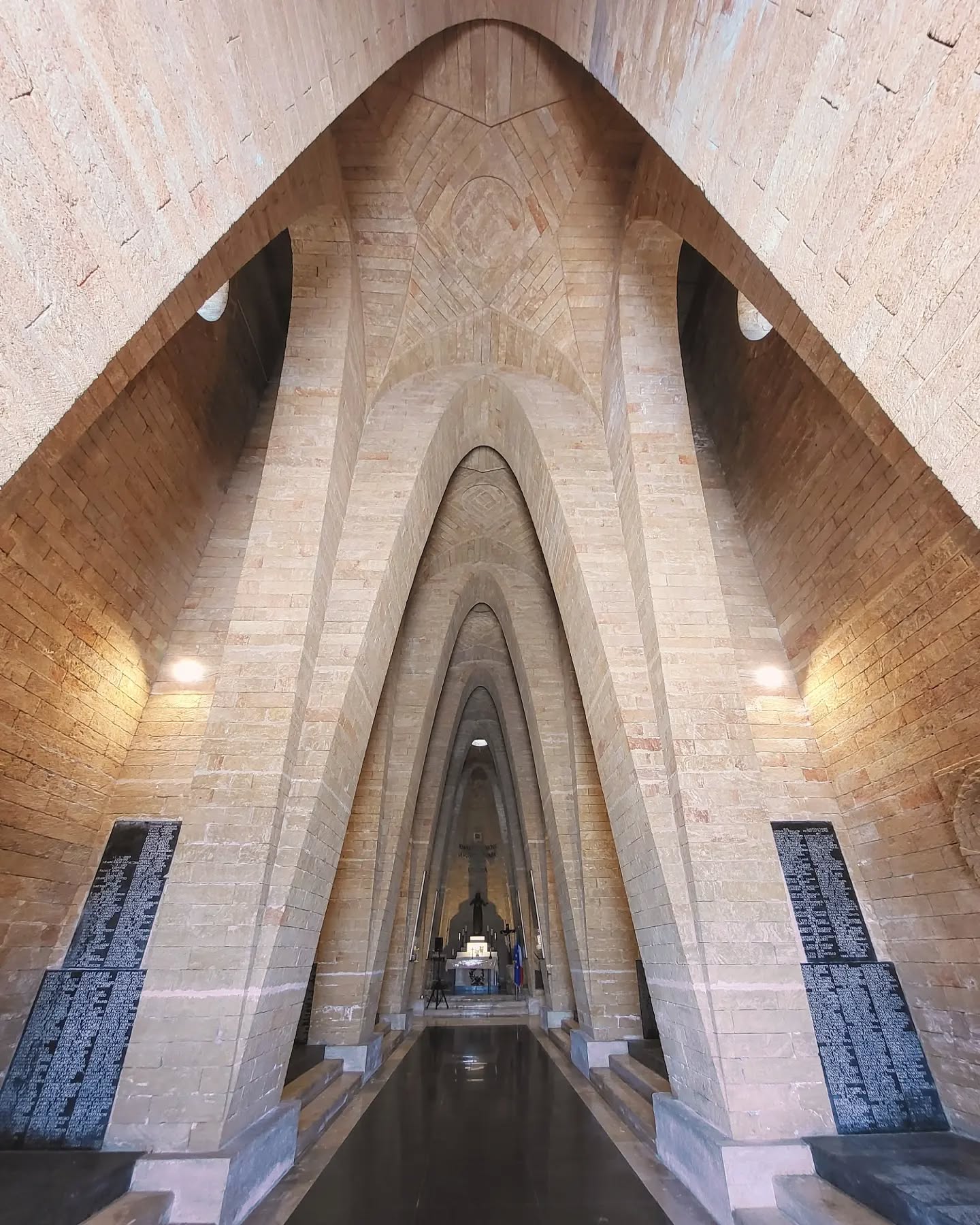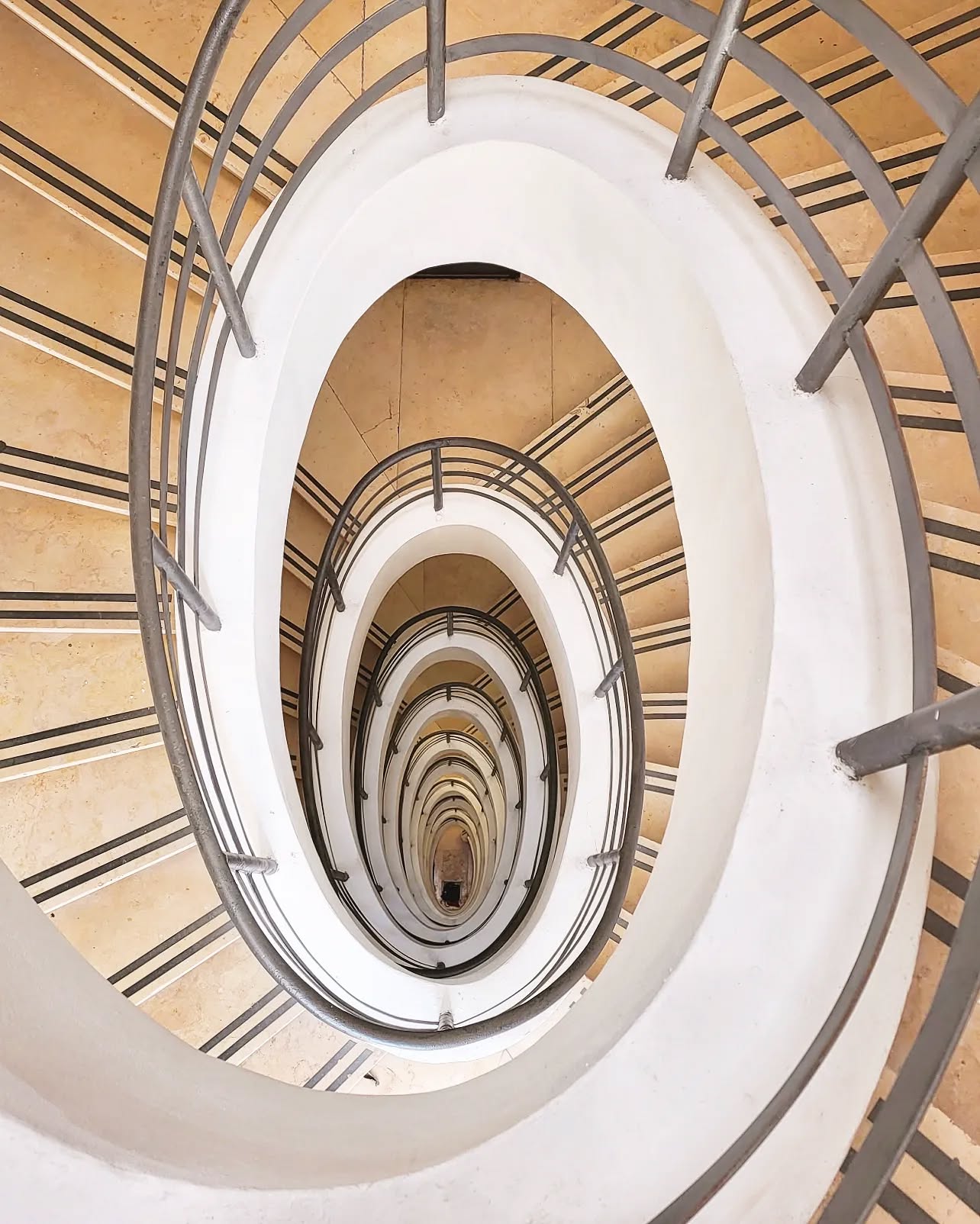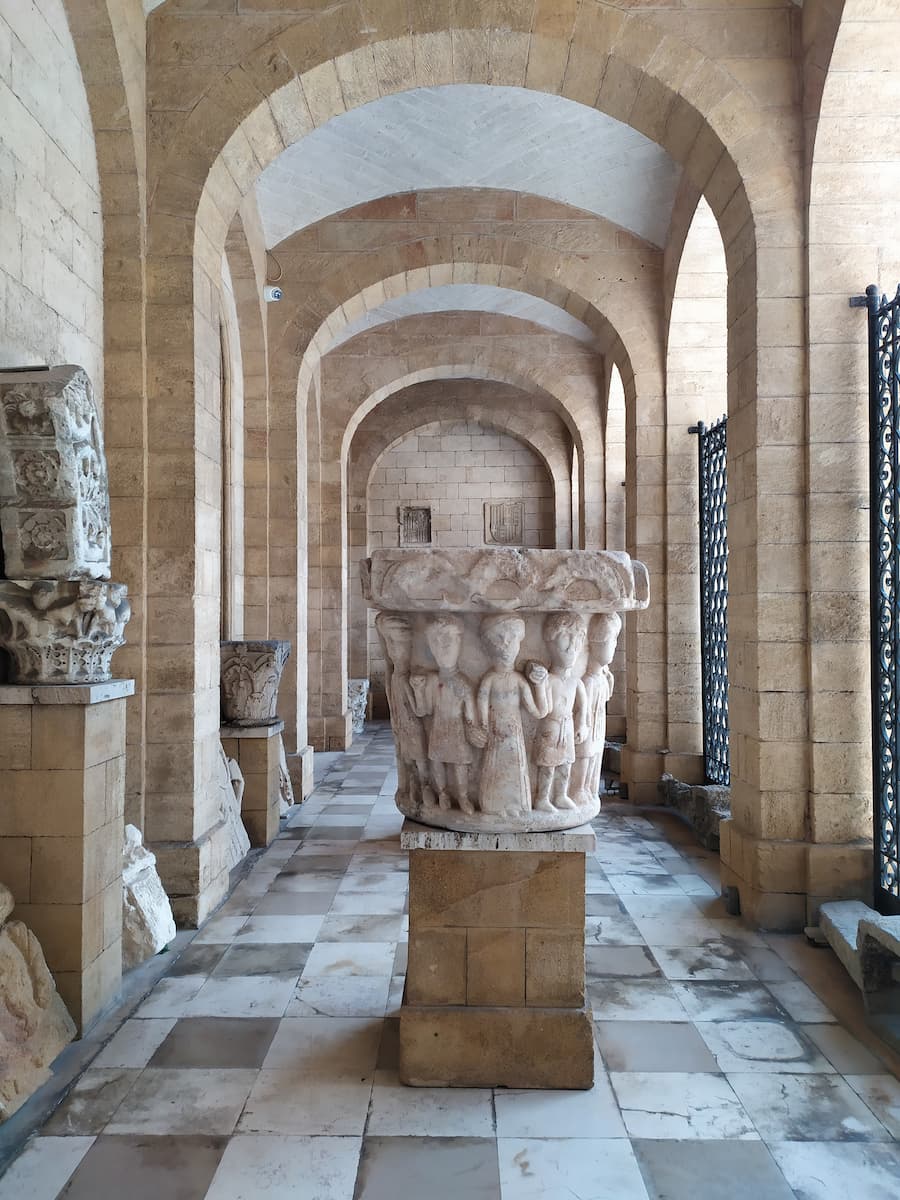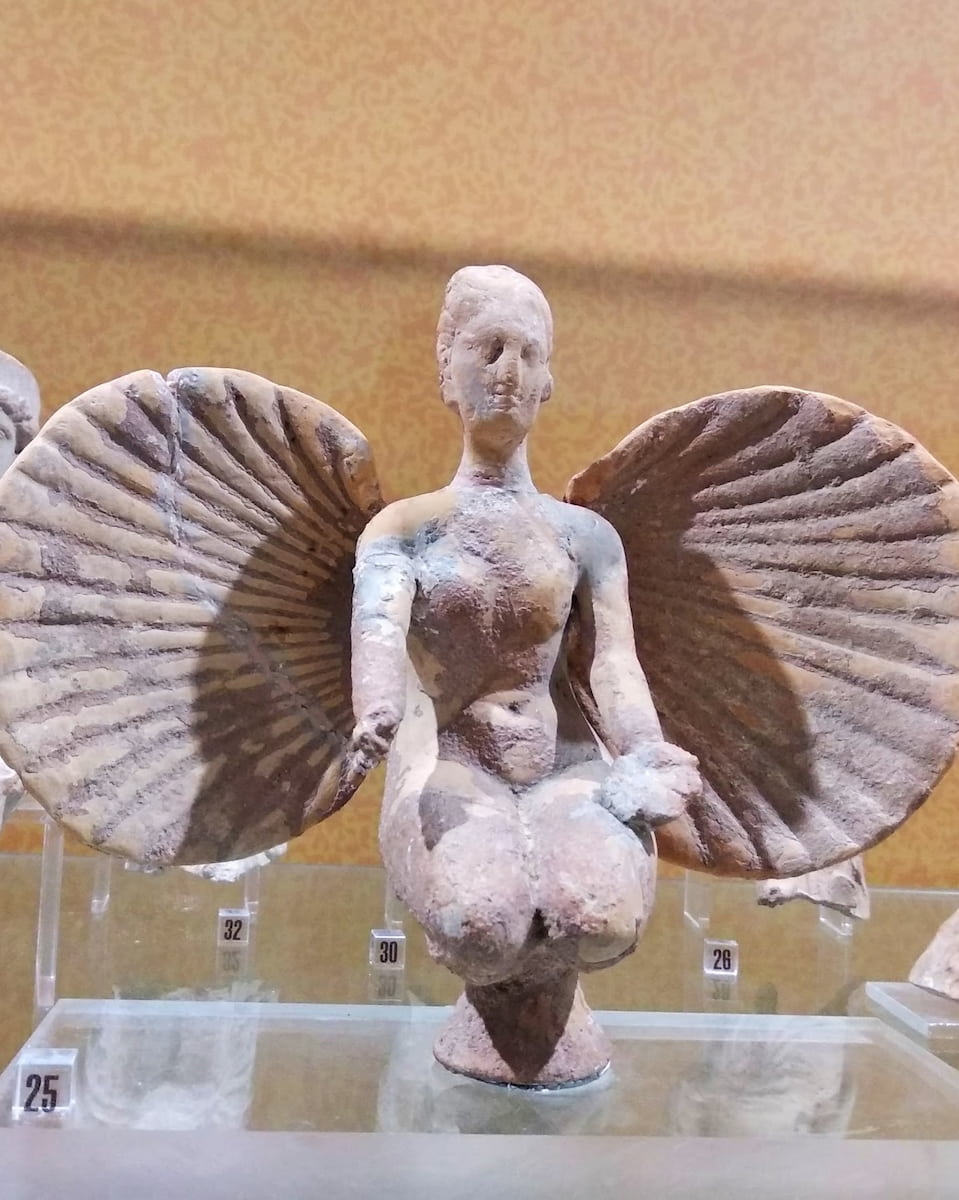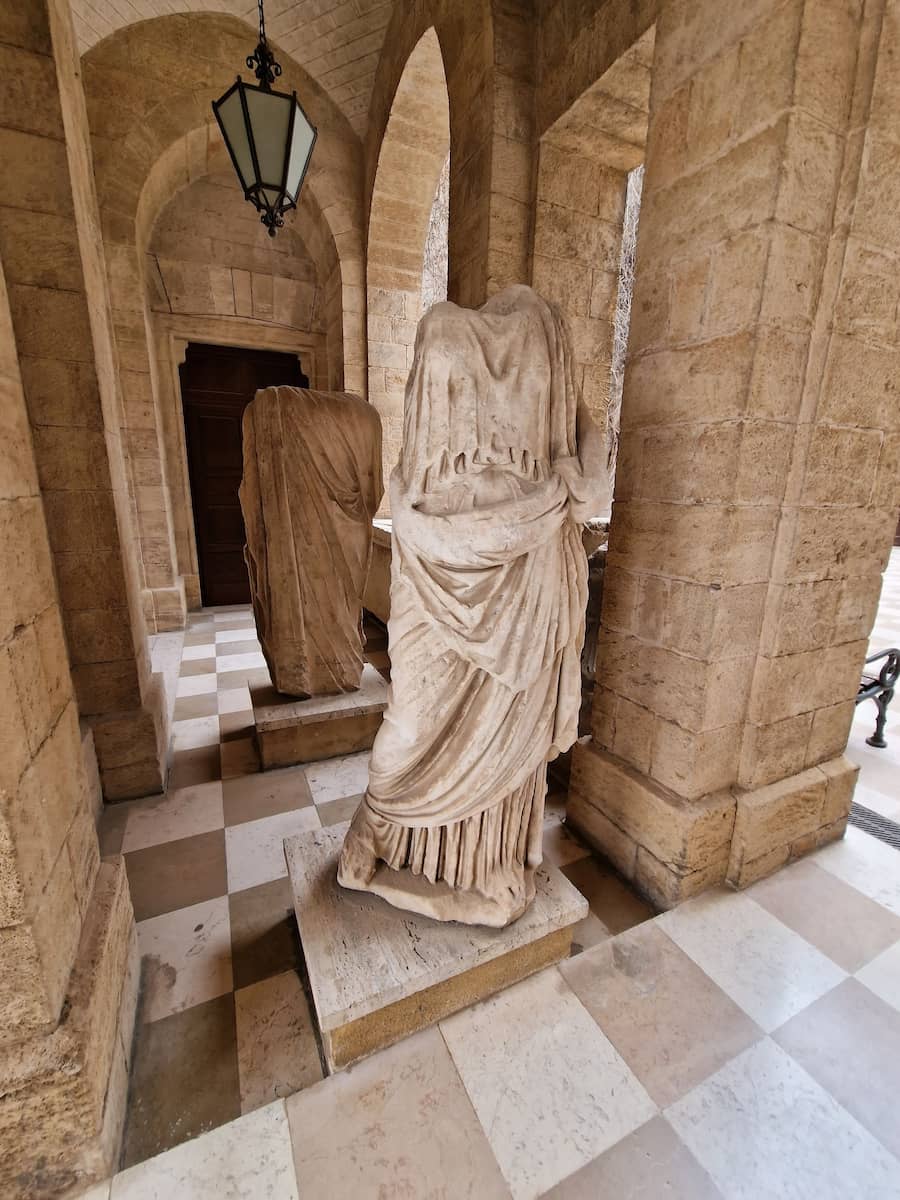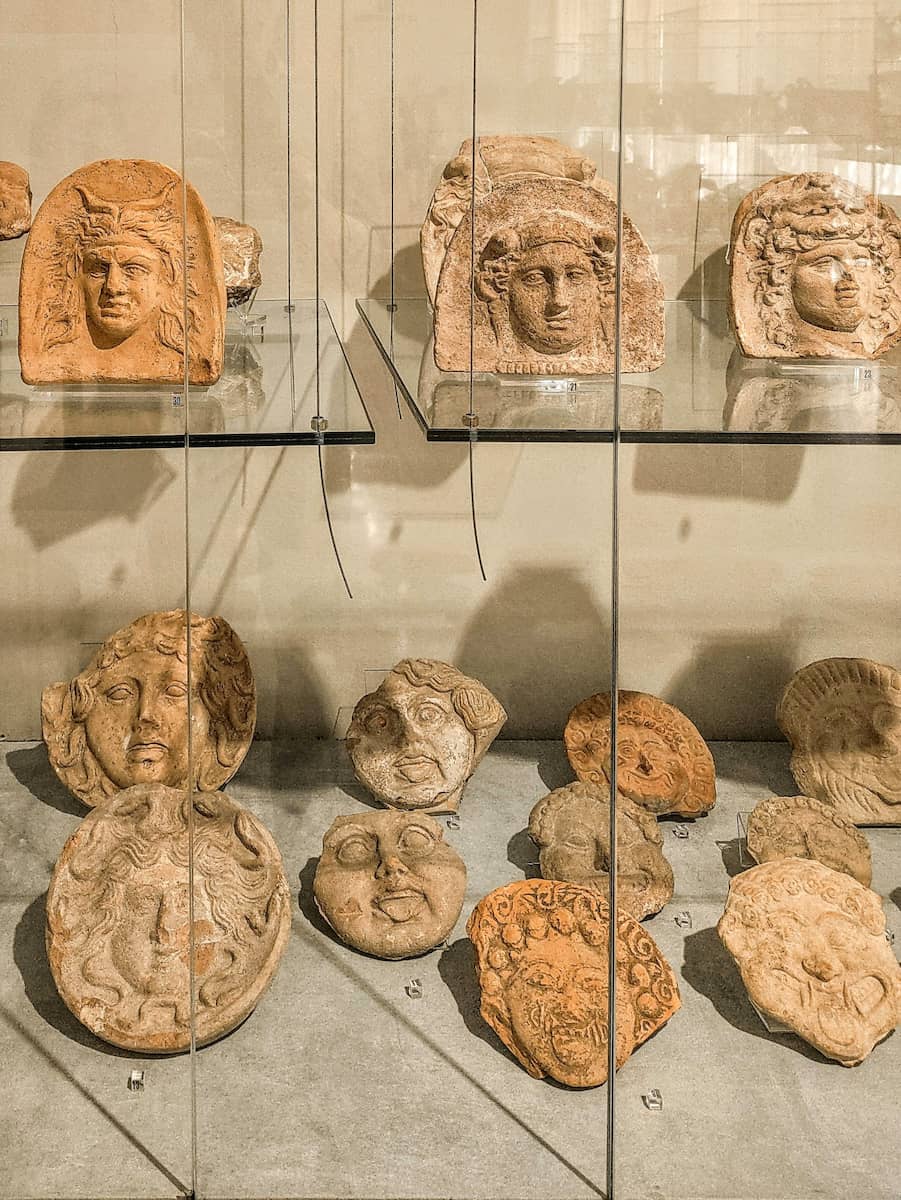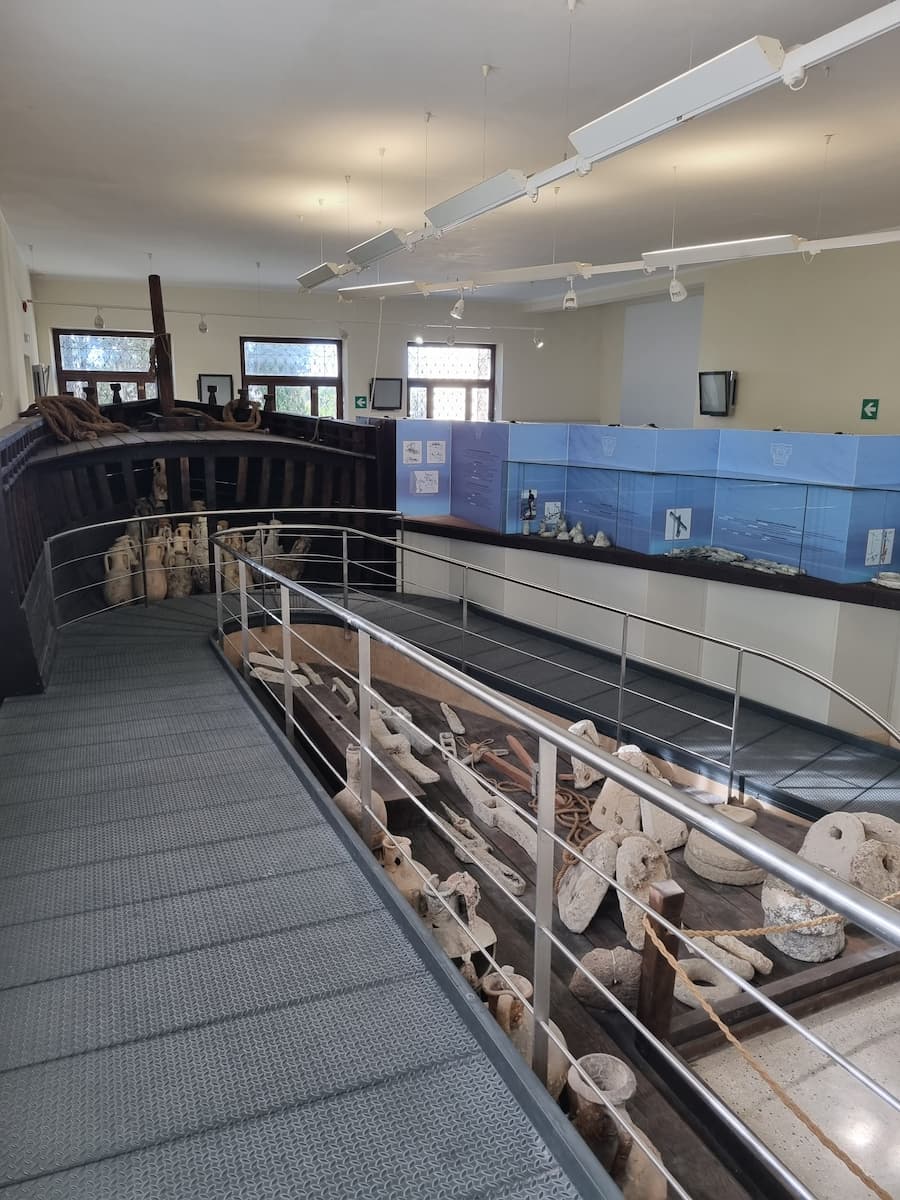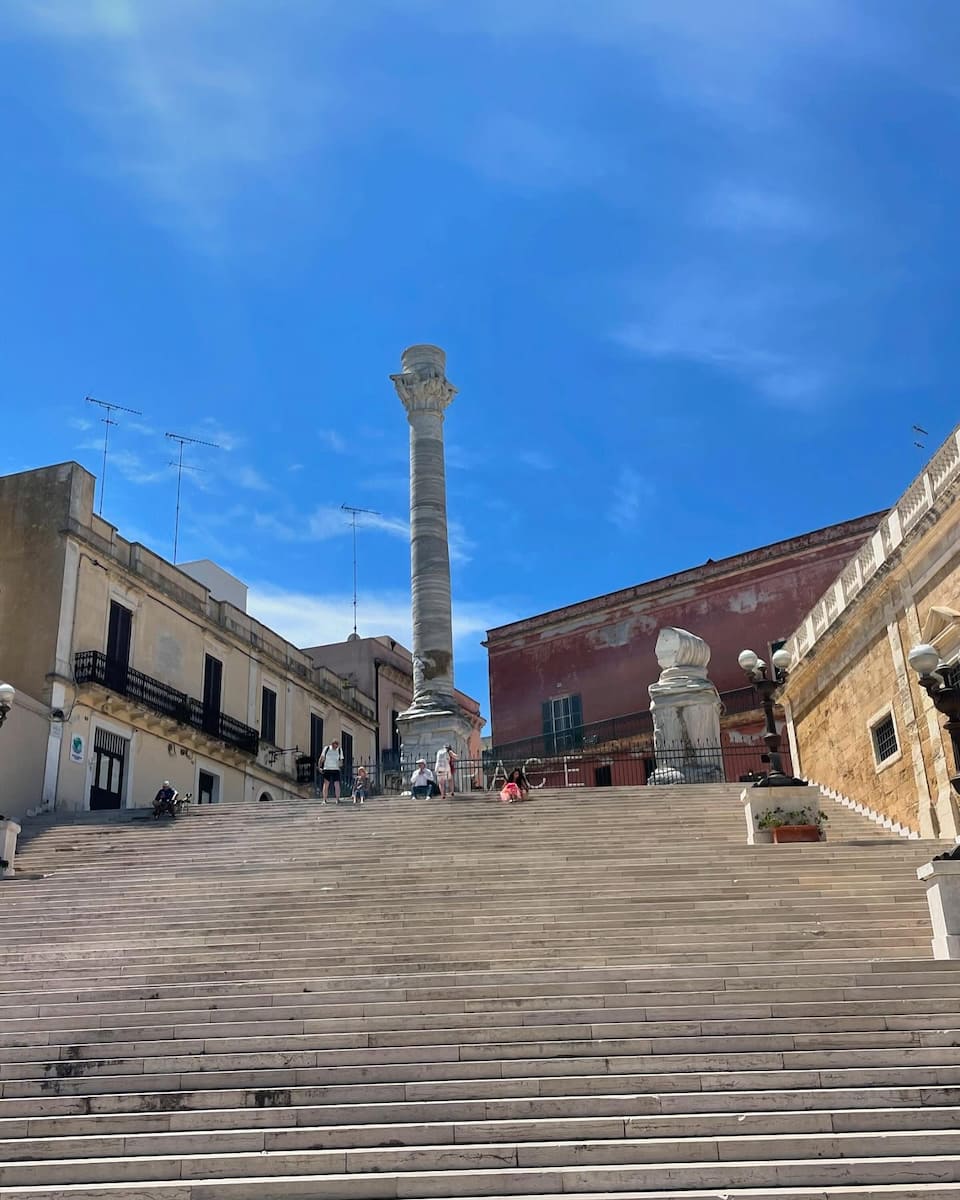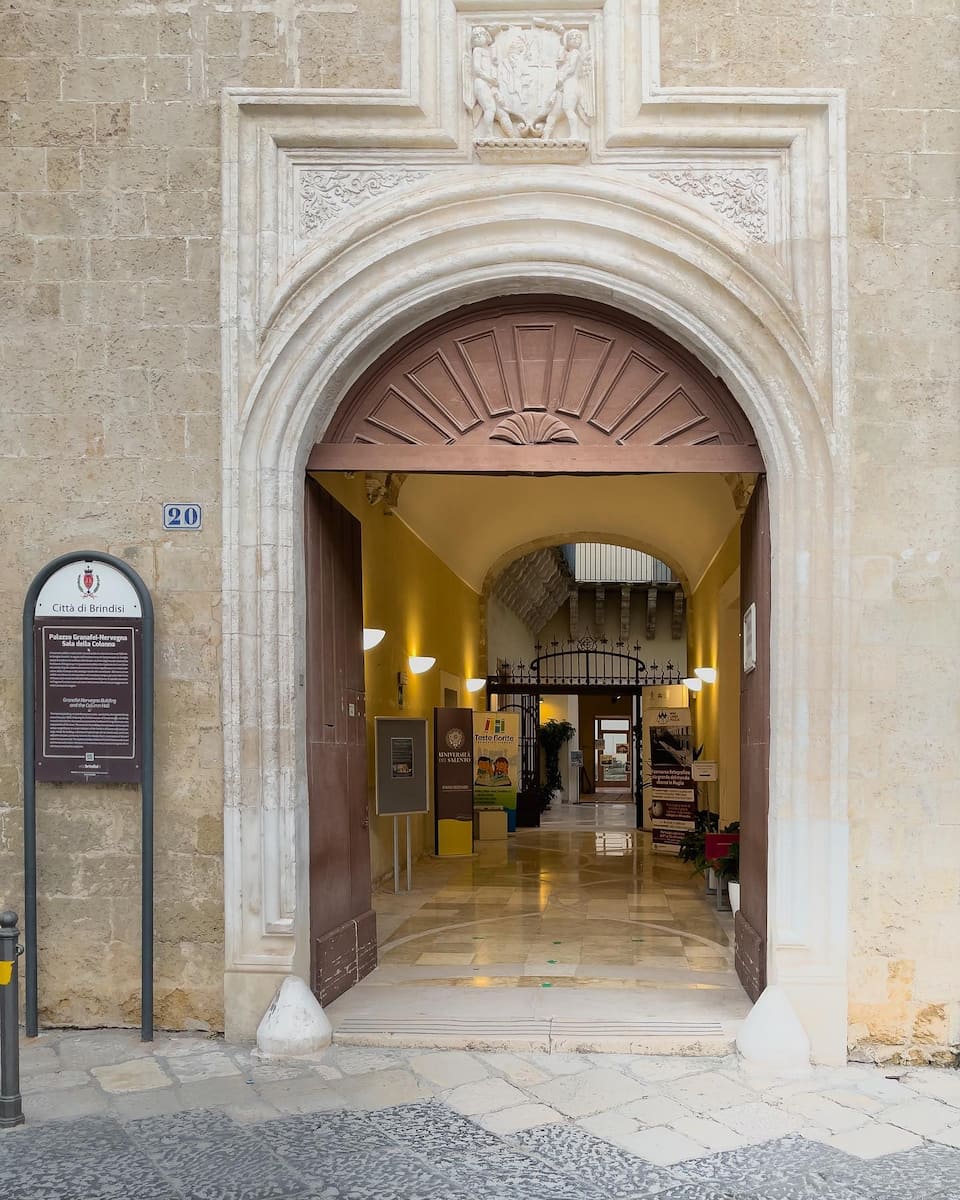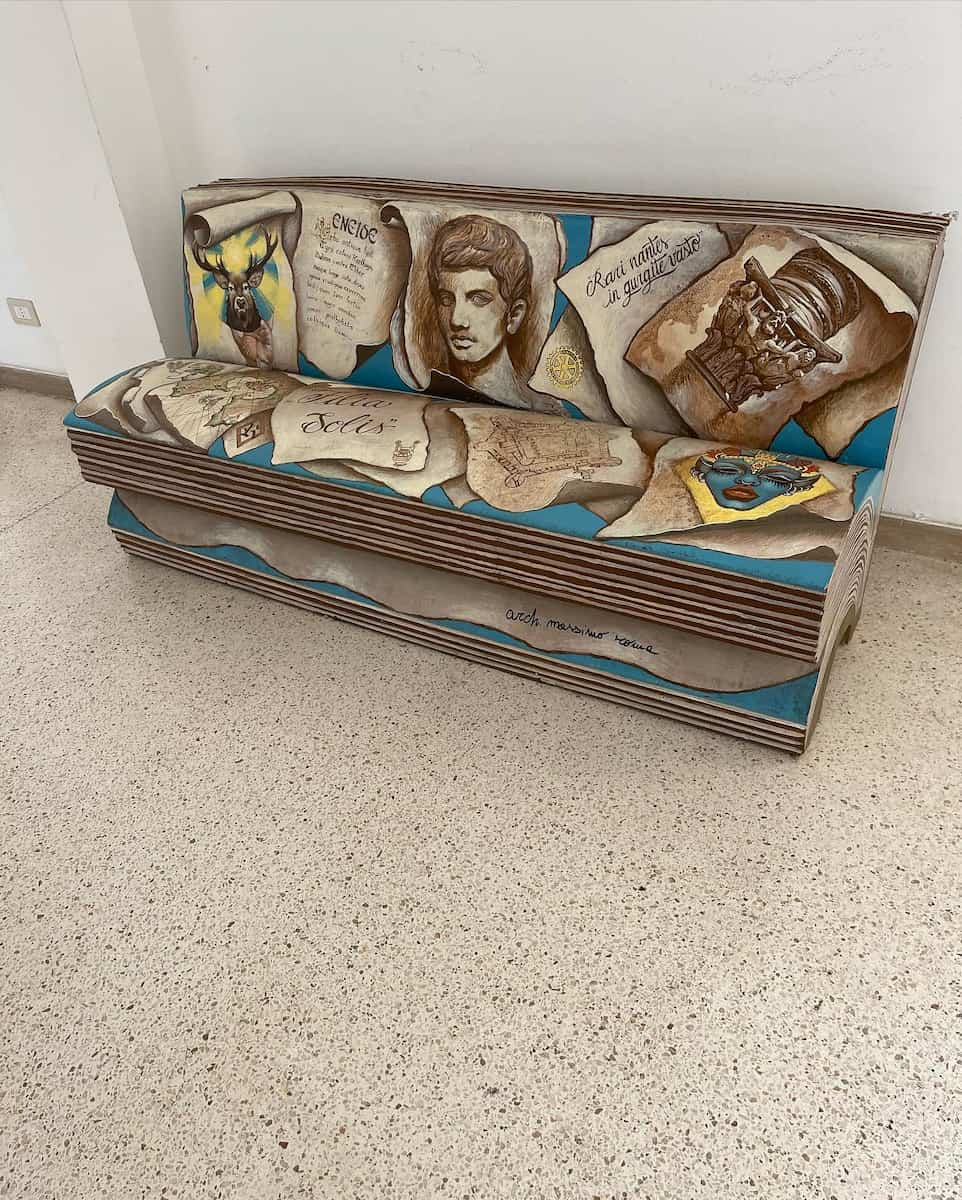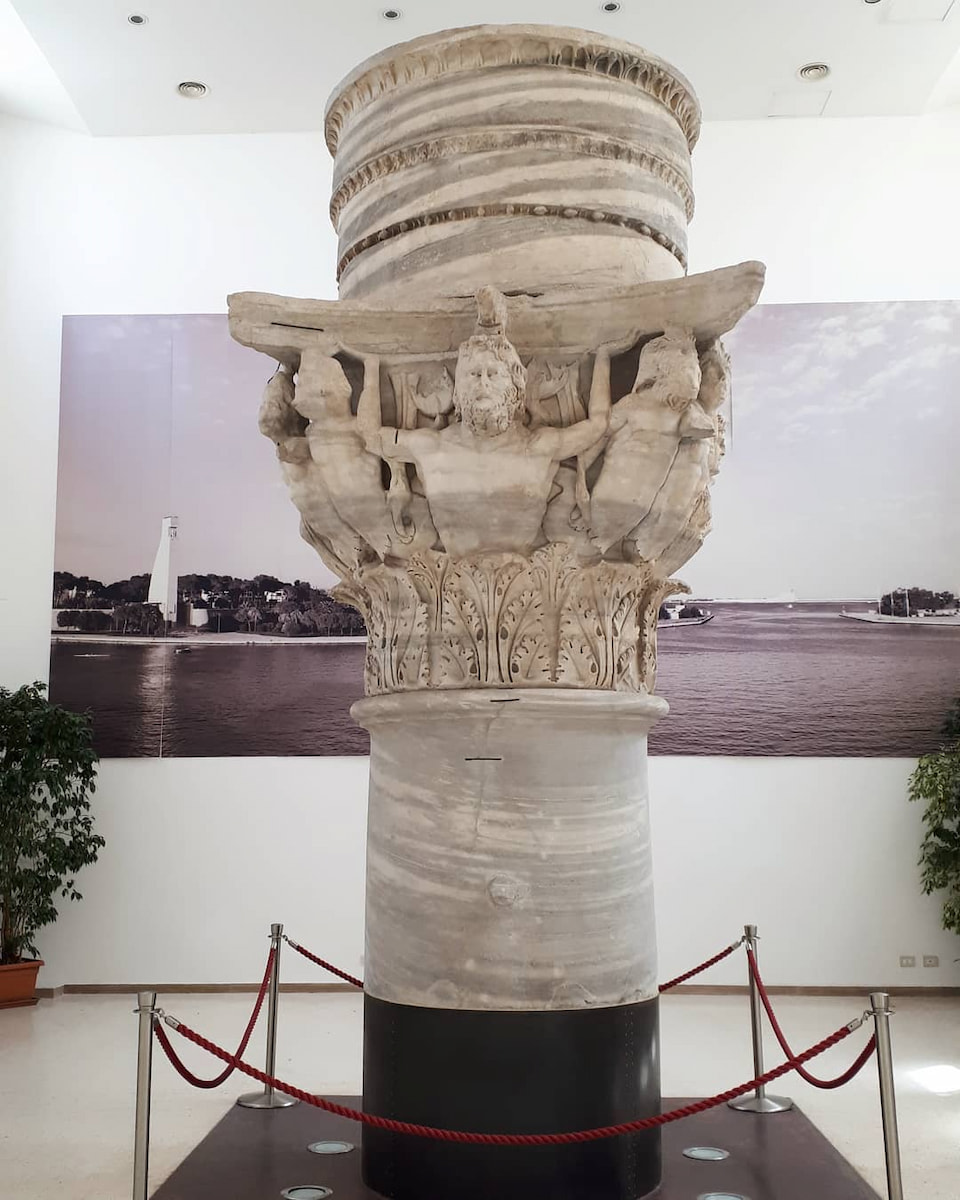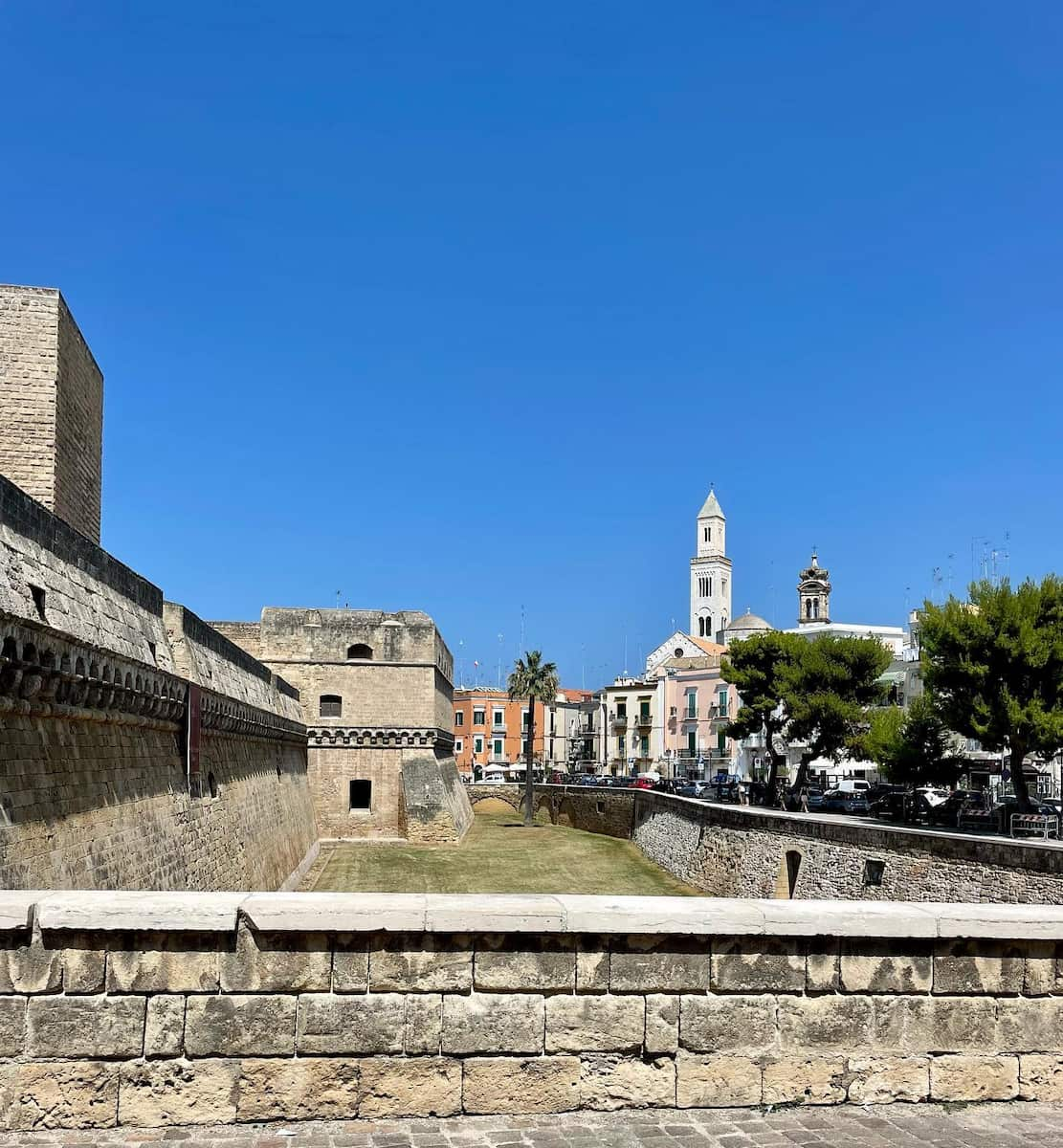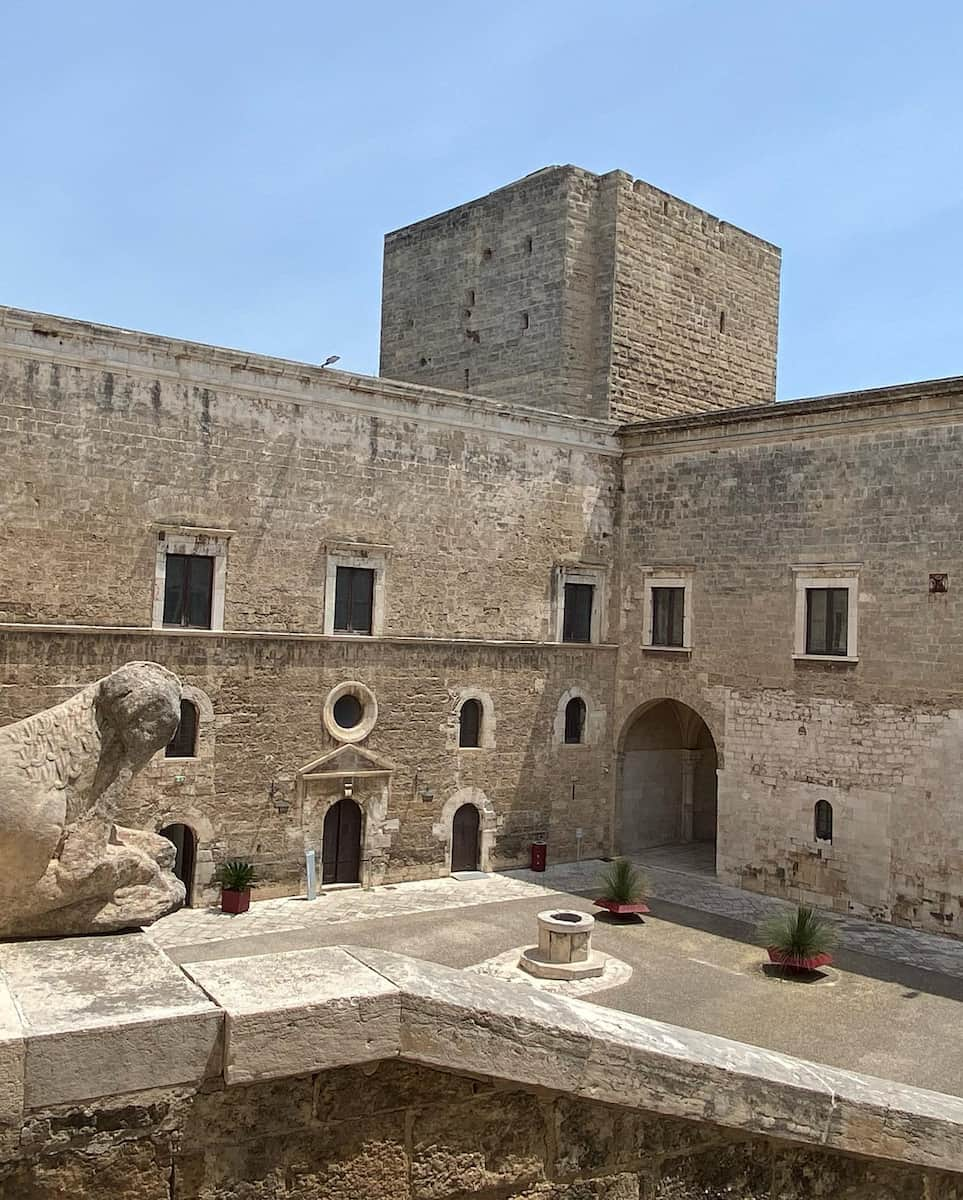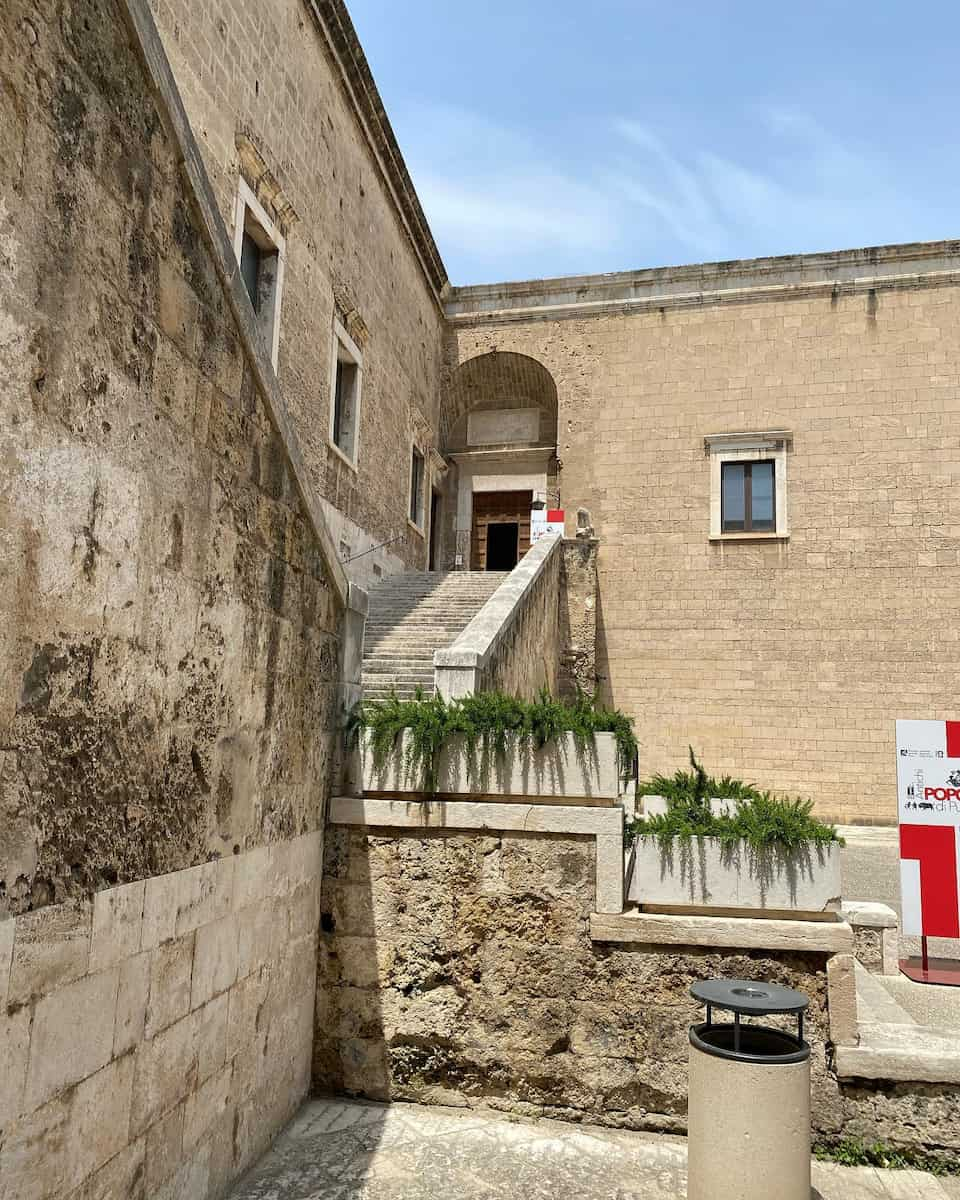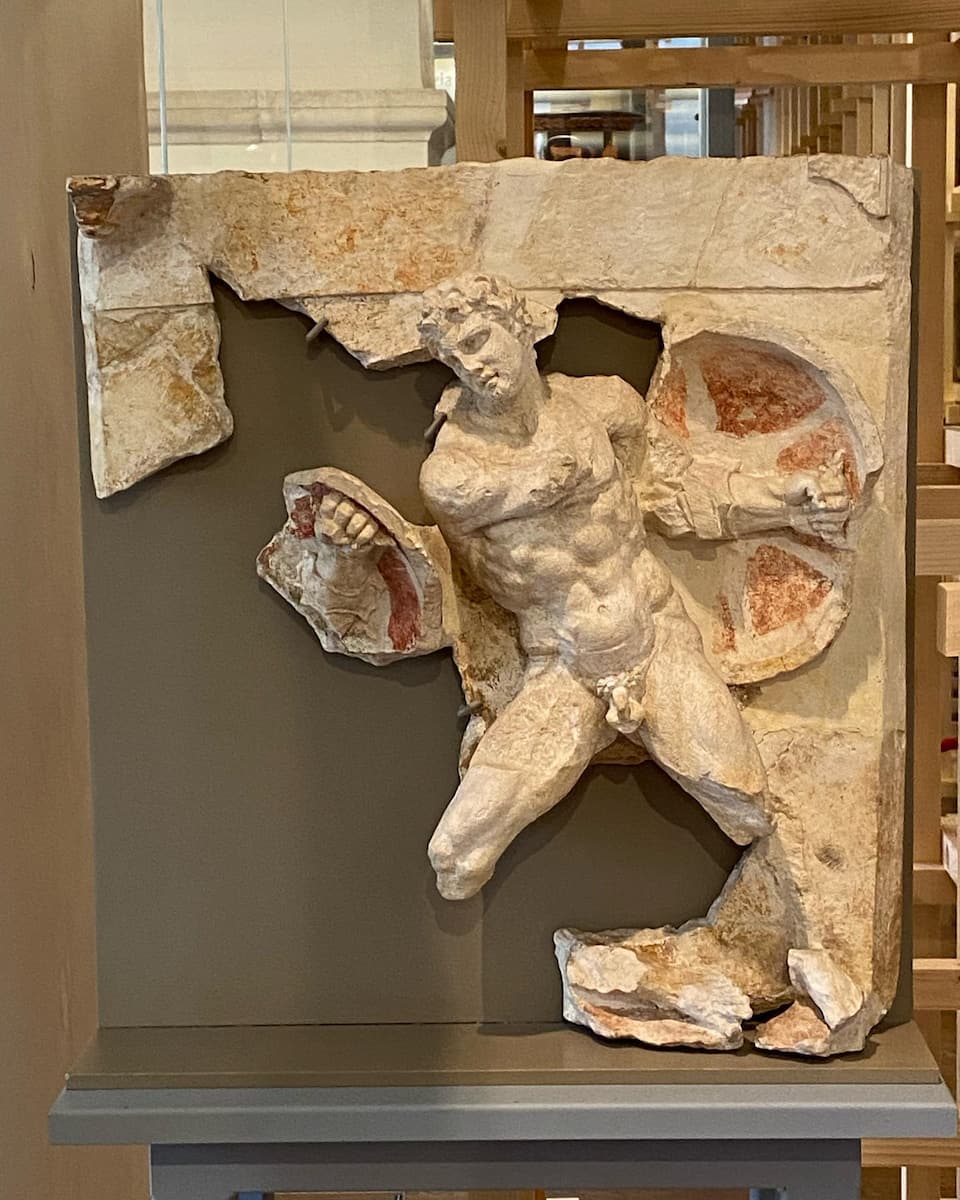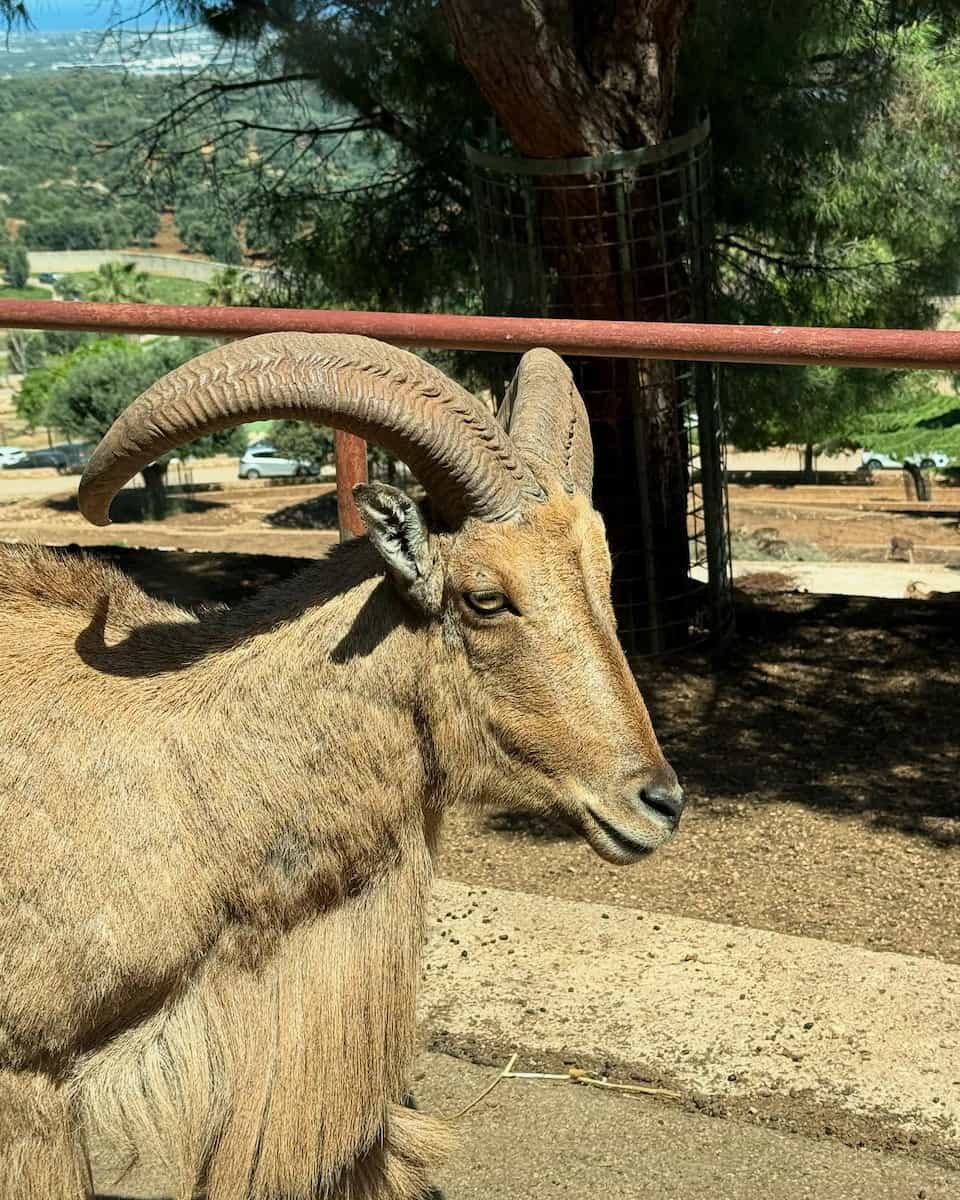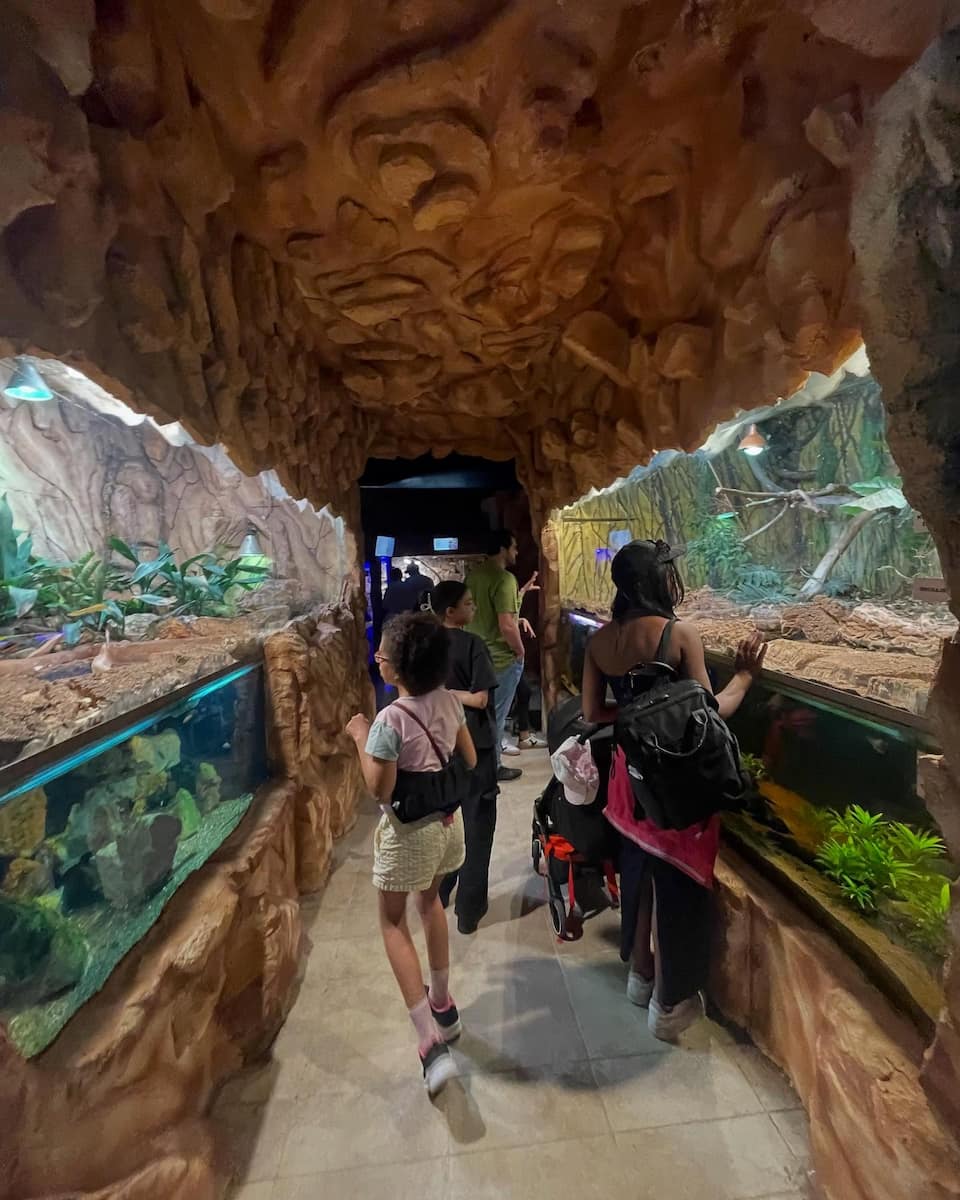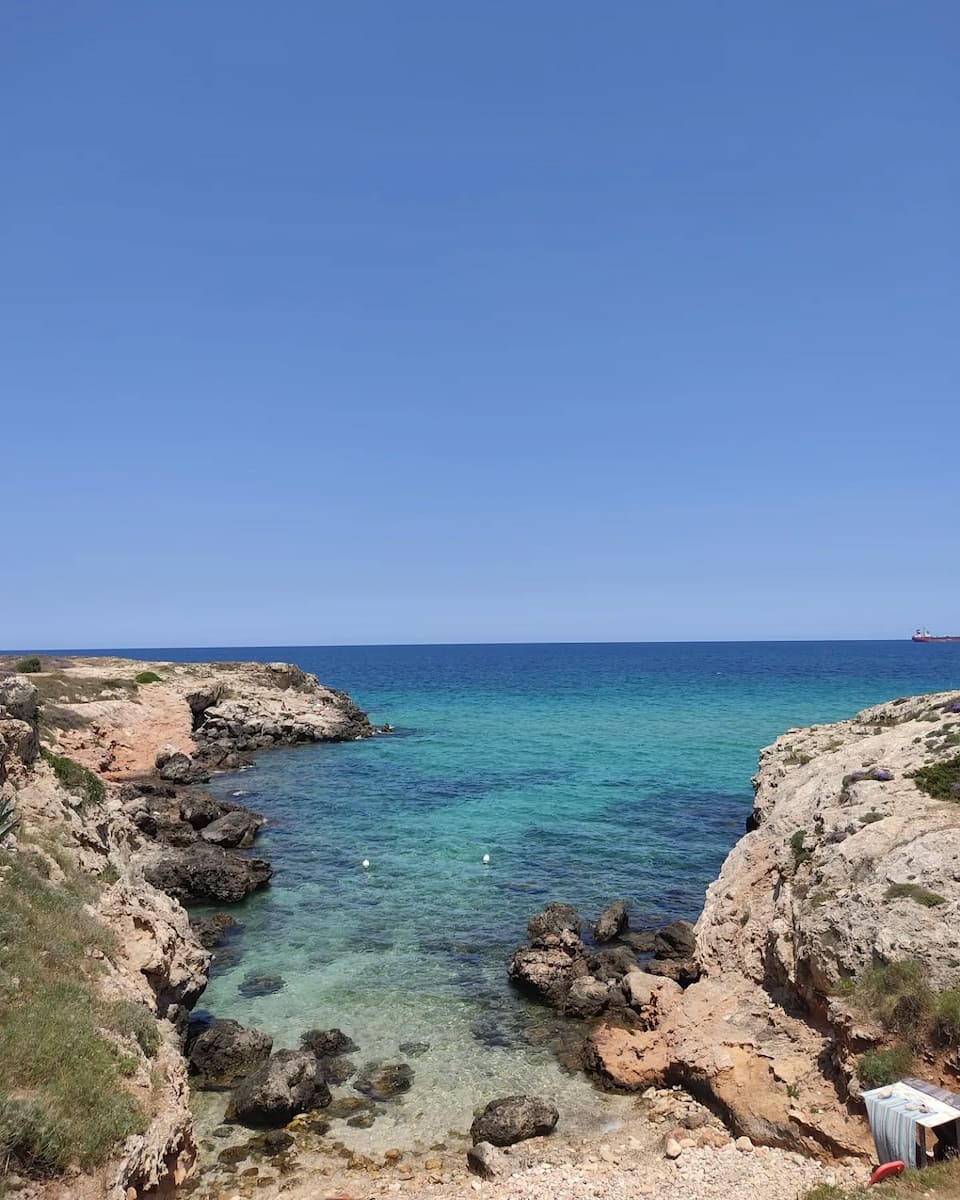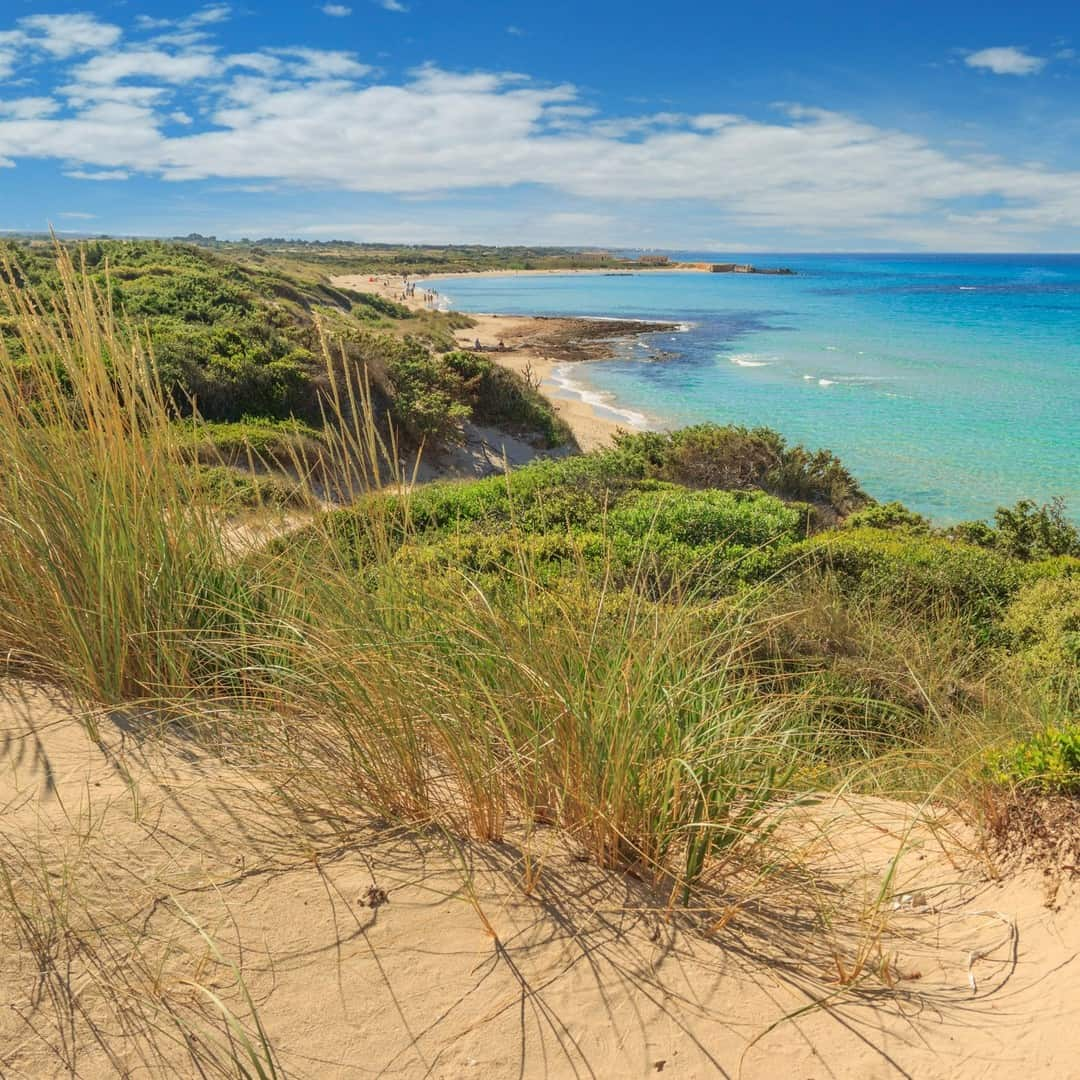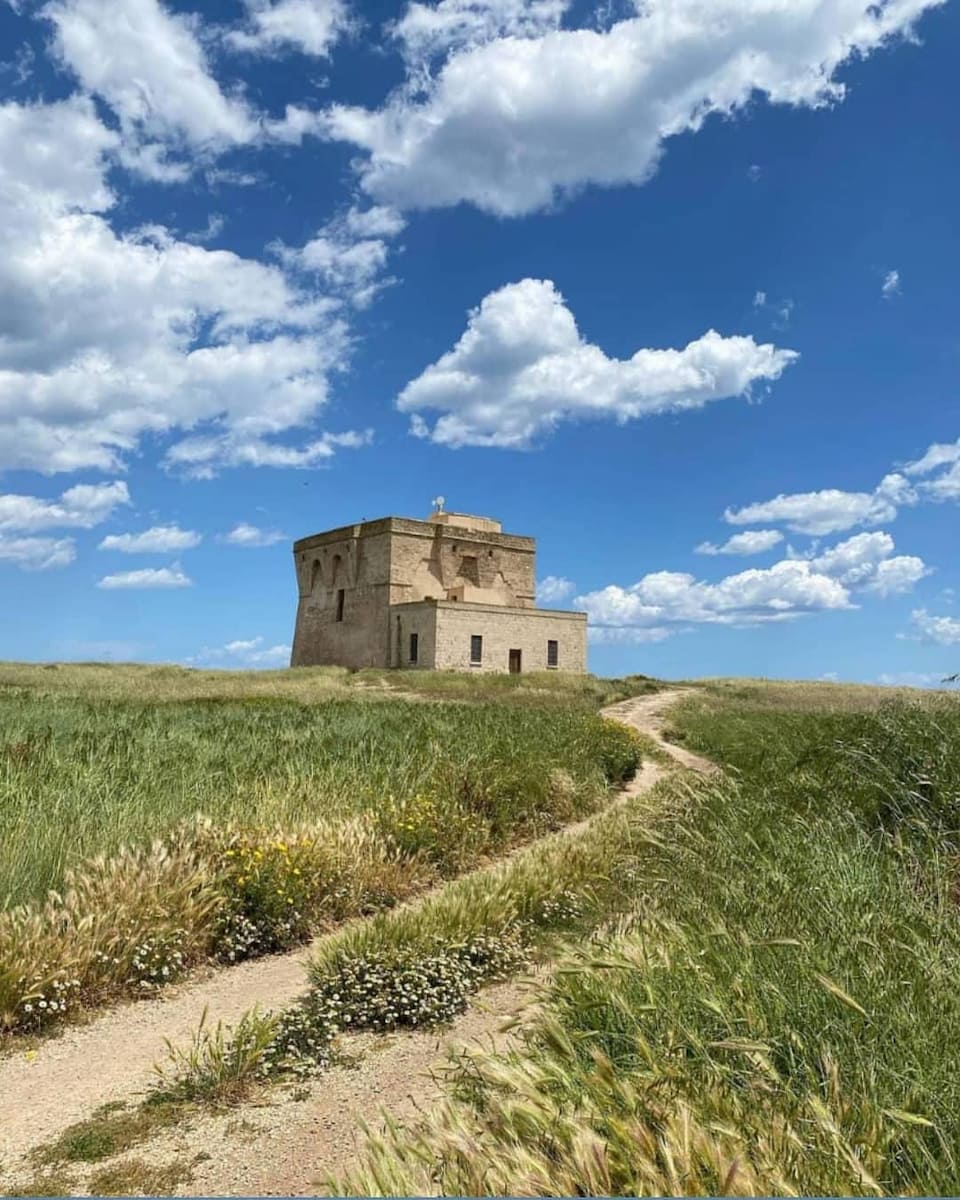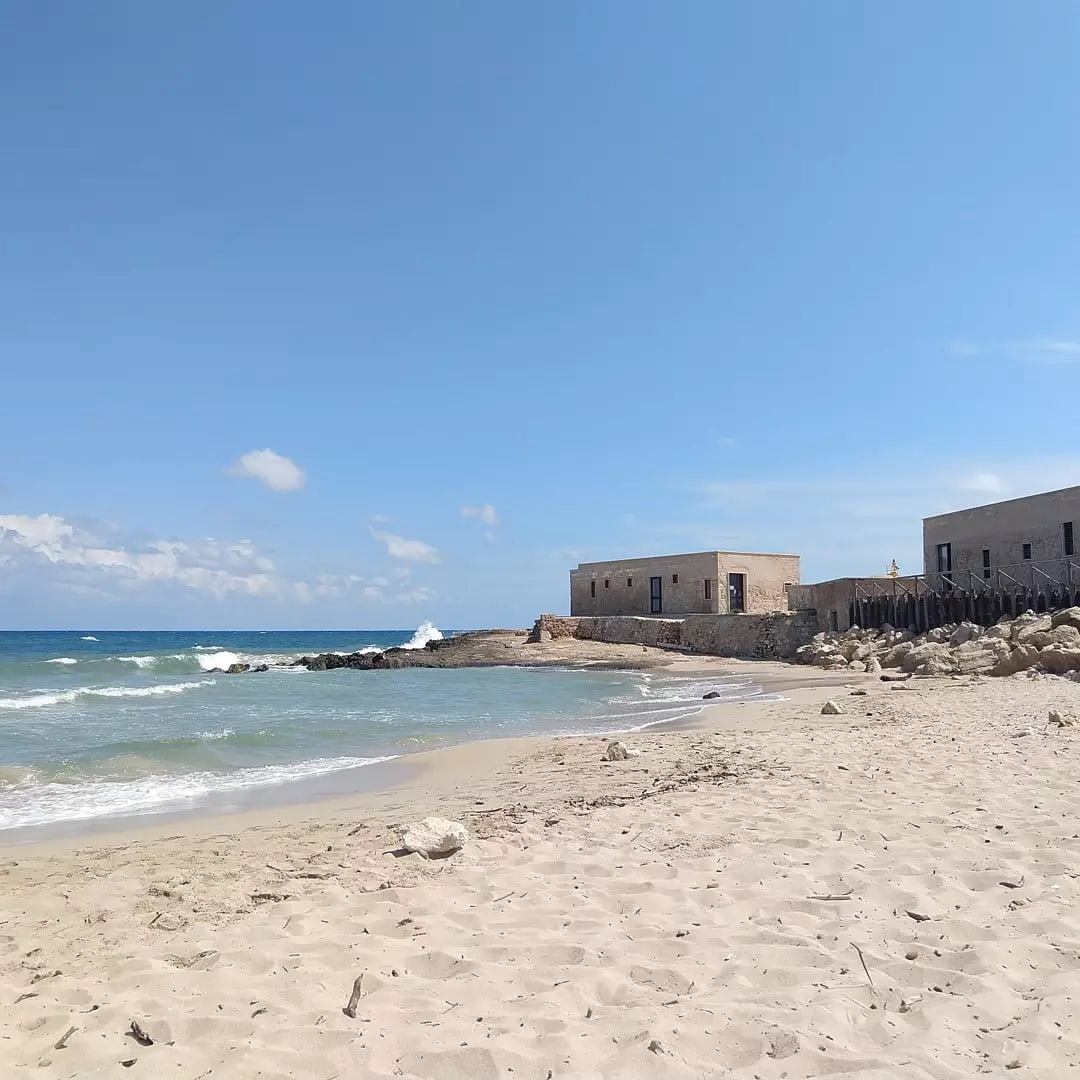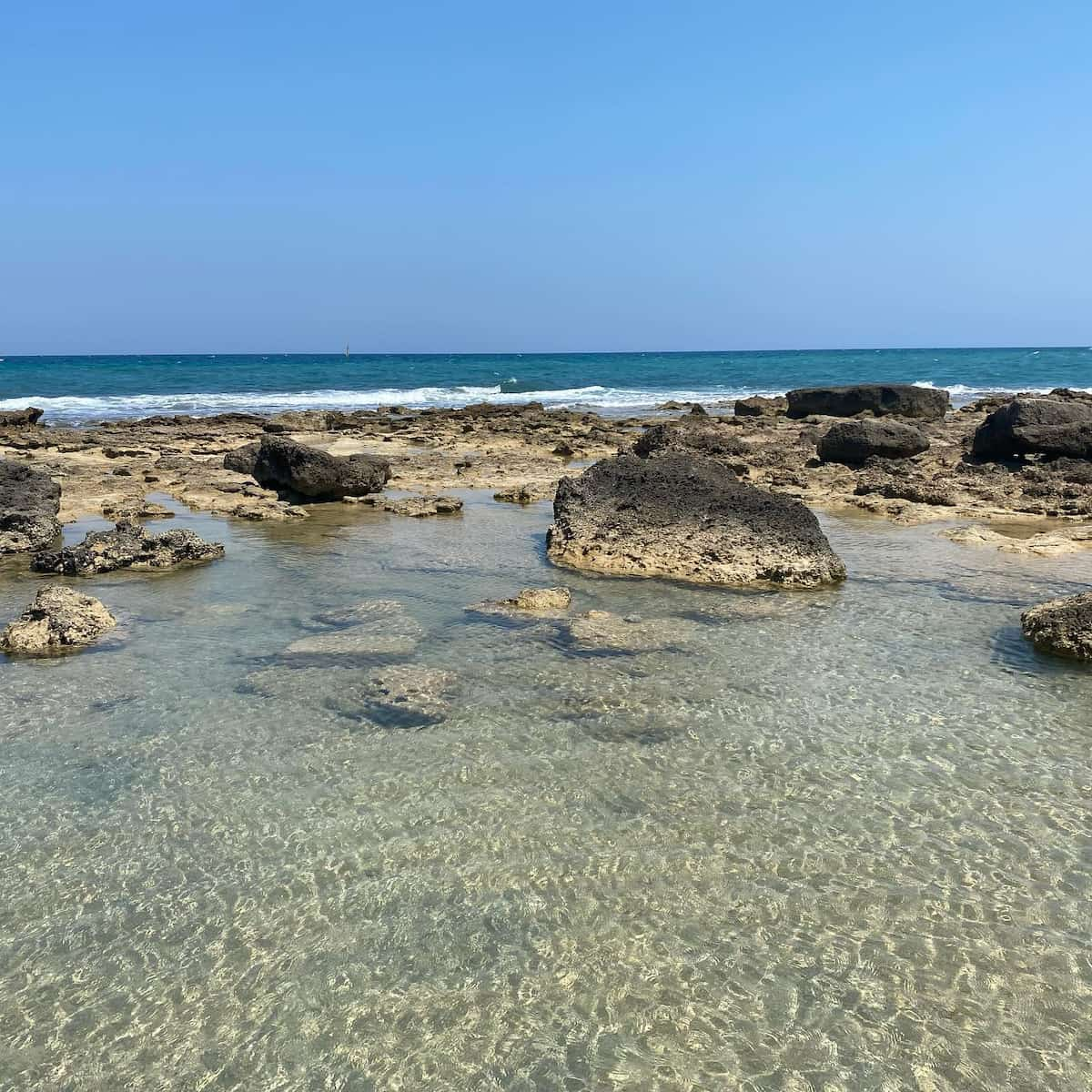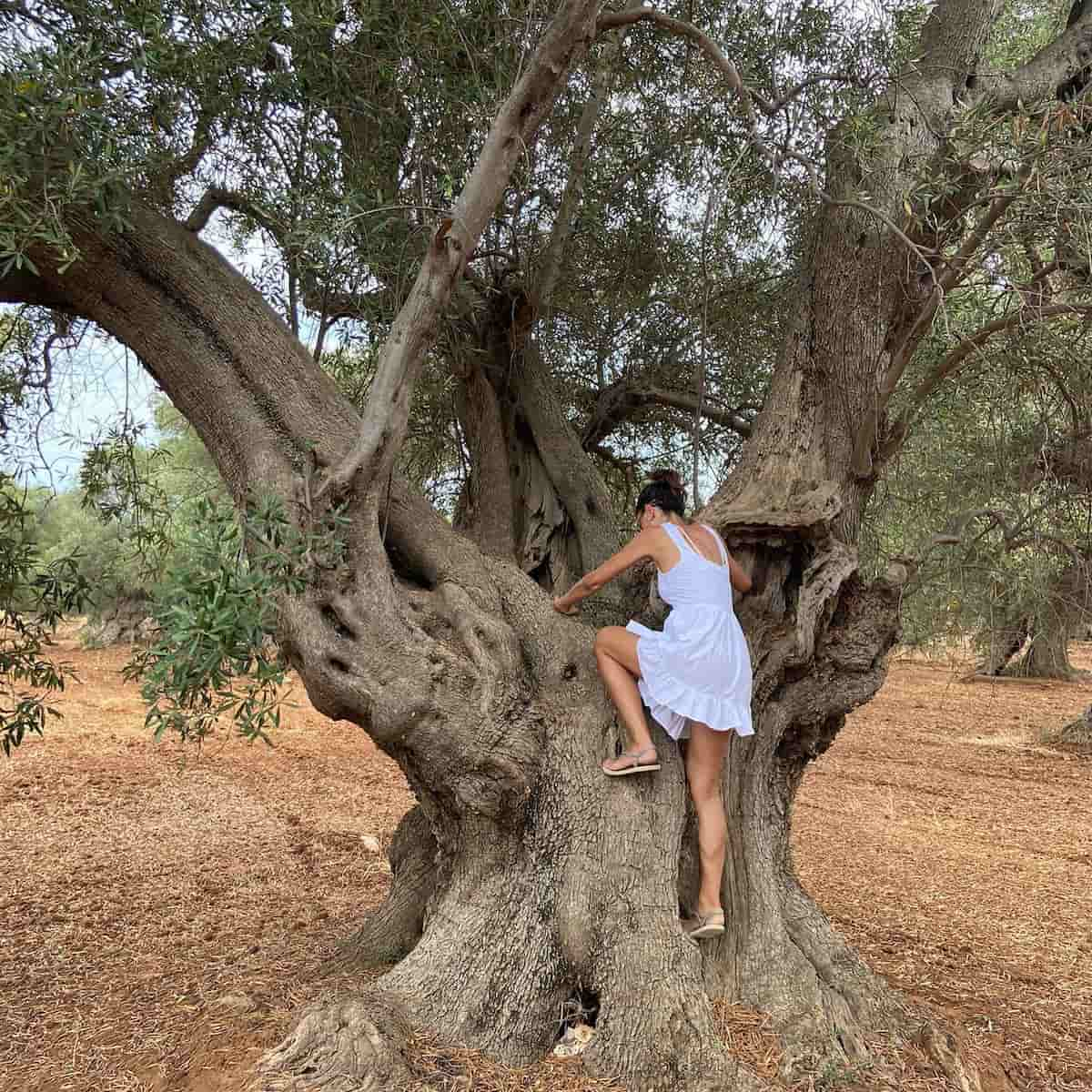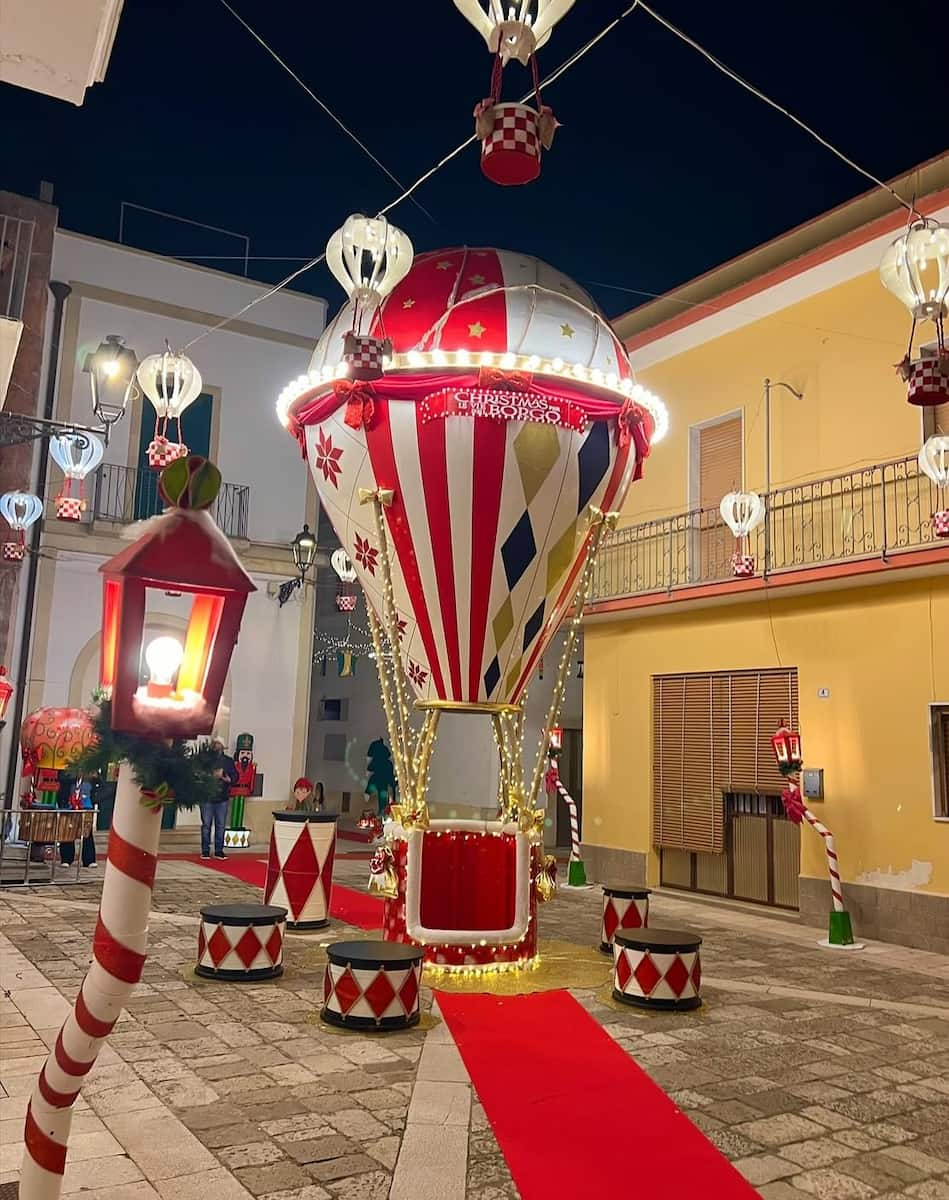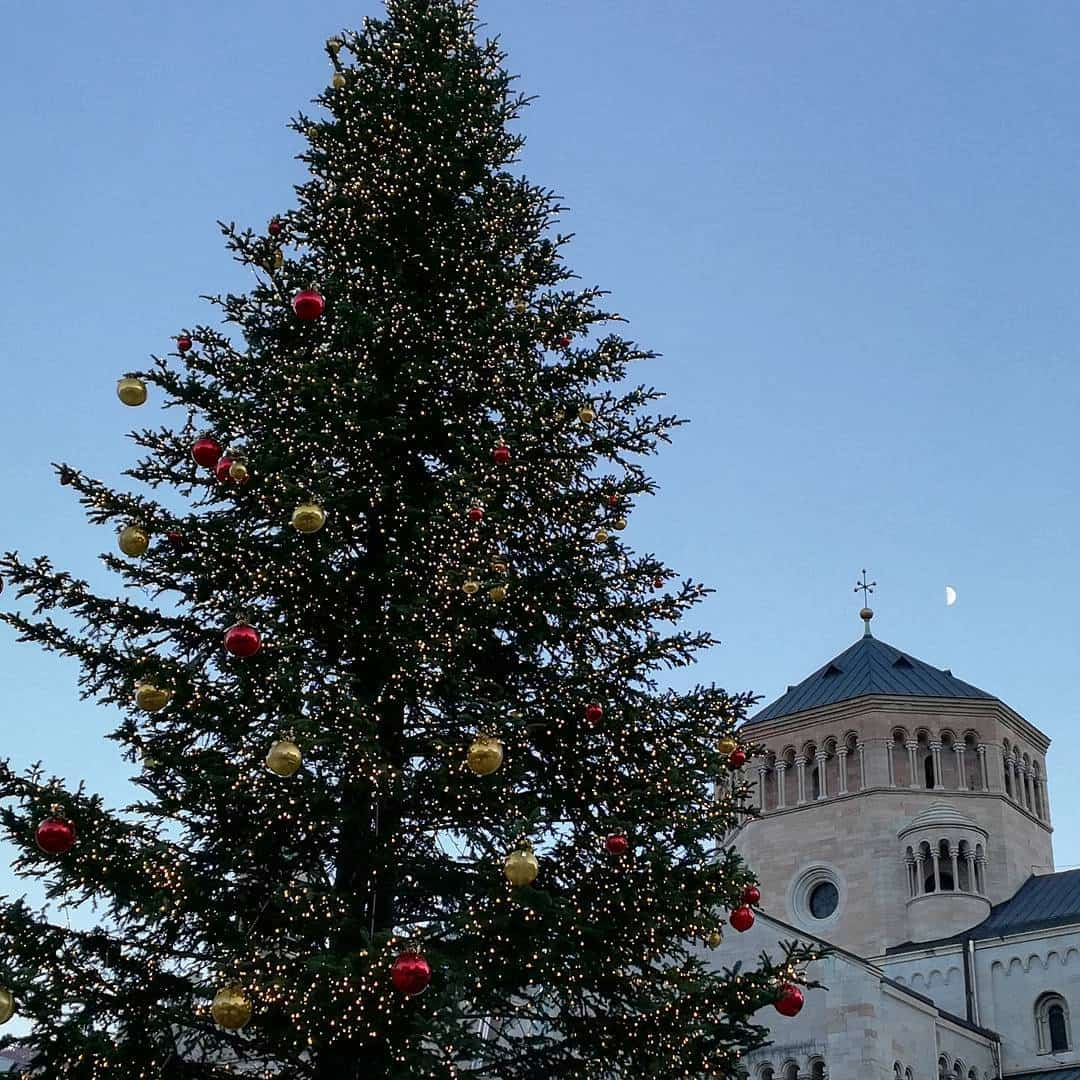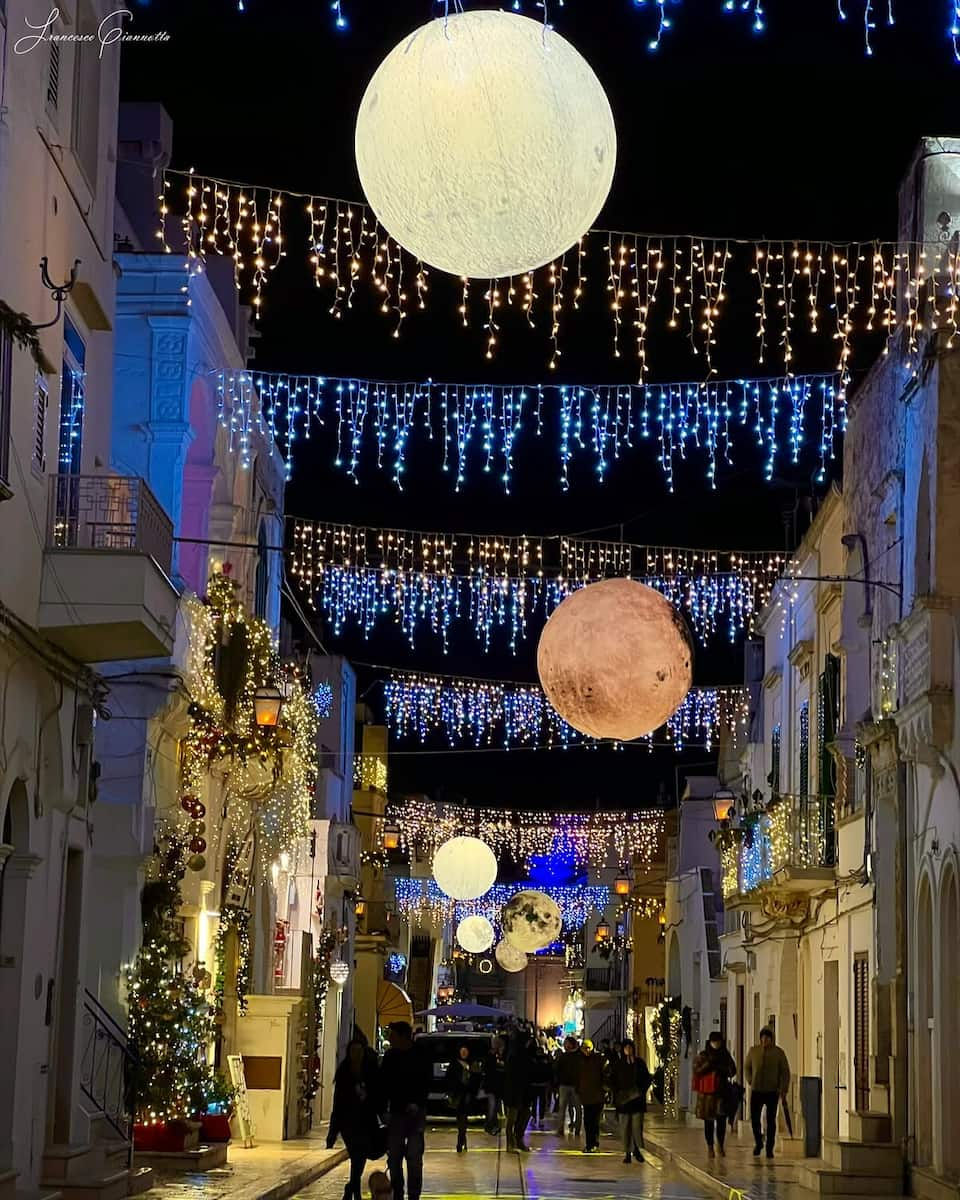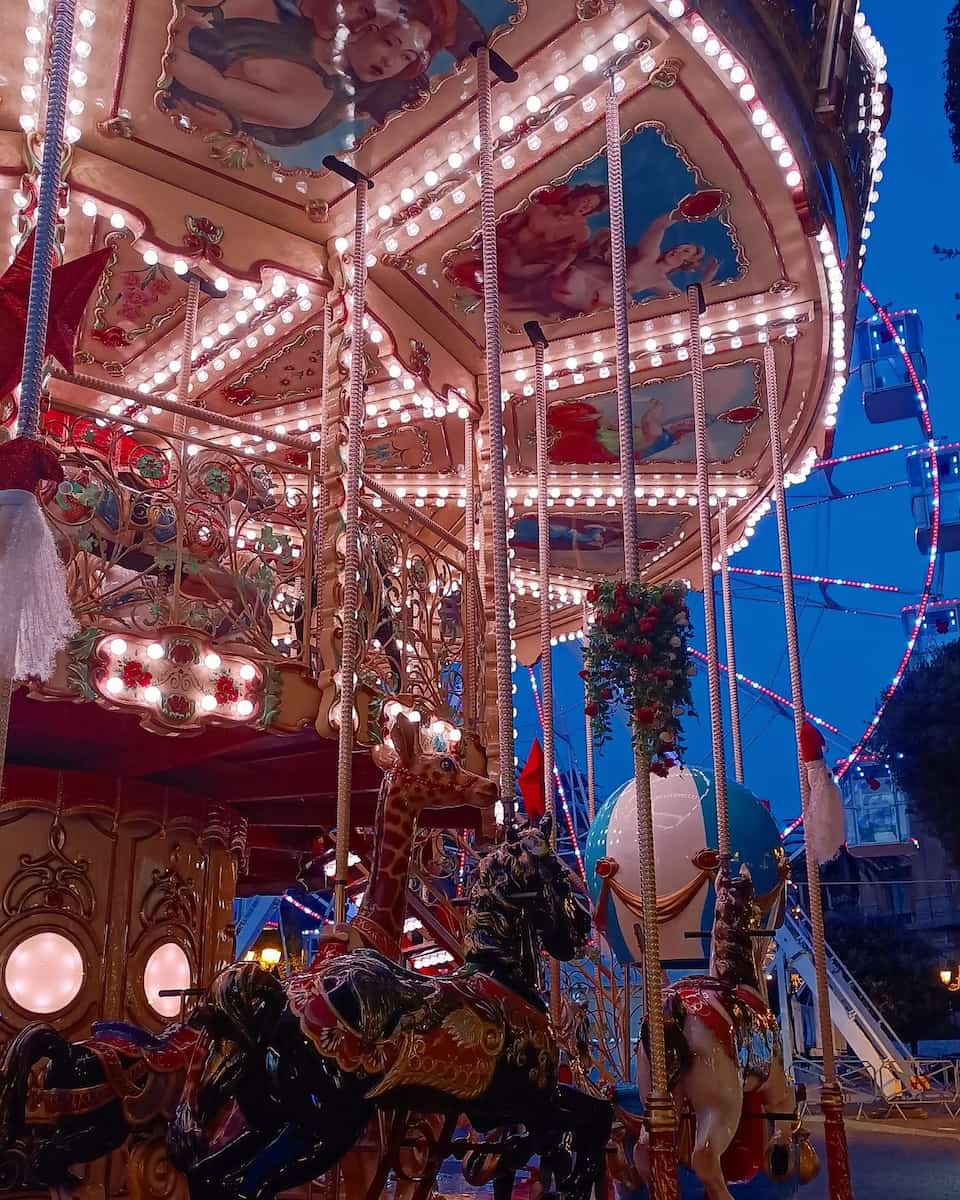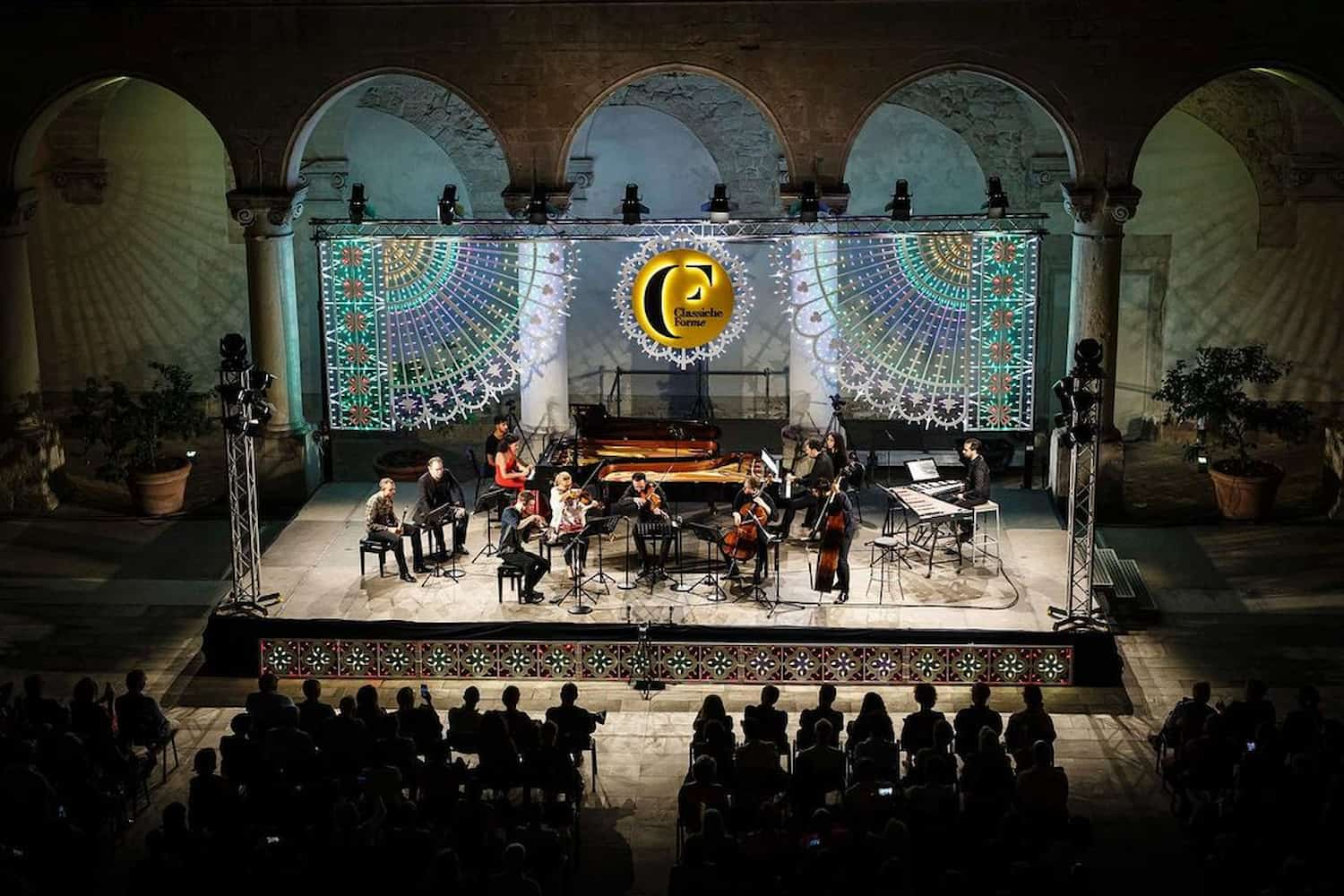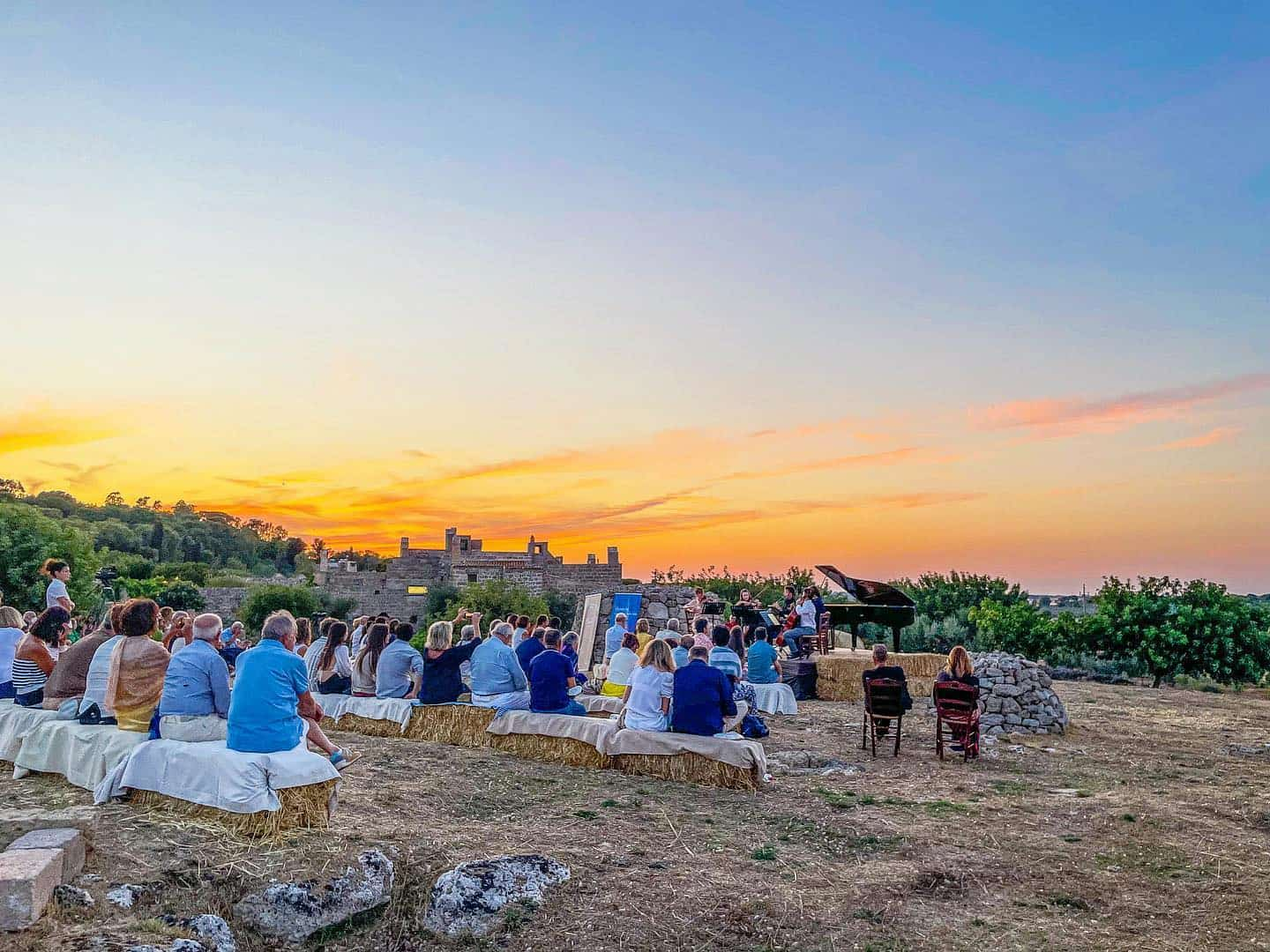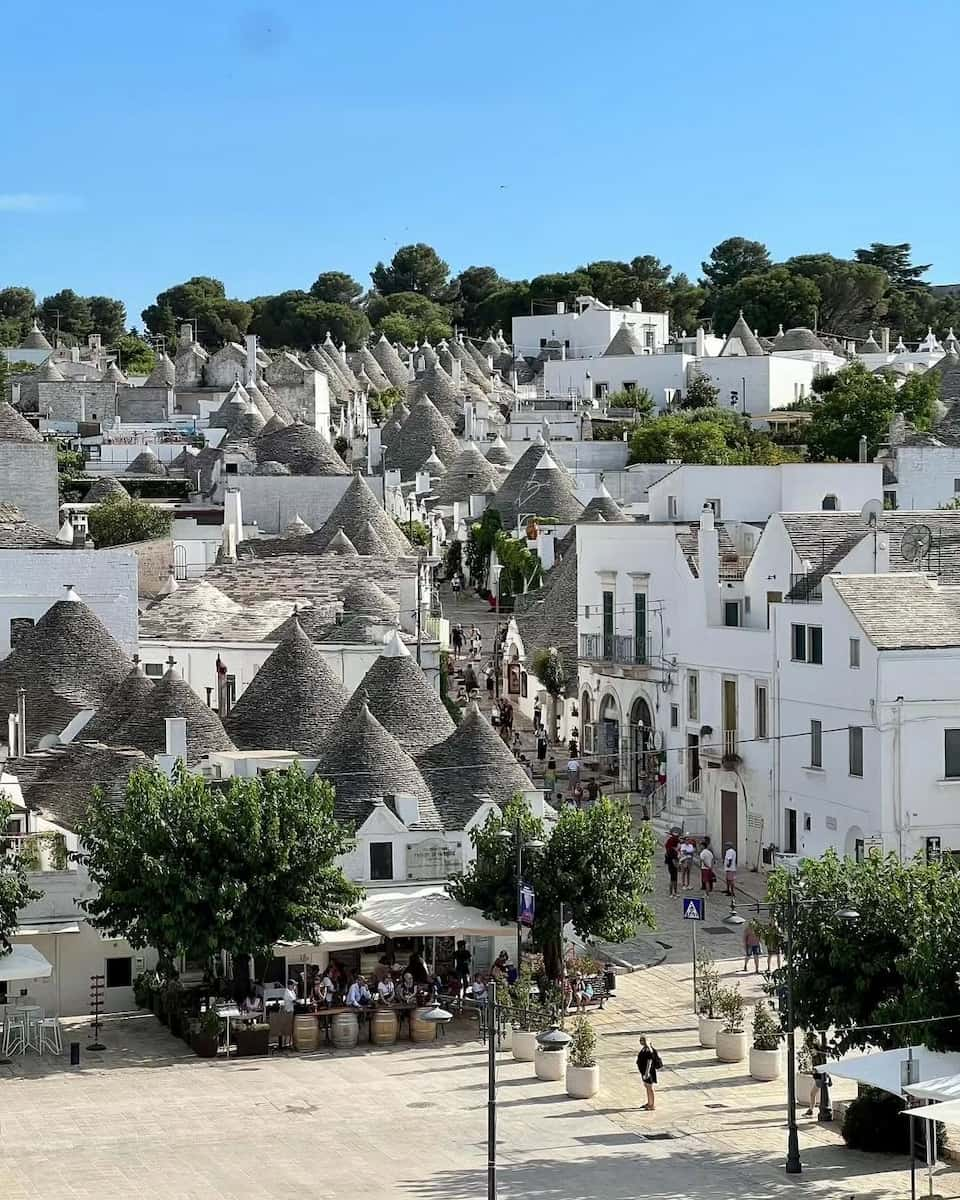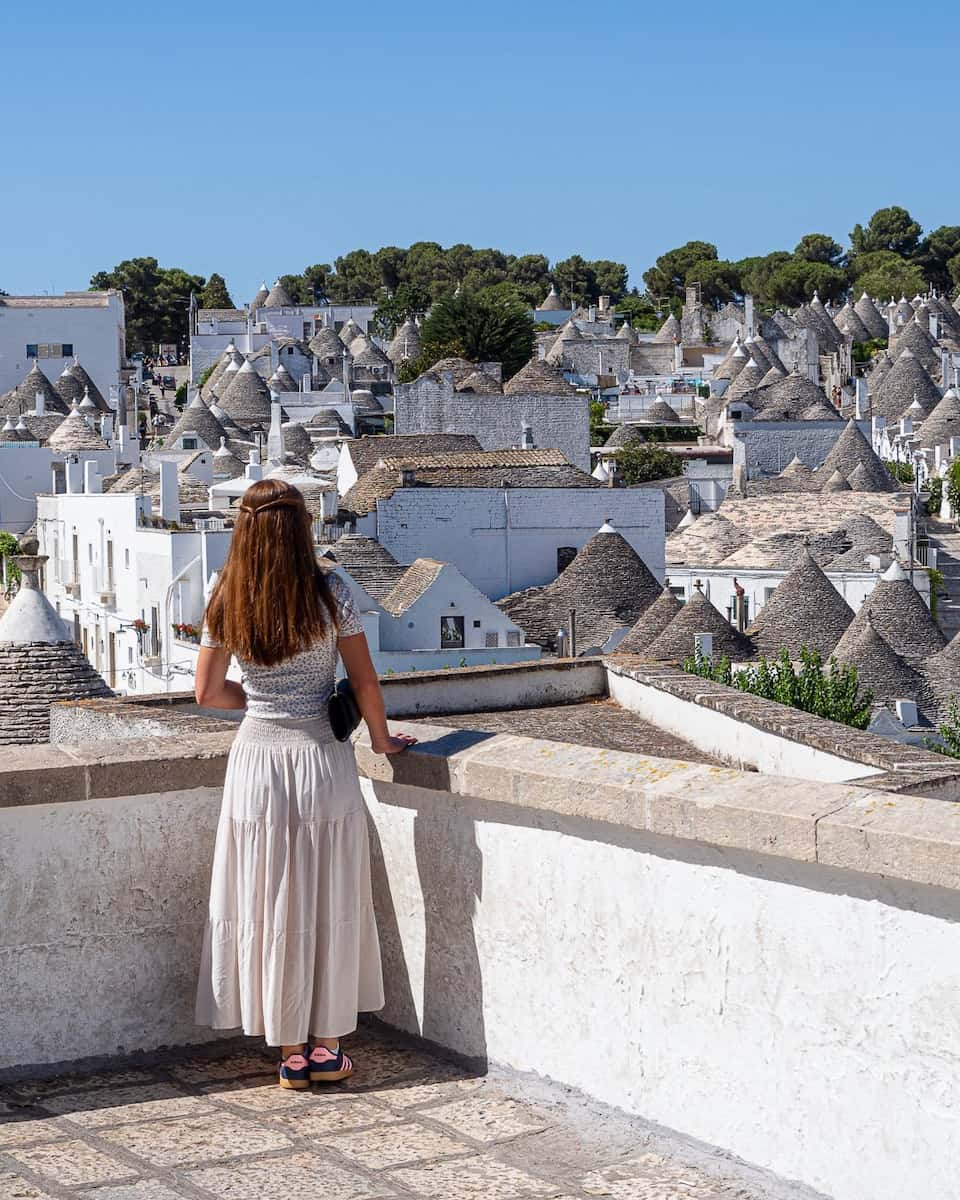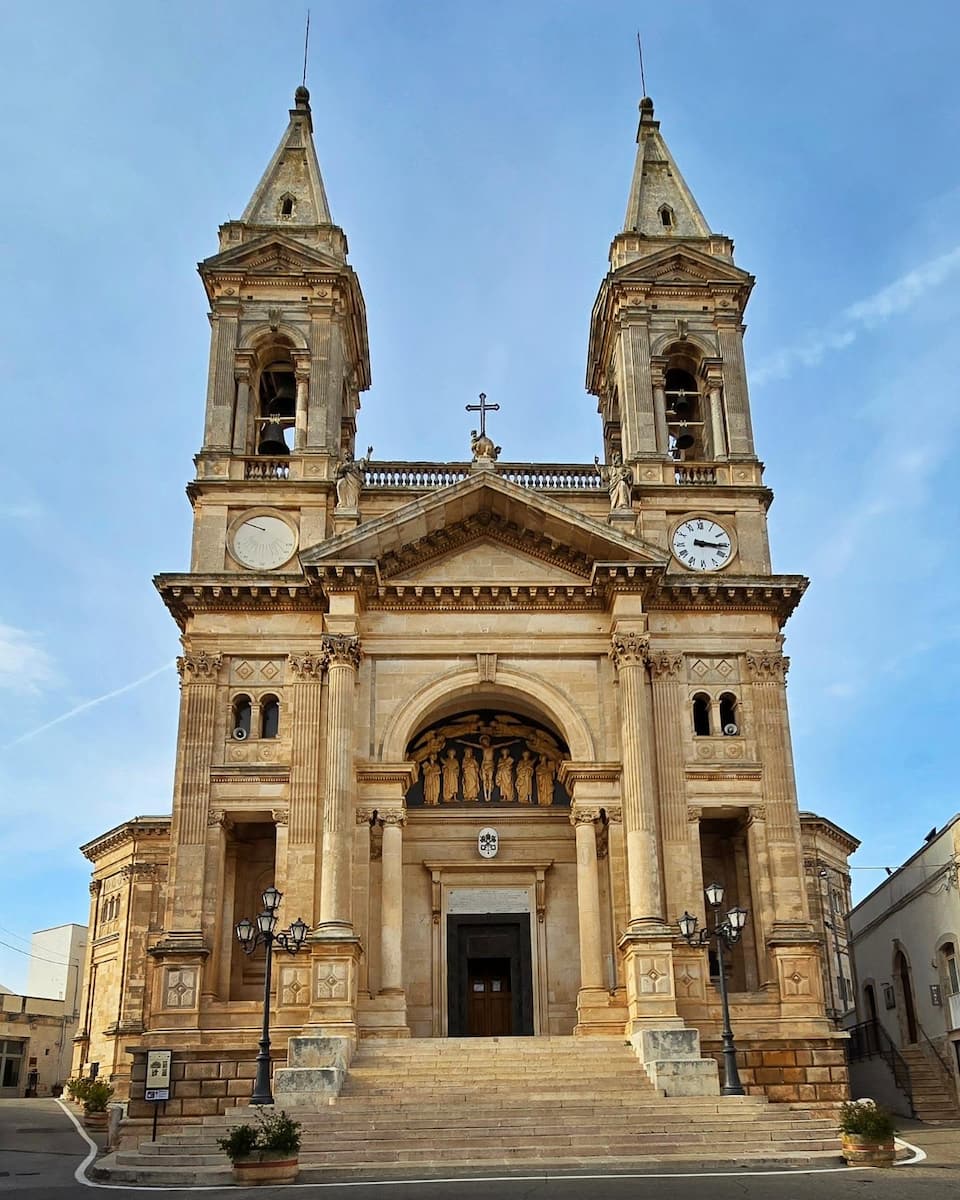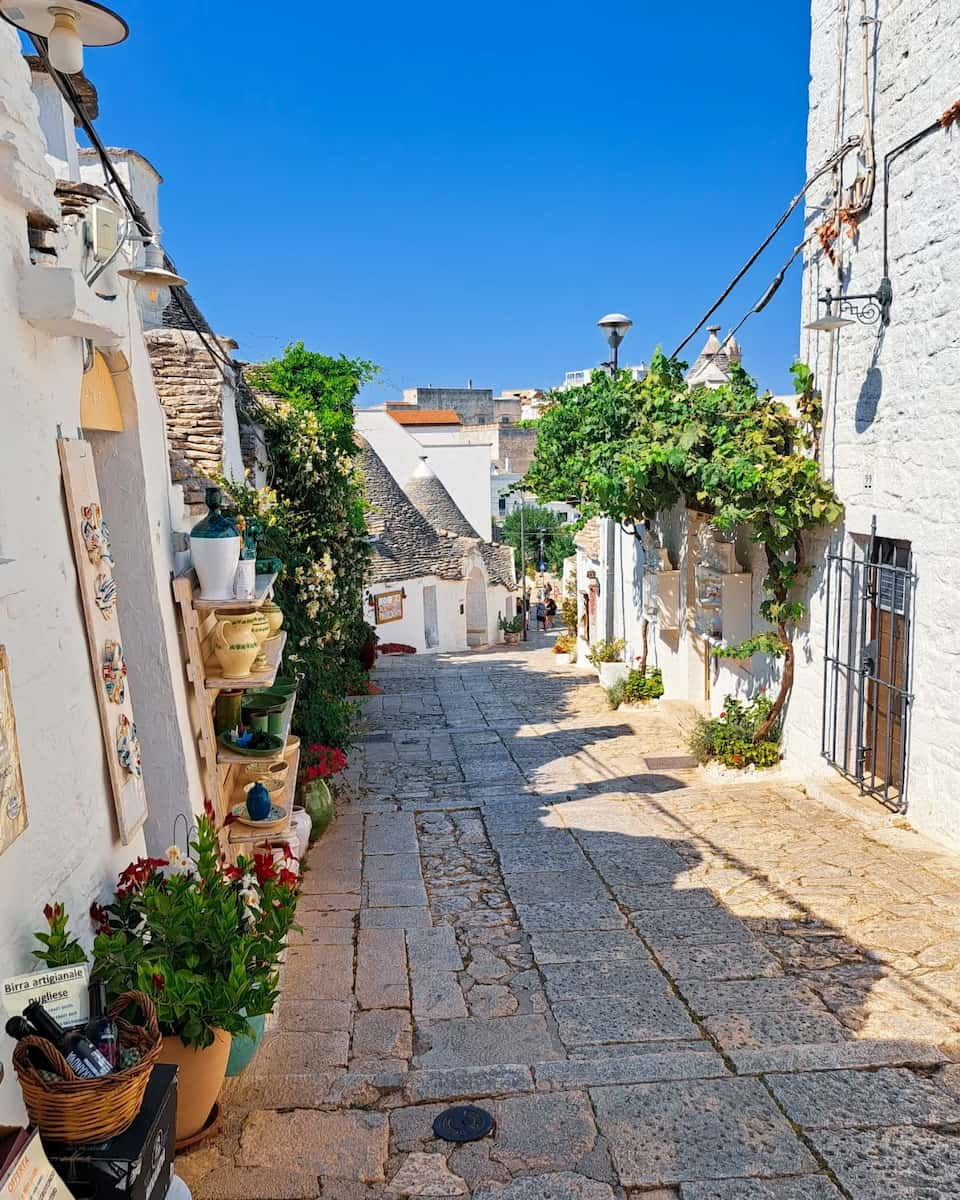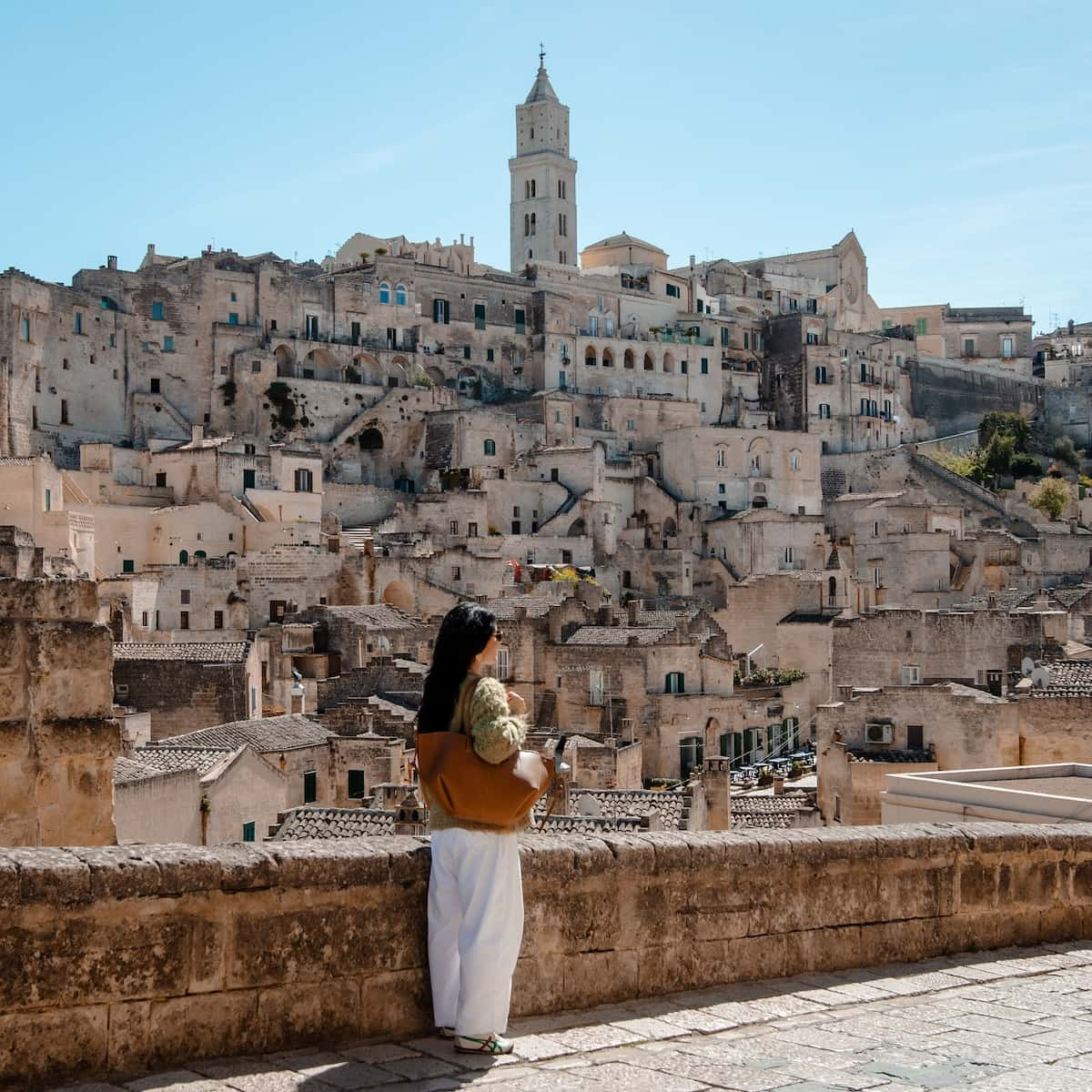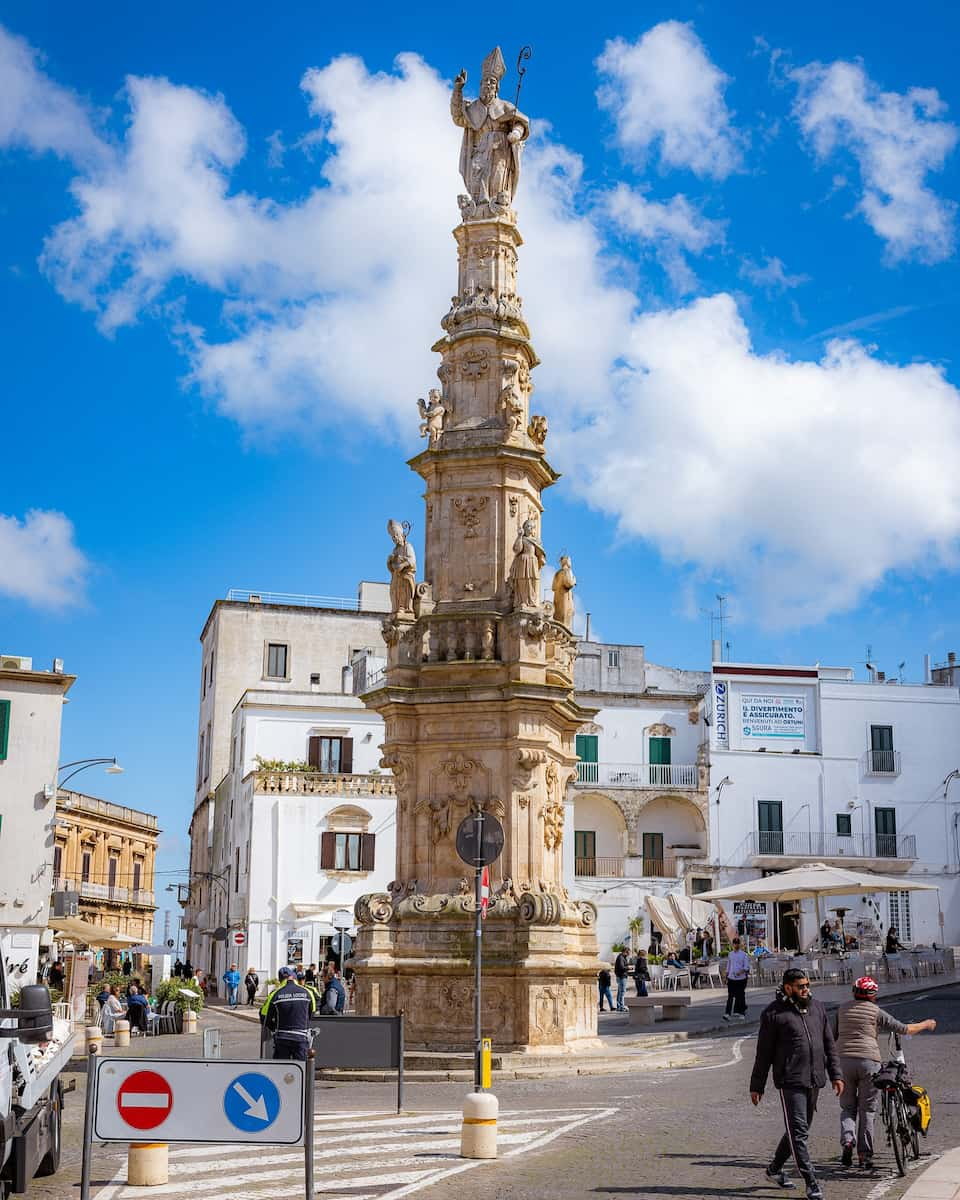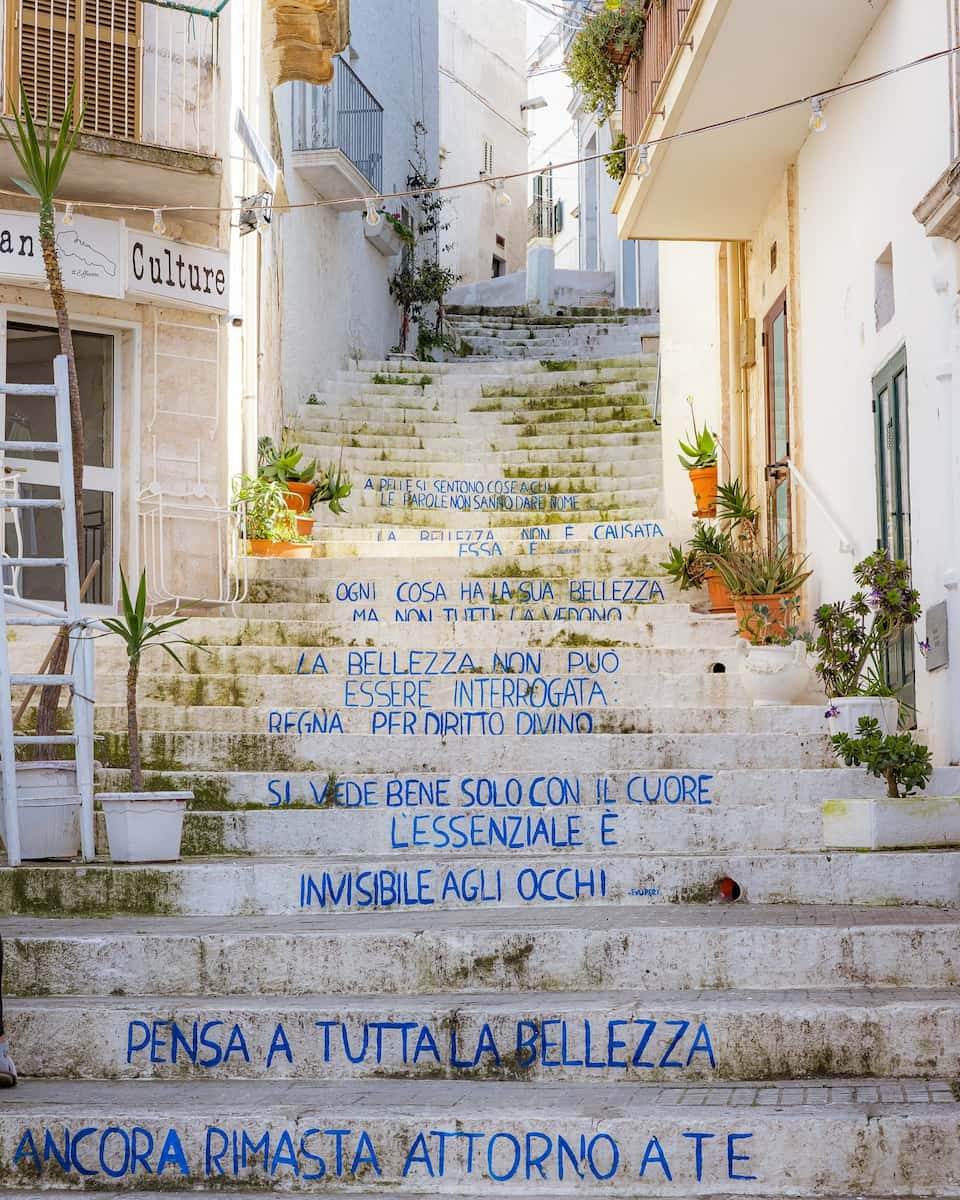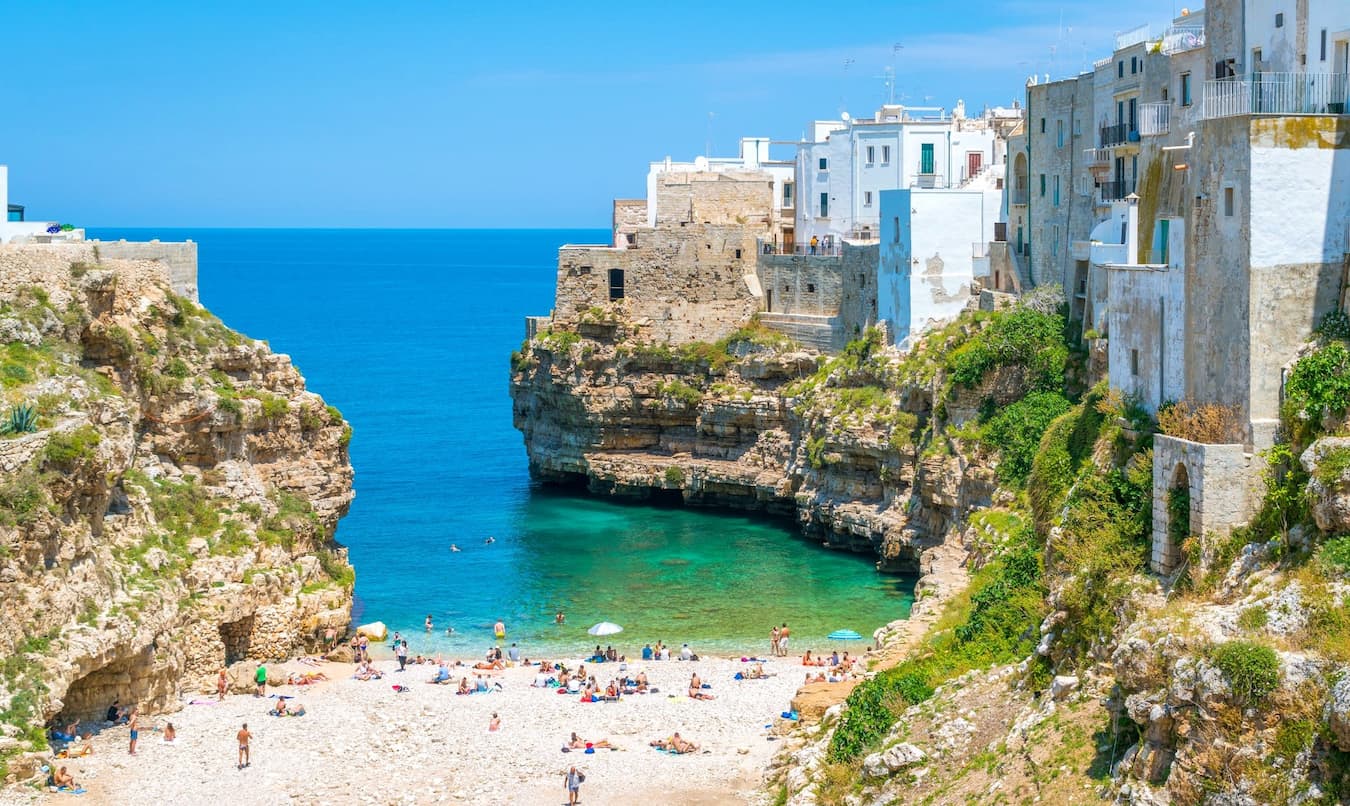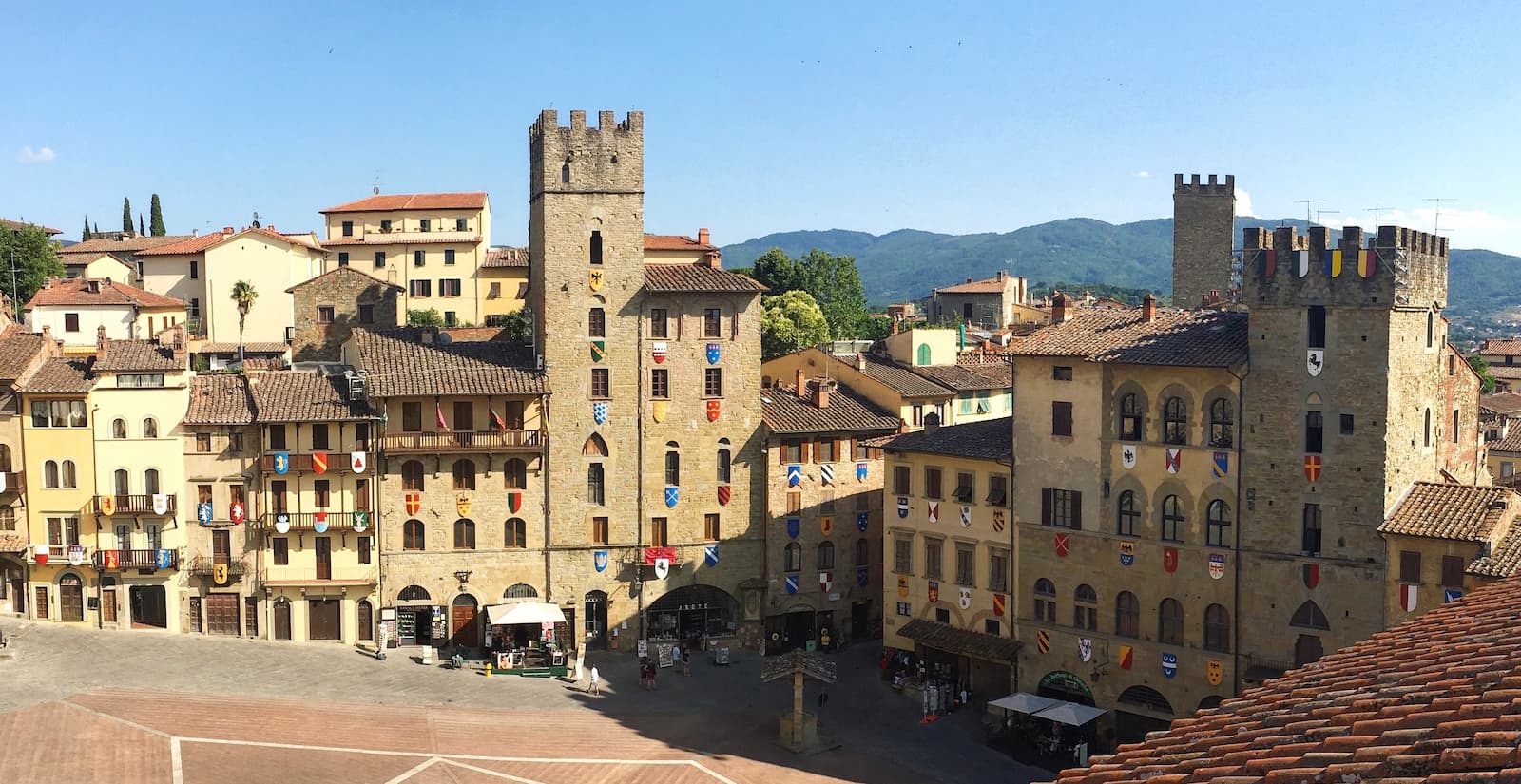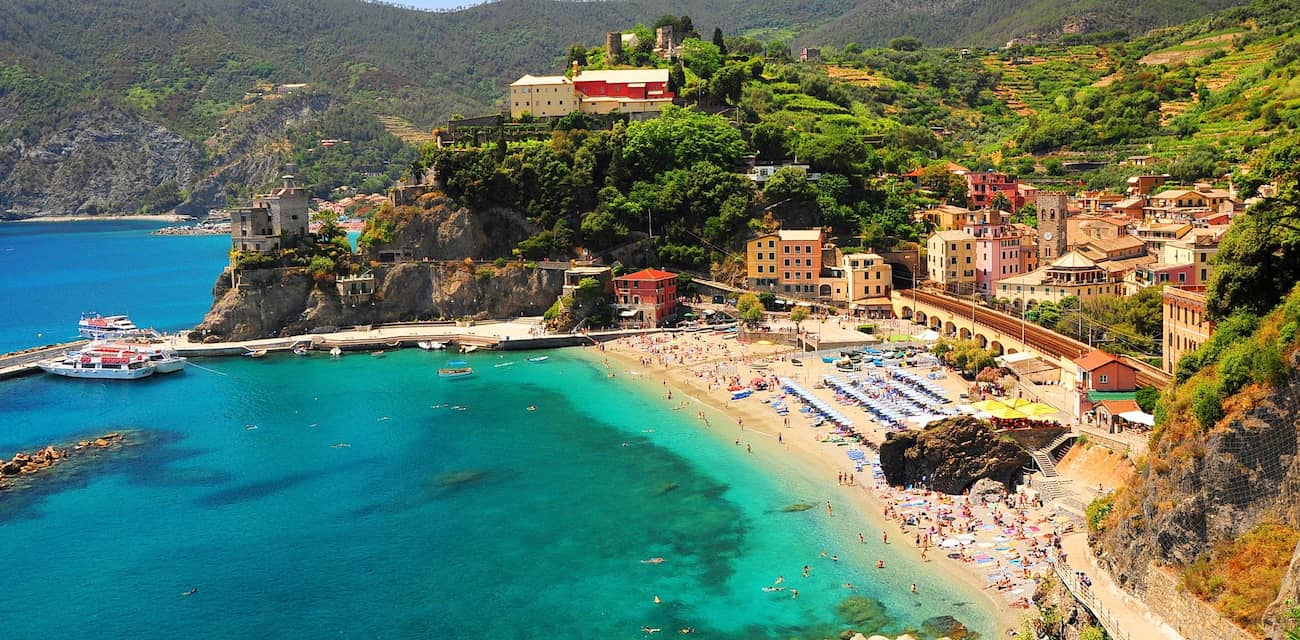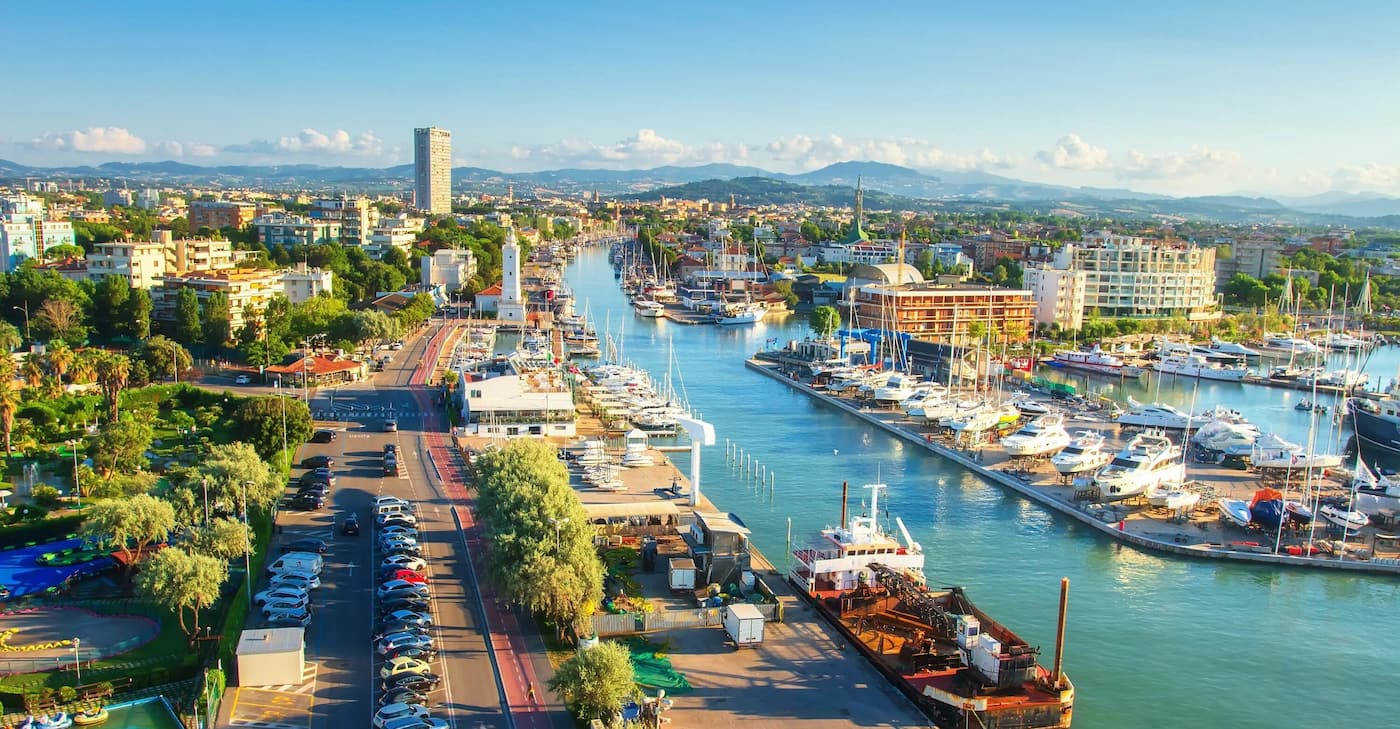From exploring Roman columns and medieval castles to savoring fresh seafood along the picturesque promenade, Brindisi promises unforgettable experiences for every traveler. Join me as we uncover the best things to do in this captivating Puglian city and discover why it’s the perfect base for exploring the region’s treasures.
🏠 Best Hotels in Brindisi
- 🏨 4-Star: ELLEMENTS - Luxury Rooms, Brindisi
- 🛏️ 3-Star: La Conigliera, Brindisi
- 💸 Cheap: Hotel Residence Nemo, Brindisi
- 🏢 Apartment: Al Centro Exclusive Apartment, Brindisi
- 👨👩👧👦 For Families: Ibis Styles Brindisi, Brindisi
- 🏩 For Couples: Hotel Orientale, Brindisi
💁 Best Guided Tours
- Brindisi Small Group Pasta and Tiramisu Class from € 85 (⭐4.9/5)
- Brindisi Self-Guided Sherlock Holmes Murder Mystery Game from € 20 (⭐4.6/5)
- Brindisi 2-Hour Private Tour: The Most Important Roman Empire Port from € 100 (⭐4.8/5)
- Small Group Market Tour and Dining Experience at a Cesarina's Home in Brindisi from € 95 (⭐4.9/5)
Best Things to Do in Brindisi, Italy
1. Piazza Duomo and Brindisi Cathedral
Heart of history. Walking through Brindisi’s historic center, I stumbled upon Piazza Duomo, the oldest and most beautiful square in the city. The blush-hued flagstones create a magical atmosphere, especially when the evening lights illuminate the medieval buildings surrounding it.
Cathedral magnificence. The Basilica di San Giovanni Battista (Brindisi Cathedral) dominates the square with its impressive façade adorned with statues of St. Theodore, St. Paul, St. Leucio, and St. Giustino. Though rebuilt after the devastating 1743 earthquake, it maintains its medieval three-nave layout without a transept.
Historical significance. Inside, I discovered fragments of the original mosaic floor depicting a tree, zoomorphic figures, and scenes from the Chanson de Roland. The cathedral witnessed significant events including Frederick II’s marriage to 14-year-old Yolande of Brienne in 1225 and Roger III’s coronation.
Artistic treasures. The wooden choir from the 16th century survived the earthquake and features intricate carvings of Saint Giorgio killing the dragon and Saint Theodore piercing the devil. Look carefully and you might spot the artist’s self-portrait hidden in these engravings!
Christmas magic. During the Christmas season, the square transforms with a spectacular light show projected onto the cathedral’s façade. I’ve never seen anything quite as enchanting as the illuminated Piazza Duomo during the holidays.
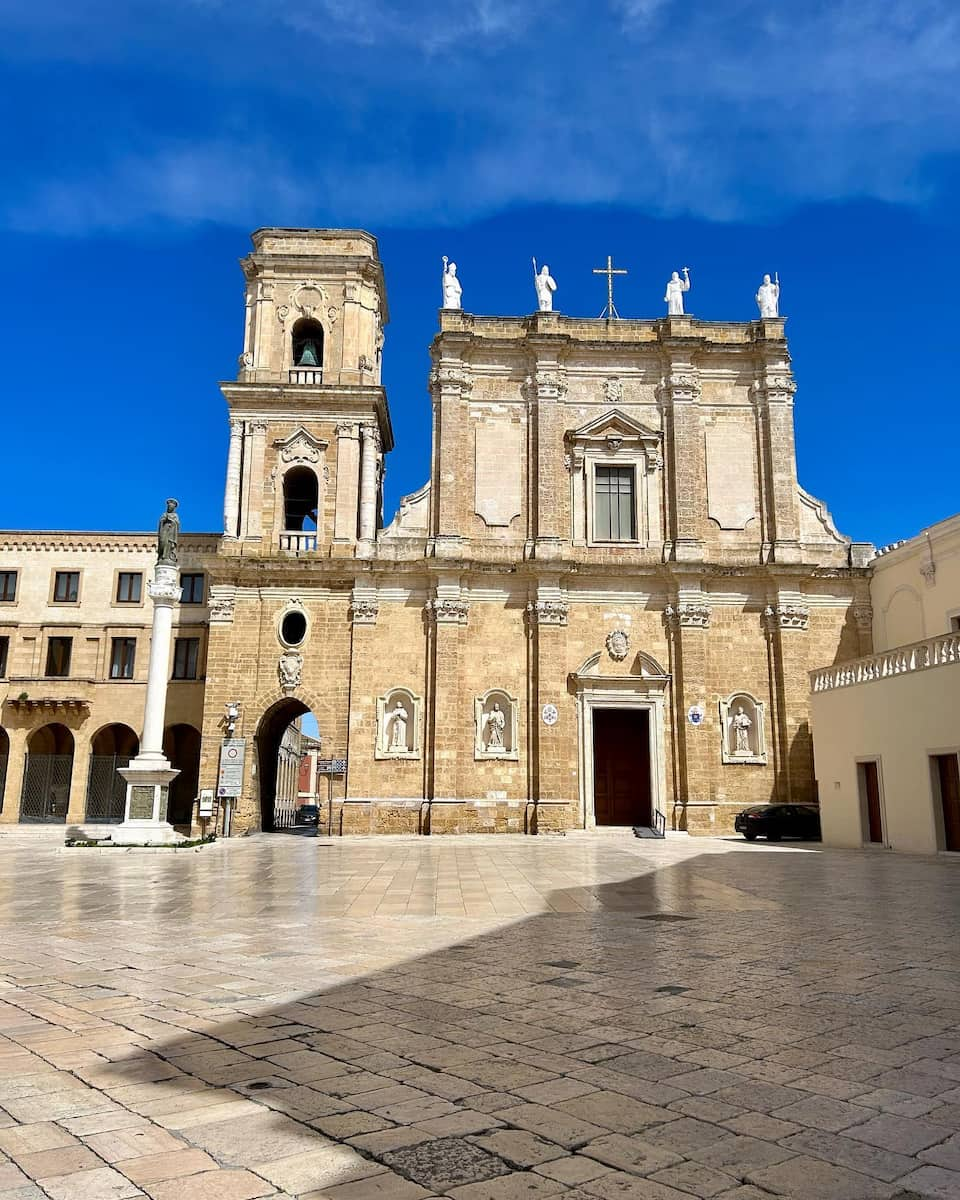
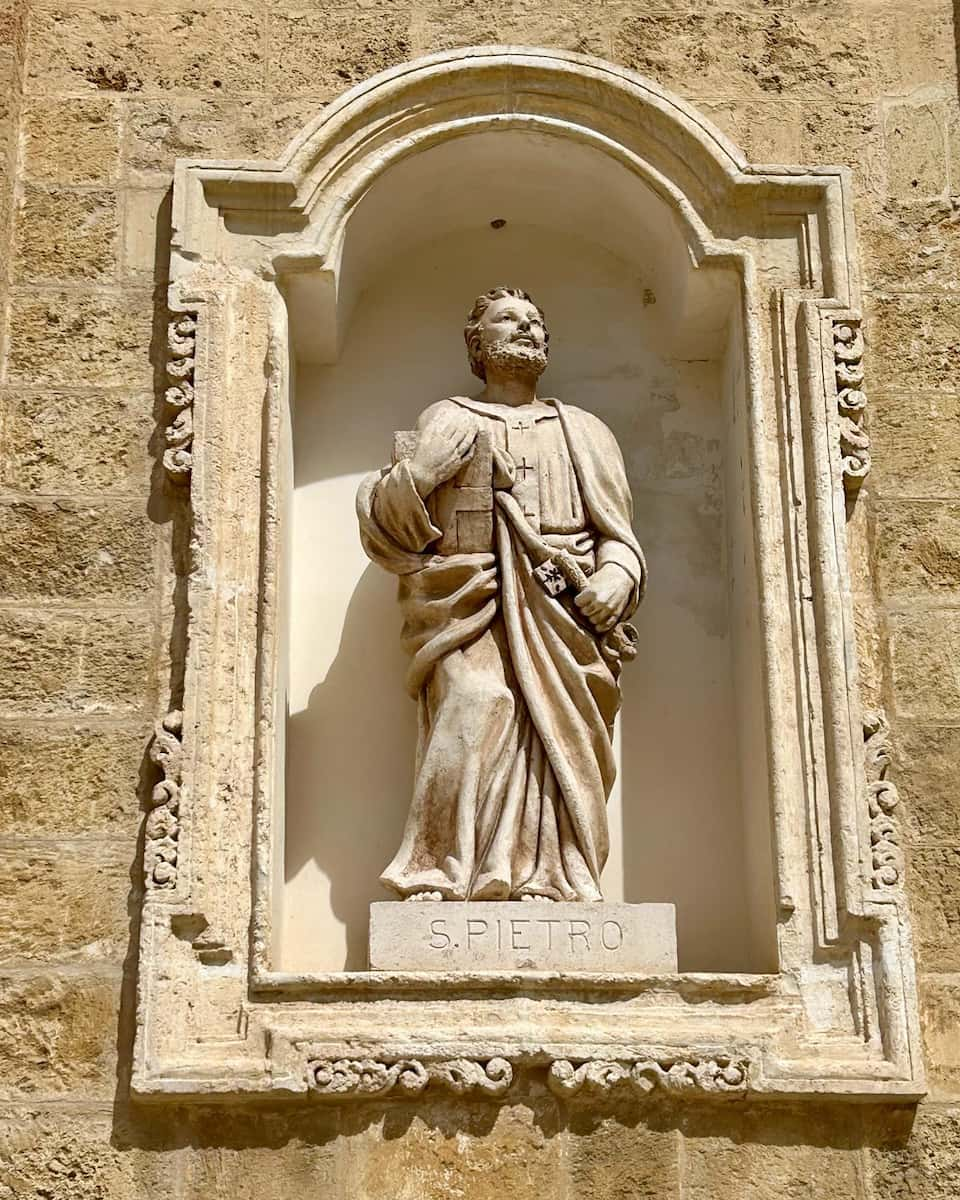
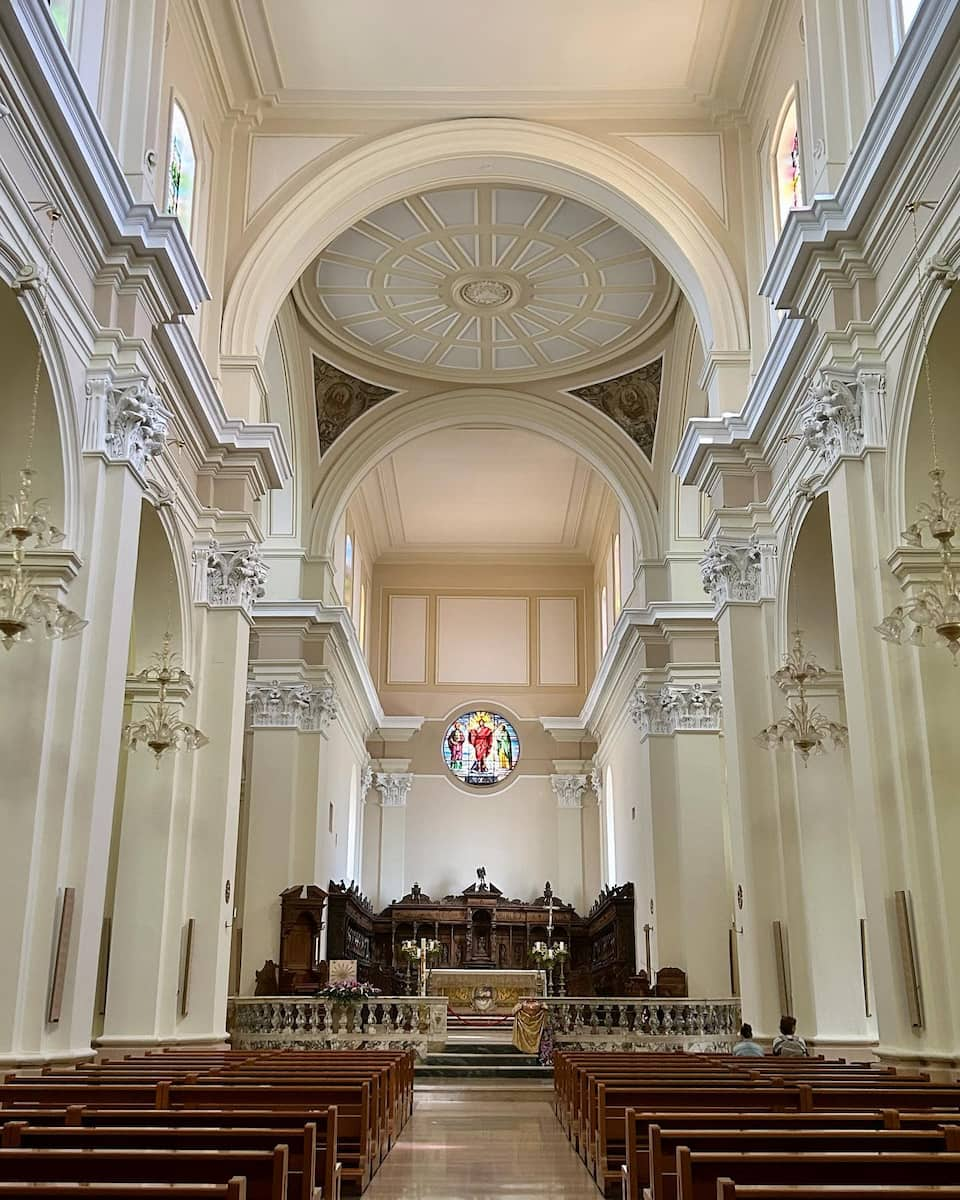
Opening Hours:
- Monday to Friday: 8:30 AM–12:30 PM and 4:30–8:30 PM
- Times may vary seasonally and on holidays
Admission: Free entry (guided tours may have additional fees)
What to see nearby:
- Museo Archeologico Francesco Ribezzo
- Episcopal Palace with eight statues representing various intellectual disciplines
- Loggia Balsamo (14th century) with rich decorations
- Monument to Madonna Pellegrina
Accessibility tip: The cathedral has limited accessibility features for visitors with mobility issues, so plan accordingly if needed.
⭐ Best Activities
- Brindisi Walking Tour with Audio and Written Guide by a Local – Explore Brindisi at your own pace with this self-guided audio tour created by a local. The tour starts and finishes at notable city monuments and is available 24/7 for your convenience.
2. Roman Columns (Colonne Terminali della Via Appia)
Ancient landmarks. Standing at the top of the wide staircase on the seafront, I gazed at the iconic Roman Columns marking the end of the Appian Way. Only one original column remains, while its twin was gifted to Lecce in 1666 and replaced with a replica.
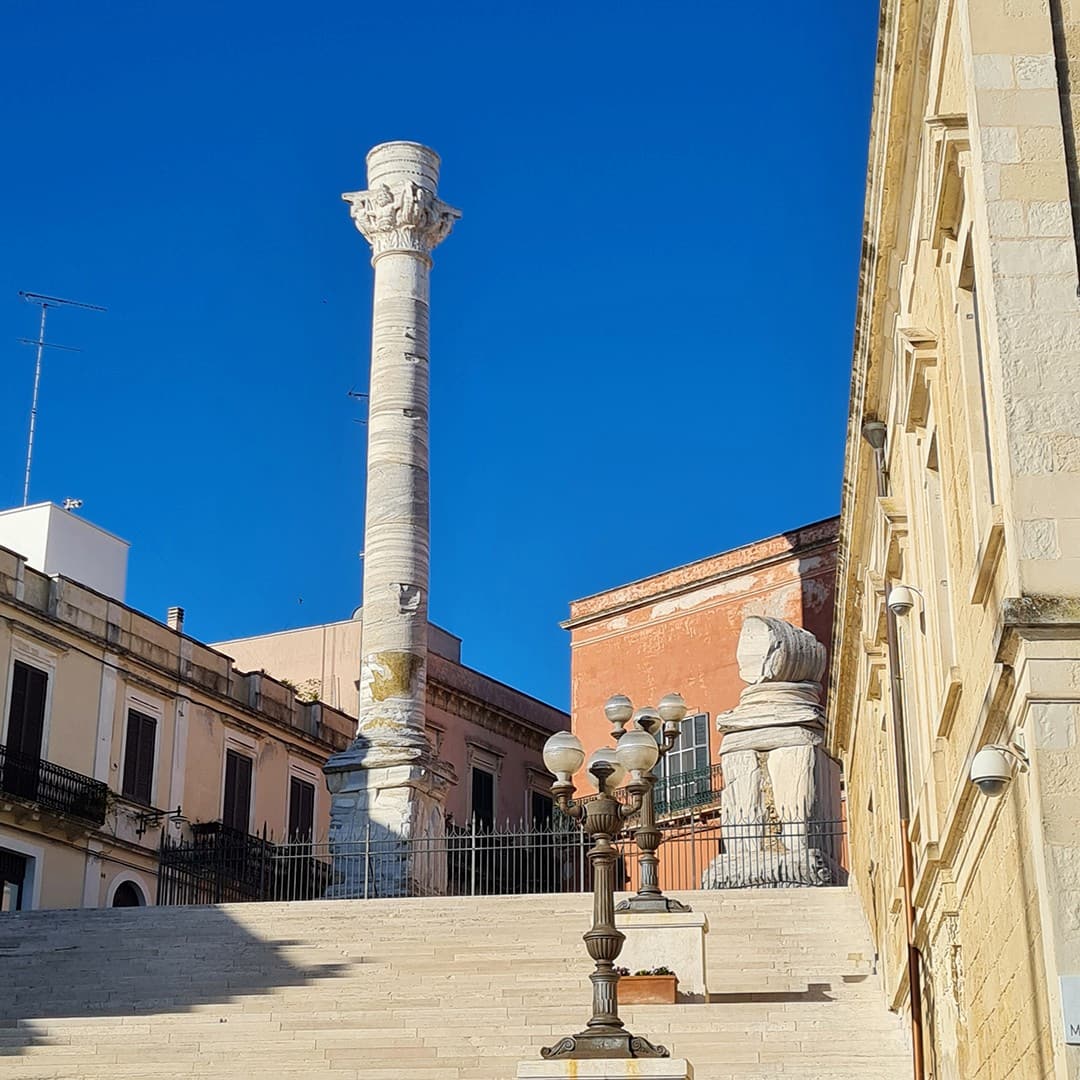
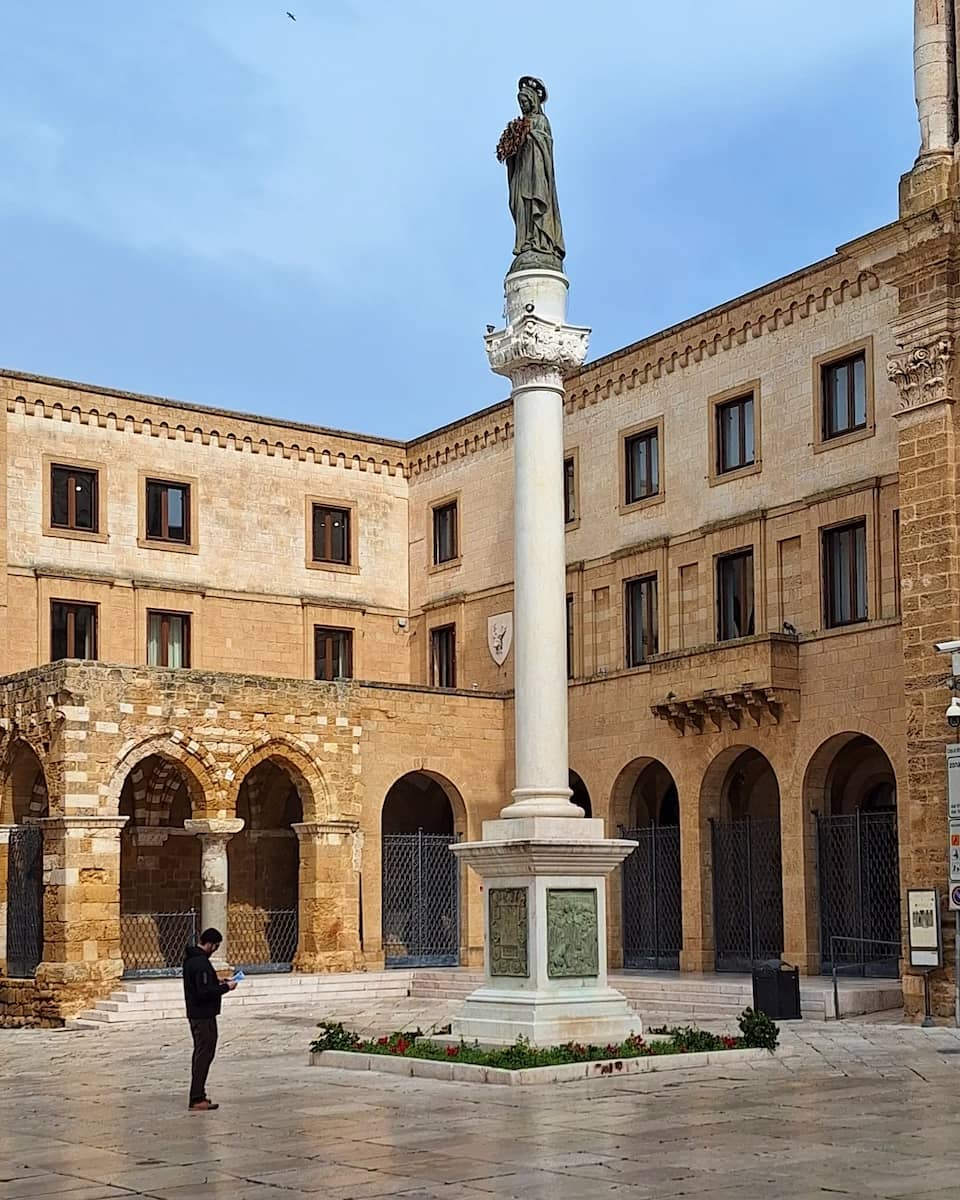
Historical significance. These columns once served as a navigational aid for sailors entering Brindisi’s harbor and marked the terminus of the Via Appia, Rome’s most important ancient highway. I felt a profound connection to history knowing countless Roman travelers ended their journeys at this exact spot.
Architectural marvel. The remaining Corinthian column stands about 19 meters tall and dates back to the 2nd century AD. Its weathered limestone tells stories of over 2,000 years of Mediterranean history, wars, and maritime trade.
Scenic views. From this elevated position, I enjoyed breathtaking panoramas of Brindisi’s port and the Adriatic Sea. The columns create perfect framing for photos of the harbor, especially during sunset when the limestone glows golden.
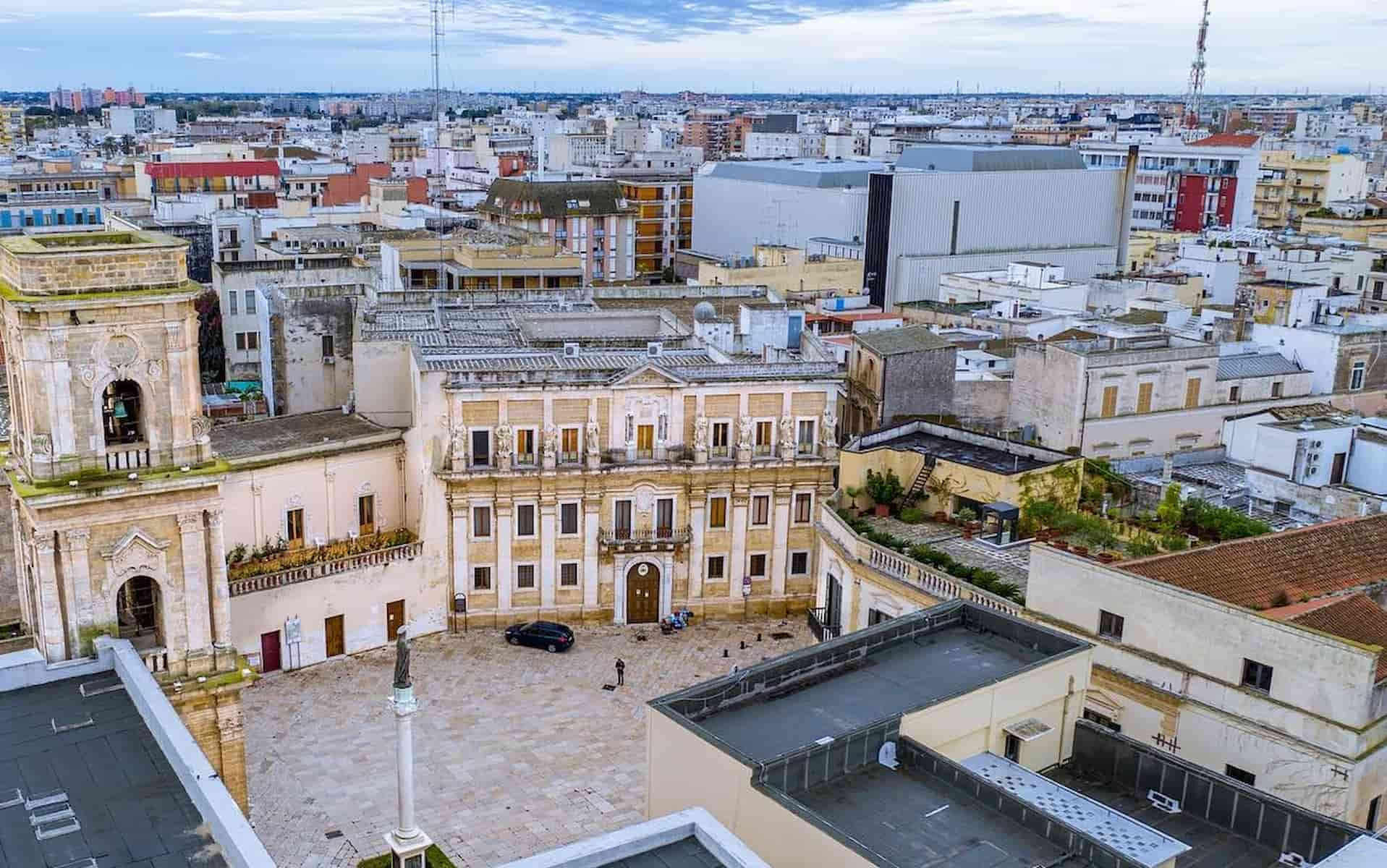
Local legends. A local guide shared that sailors would touch the columns for good luck before departing on voyages. I couldn’t resist doing the same, connecting with centuries of maritime tradition.
Fun facts about the Roman Columns:
- Only one of the two columns is original
- The columns are made of Turkish marble
- They were erected around 117-118 AD
- The height of each column is about 19 meters
⭐ Best Activities
- Brindisi Digital Guide Made with a Local for Your Tour – Discover Brindisi with a digital guide created by locals, allowing you to explore the city’s highlights at your own pace while learning about its rich history and culture.
3. Castello Alfonsino (Alfonsino Castle)
Island fortress. Perched dramatically on Sant’Andrea Island at the entrance to Brindisi’s harbor, Castello Alfonsino (also called Red Castle or Forte a Mare) captivated me with its striking red walls rising from the azure waters.
Military architecture. Built between 1445-1481 by King Ferdinand I of Naples, the castle features impressive defensive elements including a triangular plan, massive walls, and a drawbridge. The structure was later expanded with the addition of the Forte a Mare during Spanish rule.
Strategic position. As I explored the fortress, I understood why it was crucial for controlling access to Brindisi’s port. Its position allowed defenders to monitor all vessels entering or leaving the harbor, protecting this vital Mediterranean trading hub.
Restoration success. Recently restored after years of neglect, the castle now hosts cultural events and exhibitions. The careful preservation work has maintained the authentic character while making it accessible to visitors.
Boat access. Reaching the castle requires a short boat ride from the mainland, which adds to the adventure. The trip costs about €5 (approximately $5.50) and offers spectacular views of Brindisi’s coastline.
⭐ Best Activities
- Brindisi Castello Alfonsino Tour - Isola di Sant'Andrea – Visit the impressive Alfonsino Castle on Sant’Andrea Island with a guided tour that explores this historic fortress at the entrance to Brindisi’s harbor.
4. Lungomare Regina Margherita (Brindisi Promenade)
Seaside elegance. Strolling along Lungomare Regina Margherita, I fell in love with this palm-lined promenade stretching along Brindisi’s waterfront. The gentle Mediterranean breeze carried the scent of saltwater as fishing boats bobbed in the harbor.
Local life. This is where Brindisi truly comes alive. I joined locals during their traditional evening passeggiata (stroll), watching families, couples, and friends enjoying gelato while chatting and people-watching.
Culinary delights. The promenade is lined with excellent seafood restaurants serving fresh catches. I savored a plate of orecchiette with mussels at Ristorante La Locanda del Porto (€15/$16.50) while watching fishing boats return with their daily catch.
Historical context. Named after Queen Margherita of Savoy, the promenade connects many of Brindisi’s most important landmarks. Walking its length provides a perfect introduction to the city’s maritime heritage.
Sunset magic. As day turned to evening, the promenade transformed with golden light reflecting off the harbor waters. Local musicians often perform here, creating a soundtrack for unforgettable Mediterranean evenings.
Top activities along the promenade:
- People-watching during the evening passeggiata
- Enjoying a gelato from one of the many ice cream shops
- Taking a boat tour of the harbor
- Photographing the sunset over the Adriatic
- Dining al fresco at a waterfront restaurant
5. Monument to Italian Sailors
Maritime tribute. Standing 53 meters tall, the Monument to Italian Sailors (Monumento al Marinaio d’Italia) dominates Brindisi’s skyline. Shaped like a massive ship’s rudder, this impressive structure honors sailors who lost their lives at sea.
Panoramic views. I climbed to the observation deck at the top (€3/$3.30 entrance fee) and was rewarded with spectacular 360-degree views of Brindisi, its port, and the surrounding countryside. The Adriatic Sea stretched endlessly before me.
Historical significance. Inaugurated in 1933, the monument contains a small naval museum with artifacts, models, and photographs documenting Italy’s maritime history. The chapel inside commemorates fallen sailors with a solemn, reflective atmosphere.
Architectural details. The monument’s design brilliantly captures the essence of naval heritage with its rudder shape symbolizing guidance and direction. The green copper cladding has developed a beautiful patina over decades of exposure to sea air.
Local pride. Speaking with Brindisini (locals from Brindisi), I learned how deeply this monument resonates with the community’s identity as a port city. Many families have connections to the sea, making this a place of personal reflection.
6. Museo Archeologico Provinciale Ribezzo
Archaeological treasures. Housed in the former Fontana Palace, the Ribezzo Archaeological Museum showcases Brindisi’s rich history from prehistoric times through the Roman era. I spent hours examining ancient artifacts that tell the story of this strategic port city.
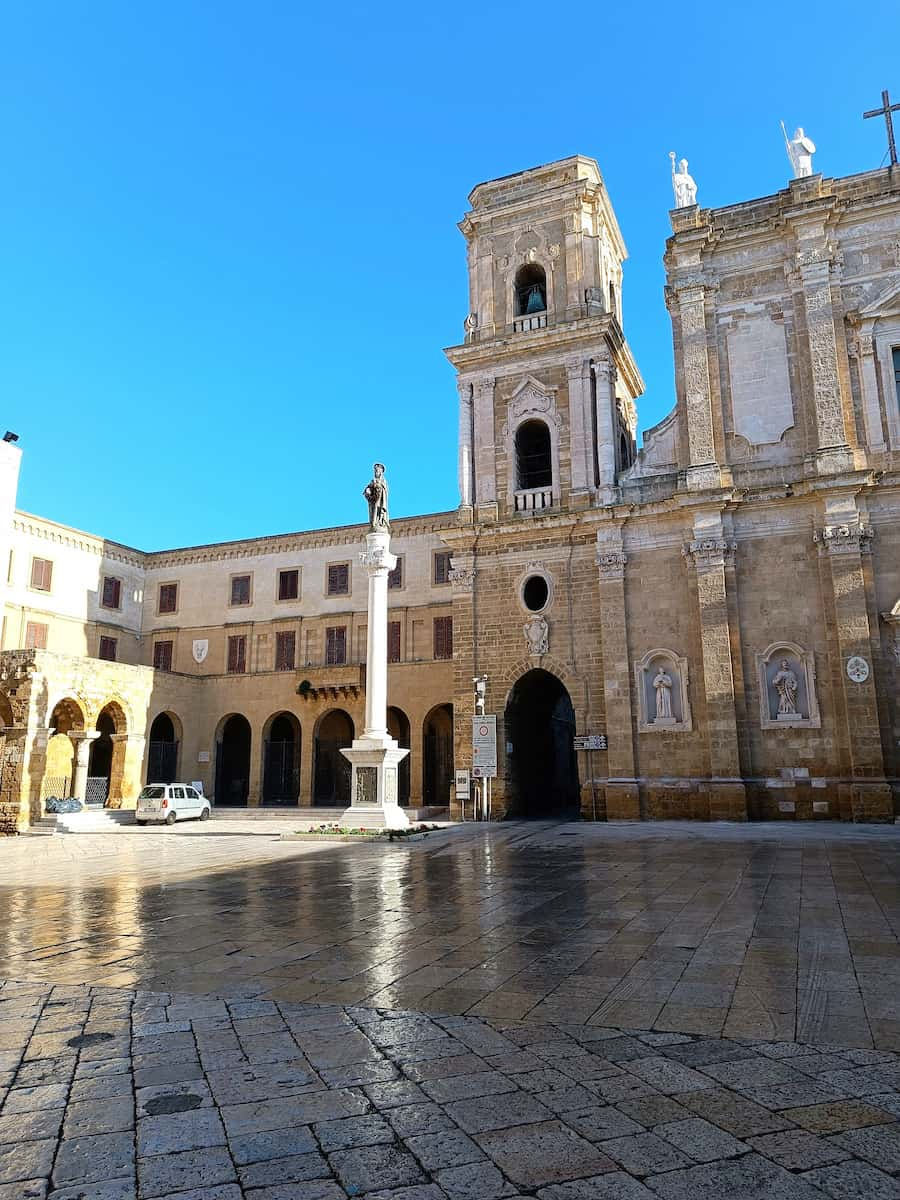
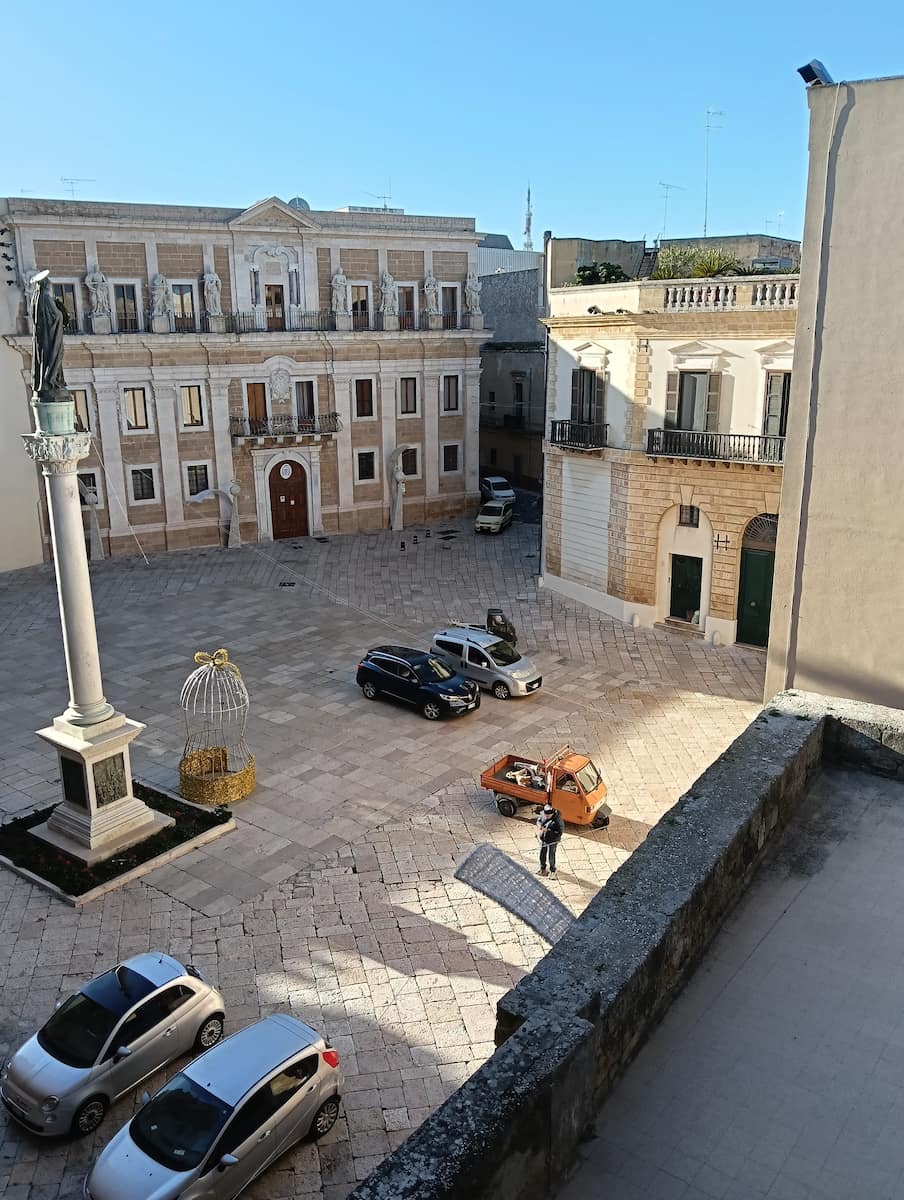
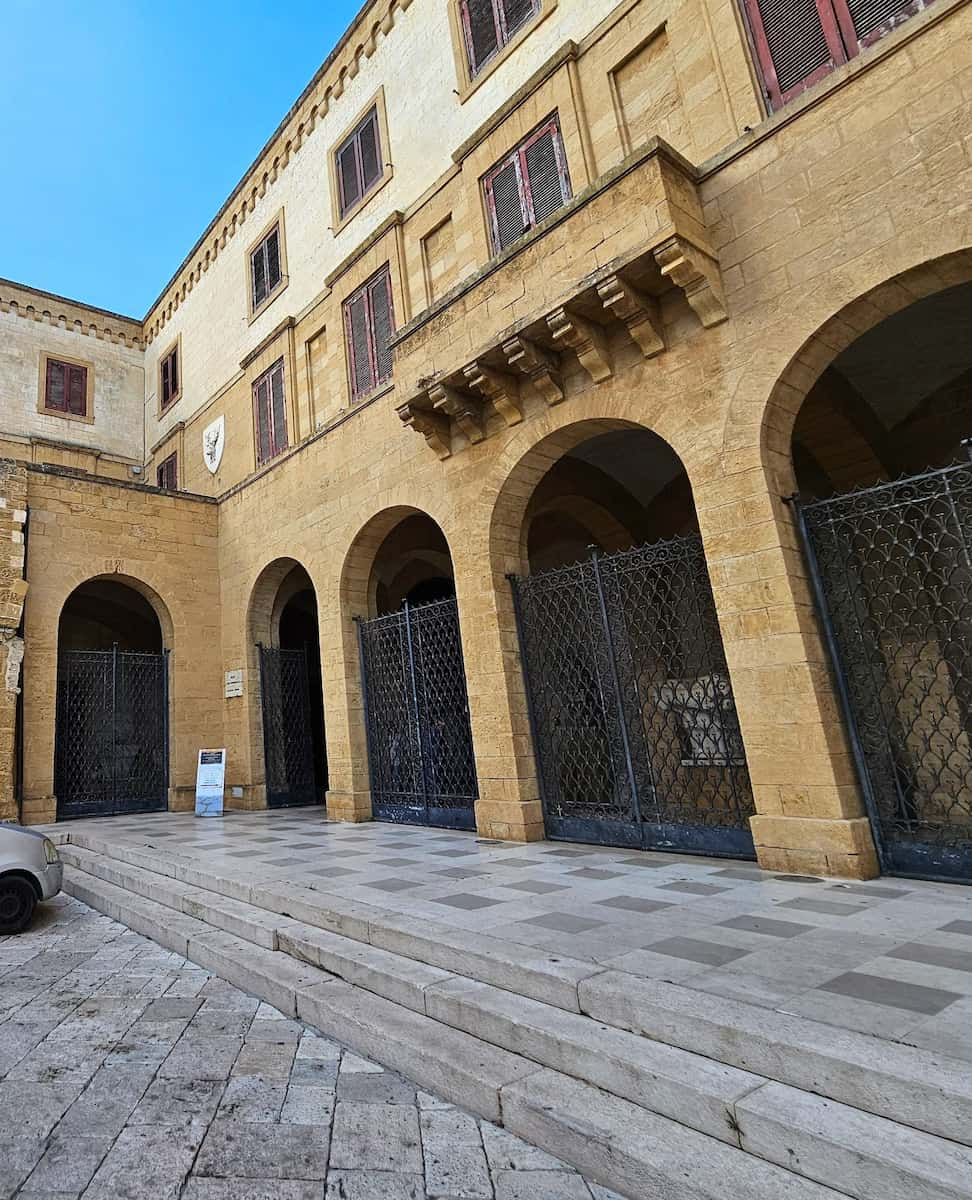
Bronze masterpieces. The museum’s crown jewels are the Punta del Serrone Bronzes, discovered by fishermen in 1992. These remarkably preserved Roman-era bronze statues and fragments include portraits of philosophers and emperors that left me awestruck.
Maritime artifacts. Given Brindisi’s importance as a port, the collection of ancient anchors, amphoras, and maritime trading goods provides fascinating insights into Mediterranean commerce throughout the centuries.
Epigraphic collection. The extensive collection of inscriptions includes the famous Tabula Mesagne, an ancient bronze inscription detailing Roman legal proceedings. Even with my limited Latin, I could appreciate the historical significance.
Visitor experience. Entrance costs €5 ($5.50), and I recommend the audio guide (additional €3/$3.30) which provides excellent context. The museum is refreshingly uncrowded, allowing intimate exploration of exhibits spanning 3,000 years of local history.
Must-see exhibits at Museo Ribezzo:
- Punta del Serrone Bronzes
- Ancient Roman glassware collection
- Prehistoric artifacts from nearby caves
- Tabula Mesagne bronze inscription
- Greek and Roman pottery displays
7. Tempio di San Giovanni al Sepolcro
Crusader connections. The circular Tempio di San Giovanni al Sepolcro transported me back to the Crusades era. Built in the early 12th century, this Romanesque church was modeled after Jerusalem’s Holy Sepulchre, creating a pilgrimage site for those who couldn’t reach the Holy Land.
Architectural uniqueness. The perfectly round design with its central dome and concentric layout is unlike anything else in Puglia. I was fascinated by the symbolic architecture representing the cosmos, with Christ at the center of the universe.
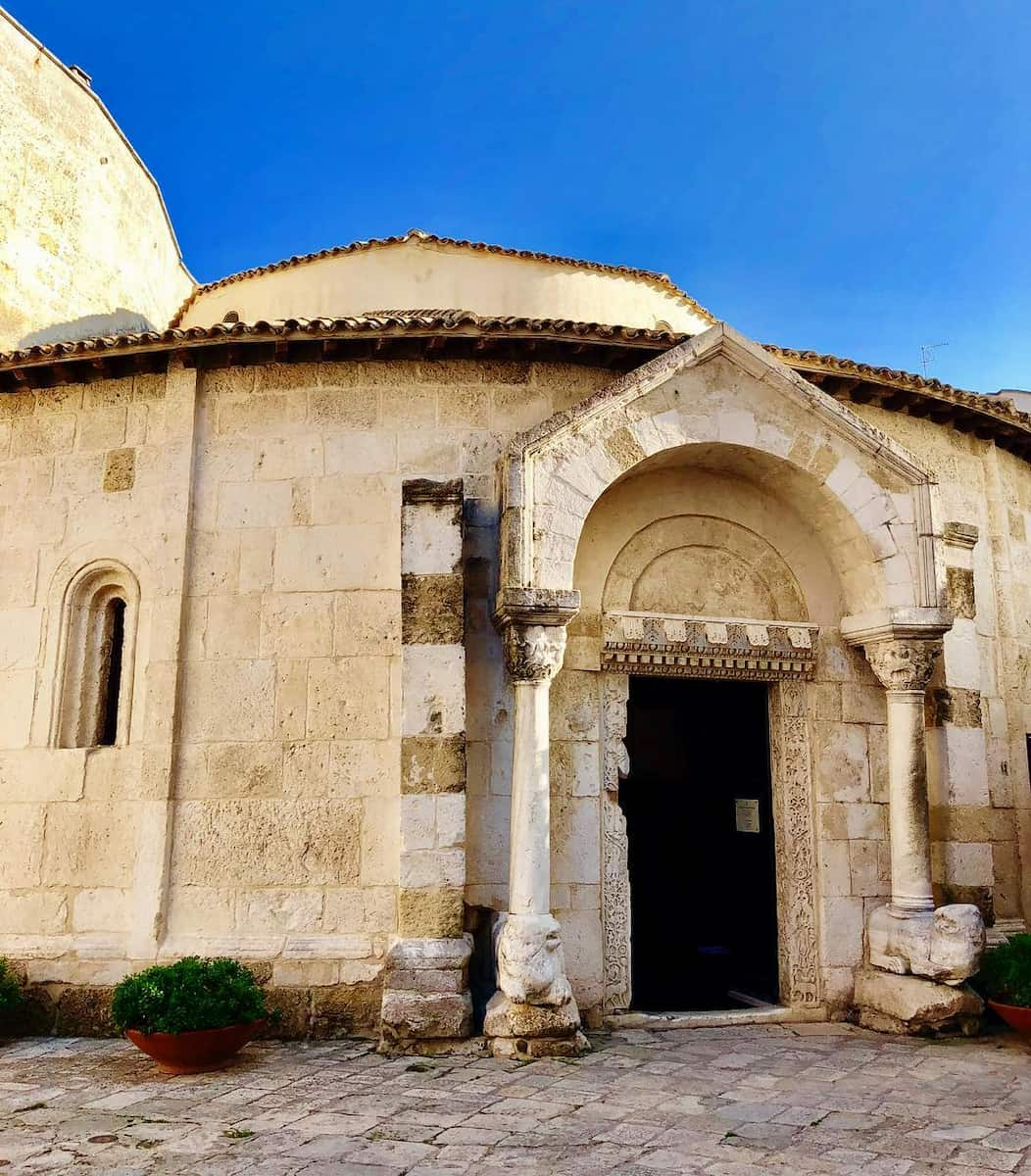
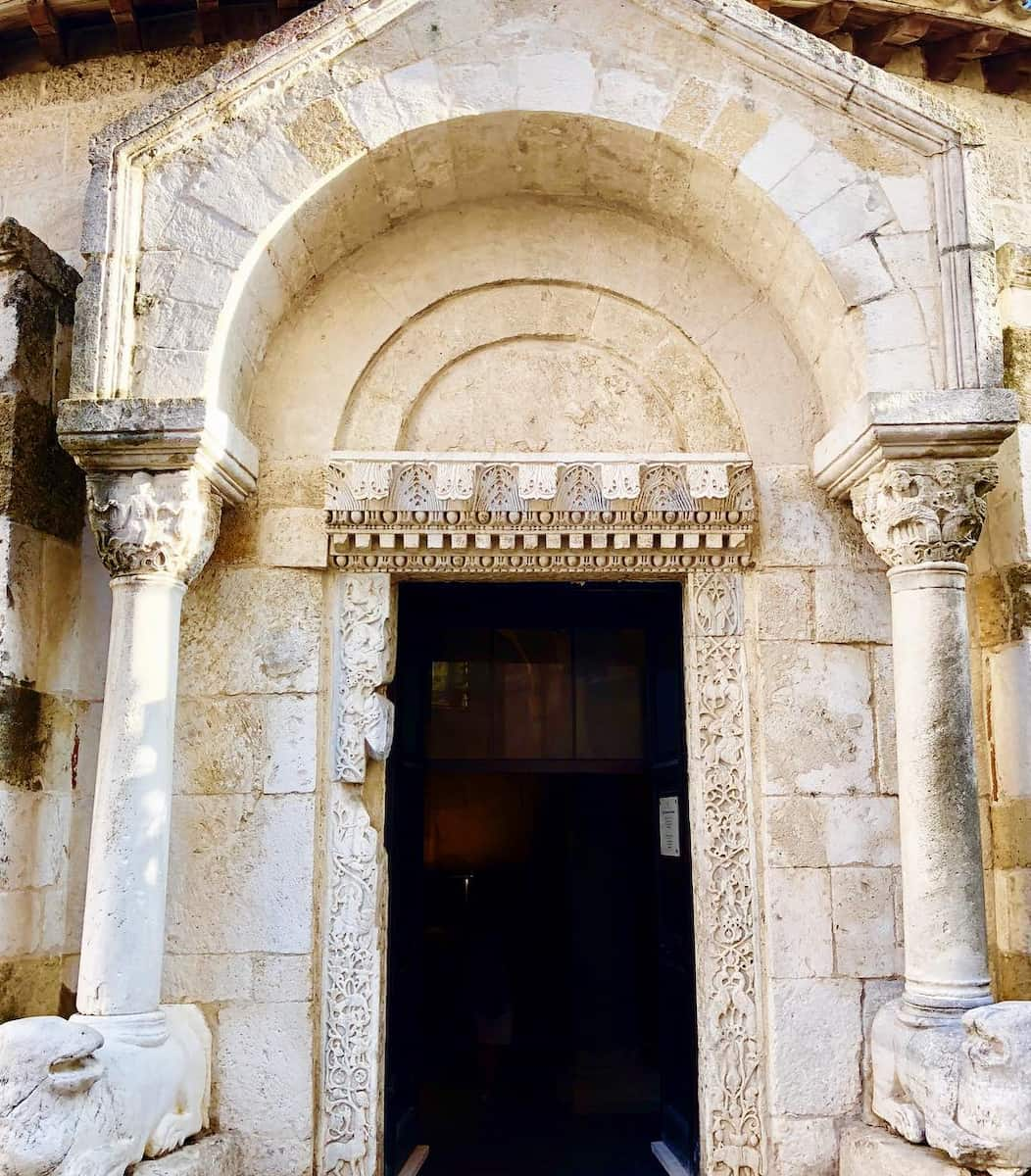
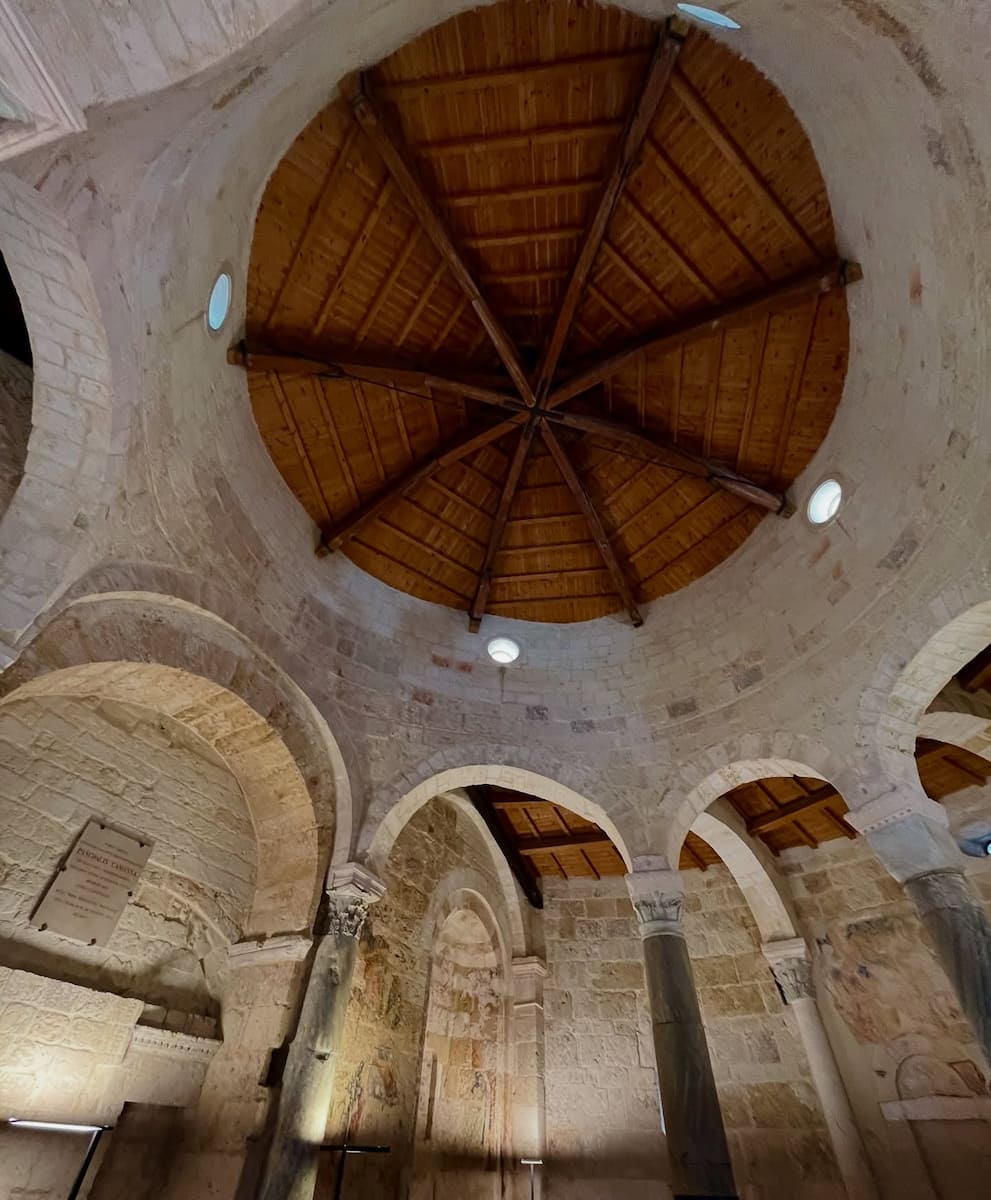
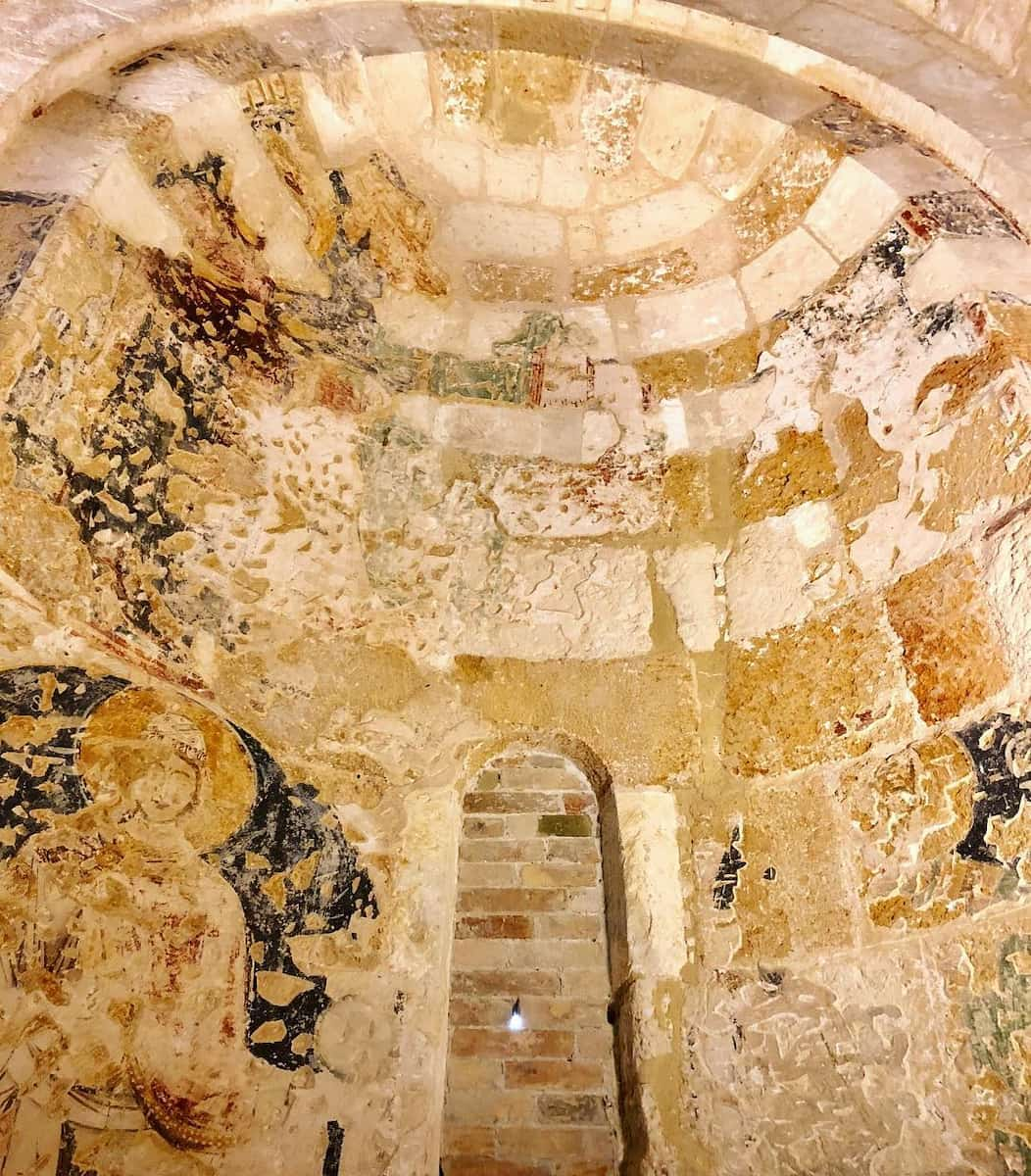
Ancient frescoes. Though faded, the remaining Byzantine-style frescoes depicting saints and biblical scenes provide glimpses of the church’s original splendor. Some date back to the 12th century, surviving centuries of changing ownership and use.
Mysterious symbols. Throughout the temple, I discovered enigmatic carvings and symbols associated with Templar knights. A local guide explained theories about hidden meanings in the decorative elements, adding an air of mystery to my visit.
Peaceful atmosphere. Despite being in the city center, stepping inside transported me to a quieter, contemplative space. The admission is free, though donations are appreciated for ongoing preservation efforts.
⭐ Best Activities
- Tour of Brindisi – Take a comprehensive guided tour of Brindisi to discover the city’s most important historical and cultural attractions with expert commentary.
8. Palazzo Granafei Nervegna
Renaissance elegance. Walking through Palazzo Granafei Nervegna’s imposing doorway, I entered one of Brindisi’s most beautiful Renaissance buildings. The 16th-century palace combines Gothic and Renaissance elements with a striking façade and internal courtyard.
Historical significance. The palace gained international fame when Benito Mussolini used it as his headquarters during WWII. More positively, it now houses cultural exhibitions and Brindisi’s tourist information office where I received excellent advice about local attractions.
Architectural highlights. I admired the ornate stone balconies, grand staircase, and the internal courtyard with its classical proportions. The building exemplifies the wealth and artistic sensibilities of Brindisi’s noble families during the Renaissance.
Cultural hub. Today, the palazzo hosts art exhibitions, concerts, and cultural events. During my visit, a photography exhibition showcased Puglia’s traditional crafts, providing insights into the region’s cultural heritage.
Roman remains. In the basement, I discovered preserved Roman-era ruins including mosaic floors and wall sections. This multi-layered history perfectly represents Brindisi itself—a city where different eras coexist harmoniously.
⭐ Best Activities
- Brindisi Guided Tour to the Roman Port – Explore Brindisi’s ancient Roman port with a knowledgeable guide who will reveal the fascinating history of this important Mediterranean harbor.
9. Swabian Castle of Brindisi
Medieval power. Standing before the massive walls of Brindisi’s Swabian Castle (Castello Svevo), I felt dwarfed by this imposing 13th-century fortress. Built by Emperor Frederick II, the castle’s strategic position protected the inner harbor for centuries.
Military architecture. The castle’s design features classic defensive elements: thick walls, corner towers, and a deep moat (now filled). Though partially rebuilt after WWII bombing, it retains authentic medieval architectural elements that transport visitors back in time.
Maritime museum. Today, the castle houses the Navy’s Maritime Museum (€5/$5.50 entrance), displaying ship models, navigational instruments, and exhibits detailing Brindisi’s naval history. The collection of ancient anchors recovered from the harbor was particularly impressive.
Historical layers. Archaeological excavations revealed that the castle was built atop earlier Byzantine and Norman fortifications. Each stone seemed to tell stories of different rulers who recognized Brindisi’s strategic importance.
Panoramic views. Climbing to the castle’s upper levels rewarded me with spectacular views of Brindisi’s port and the Adriatic beyond. I could easily imagine sentries scanning the horizon for approaching ships, friend or foe.
⭐ Best Activities
- Brindisi 2-hour Private Tour: The Most Important Roman Empire Port – Enjoy a private 2-hour tour focusing on Brindisi’s significance as a major port during the Roman Empire with personalized attention from your guide.
Things to Do in Brindisi with Kids
1. Zoosafari in Fasano
Wildlife adventure. Just a short drive from Brindisi, I discovered the incredible Zoosafari in Fasano – the second largest wildlife park in Europe! Located in the heart of Apulia and only a stone’s throw from popular destinations like Alberobello and Locorotondo, this park offers an unforgettable day of animal encounters.
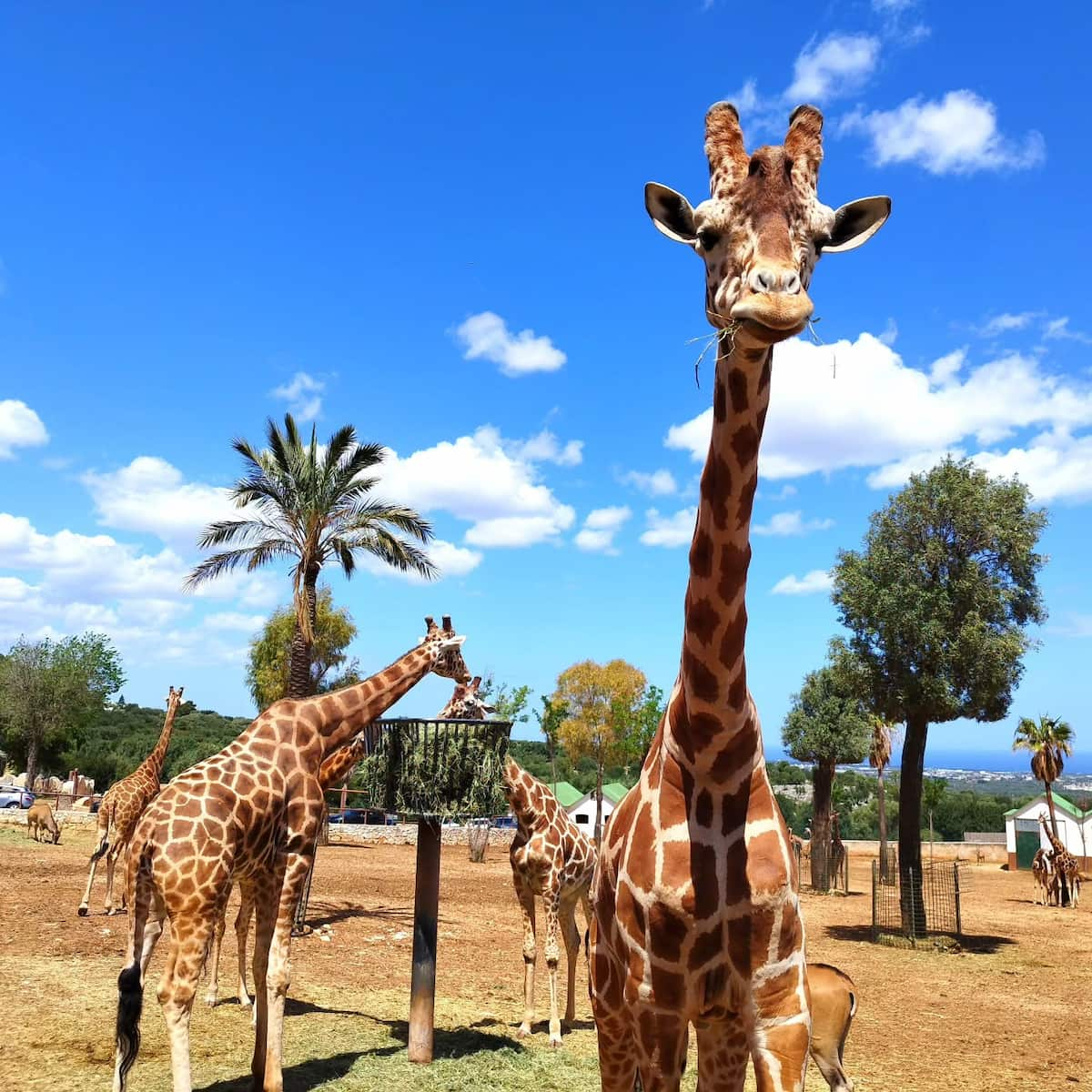
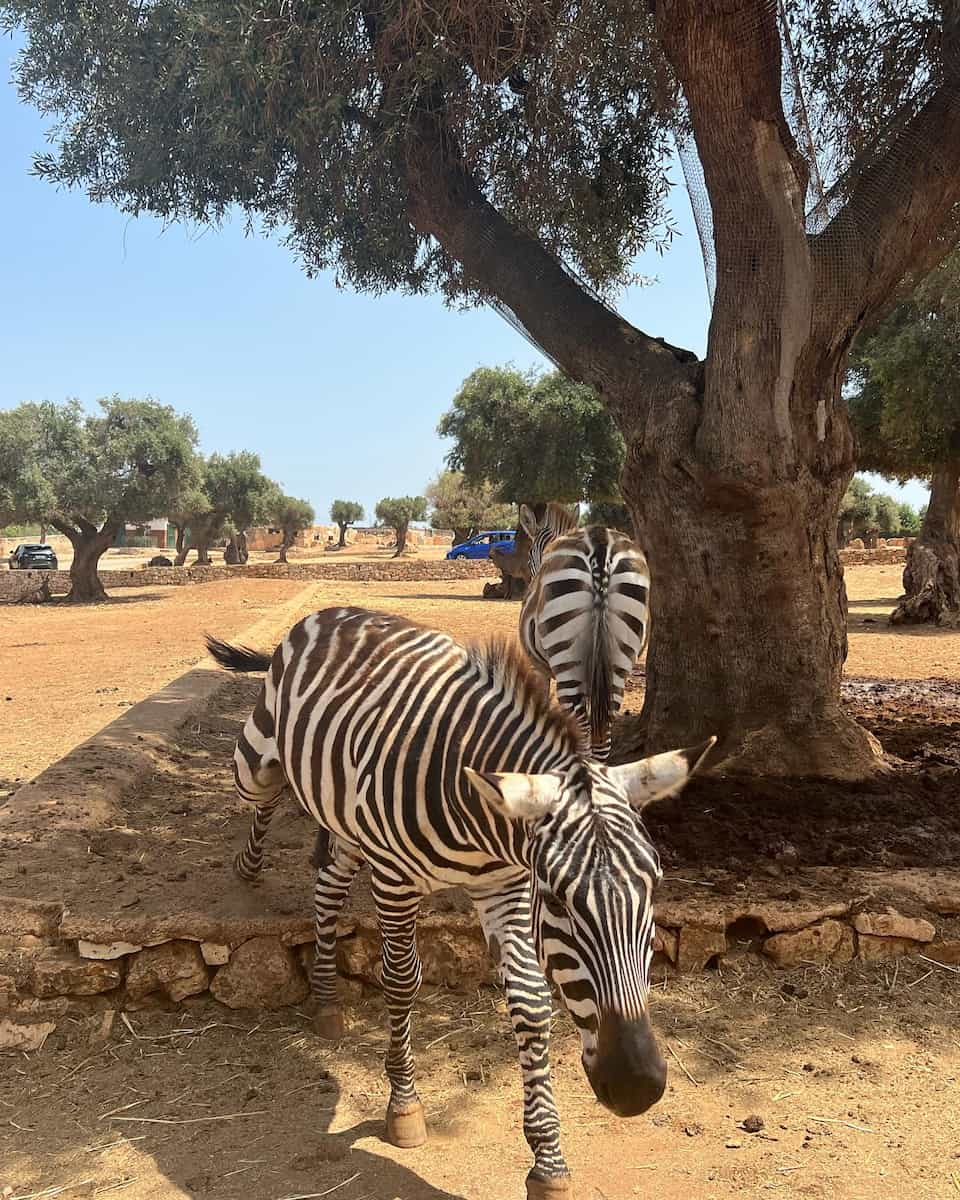
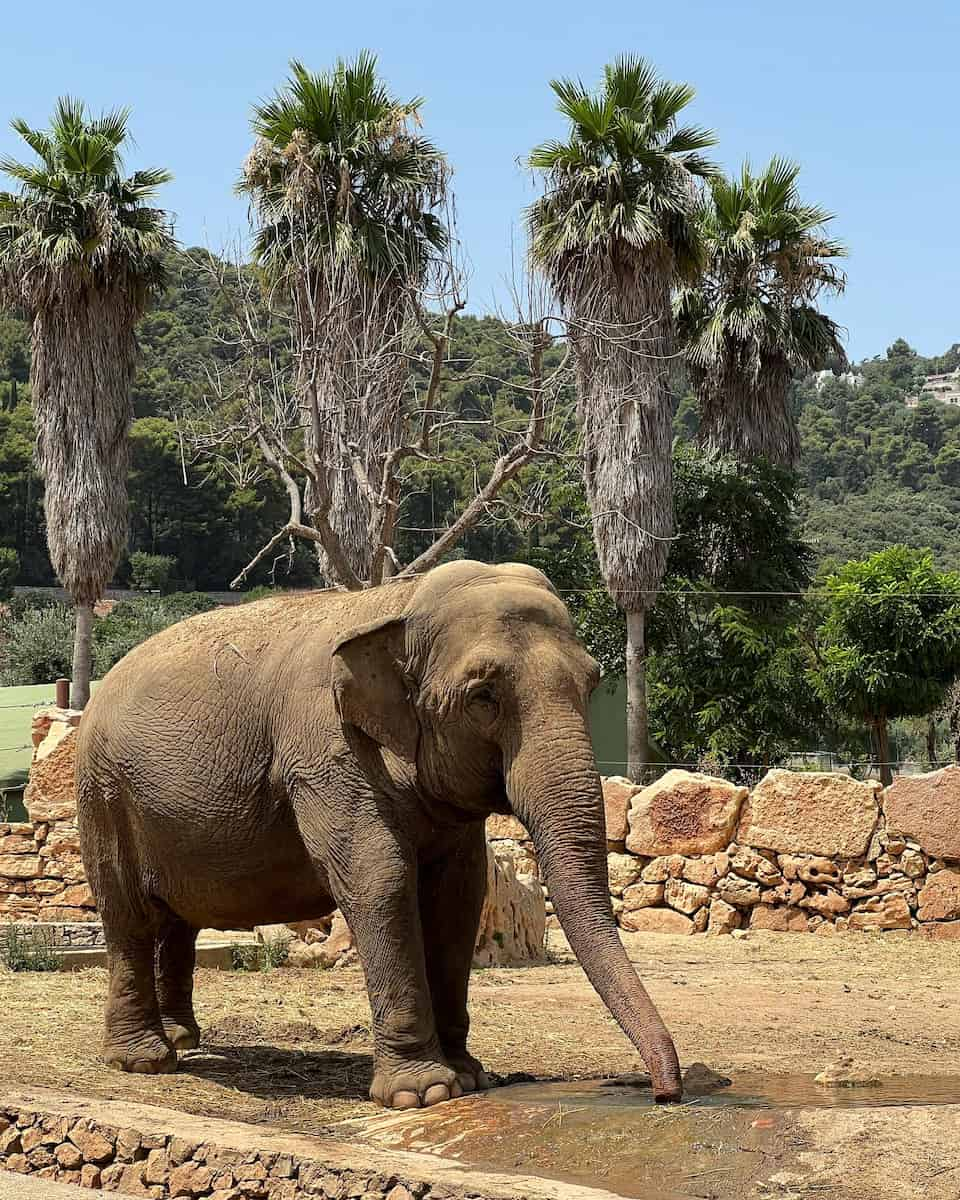
Safari experience. The most thrilling part is the 6-kilometer safari route that can only be completed by car, camper van, or bus. Driving through centuries-old olive and carob trees, I came face-to-face with around 3,000 animals of 200 different species. The park cleverly mixes animals from various ecosystems – I spotted everything from majestic lions and tigers to graceful giraffes, elephants, and zebras roaming freely.
Animals you’ll encounter:
- Lions, tigers, and other big cats
- Giraffes, zebras, and elephants
- Ostriches, llamas, and camels
- Deer and flamingos
Beyond the safari. After the driving portion, I continued exploring on foot through the Primates’ Area, where I met the beloved gorilla Riù (the park’s star attraction), hyperactive chimpanzees, and friendly lemurs. The pedestrian route is completely immersed in greenery and offers surprising encounters at every turn.
Metrozoo adventure. One of my favorite parts was boarding the Metrozoo – a panoramic monorail that skims over the treetops and takes visitors to a lake area with seals, hippos, singing gibbons, and even brown and polar bears! On the return journey, I passed through the lively monkey village.
- Location: Via Zoo Safari, 72015 Fasano, Italy
- Open daily (check seasonal hours)
- Perfect for families with children of all ages
- Plan to spend a full day to enjoy all attractions
2. Horseback Riding in Parco Dune Costiere
Eco-adventure. One of my most memorable experiences near Brindisi was horseback riding through the stunning Parco Dune Costiere (Coastal Dunes Park). This eco-sustainable adventure offers a unique way to connect with the natural beauty of Puglia’s landscape.
Sunset magic. I opted for the sunset ride along the golden sandy coast of Torre Canne, and it was absolutely magical! There’s something incredibly peaceful about slowly trotting along as the sun disappears on the horizon, painting the waves in shades of pink and orange. The experience provides a perfect balance of adventure and tranquility.
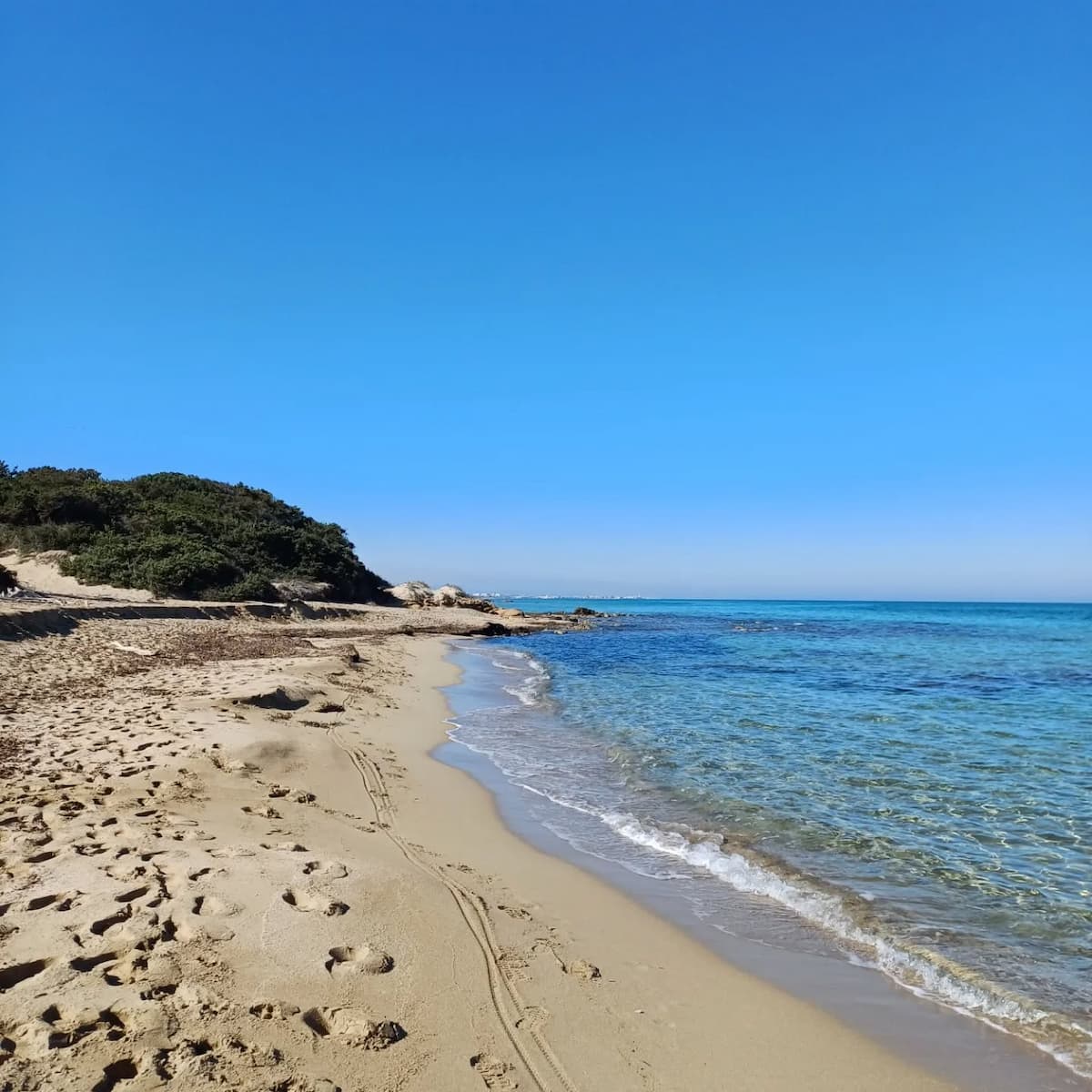
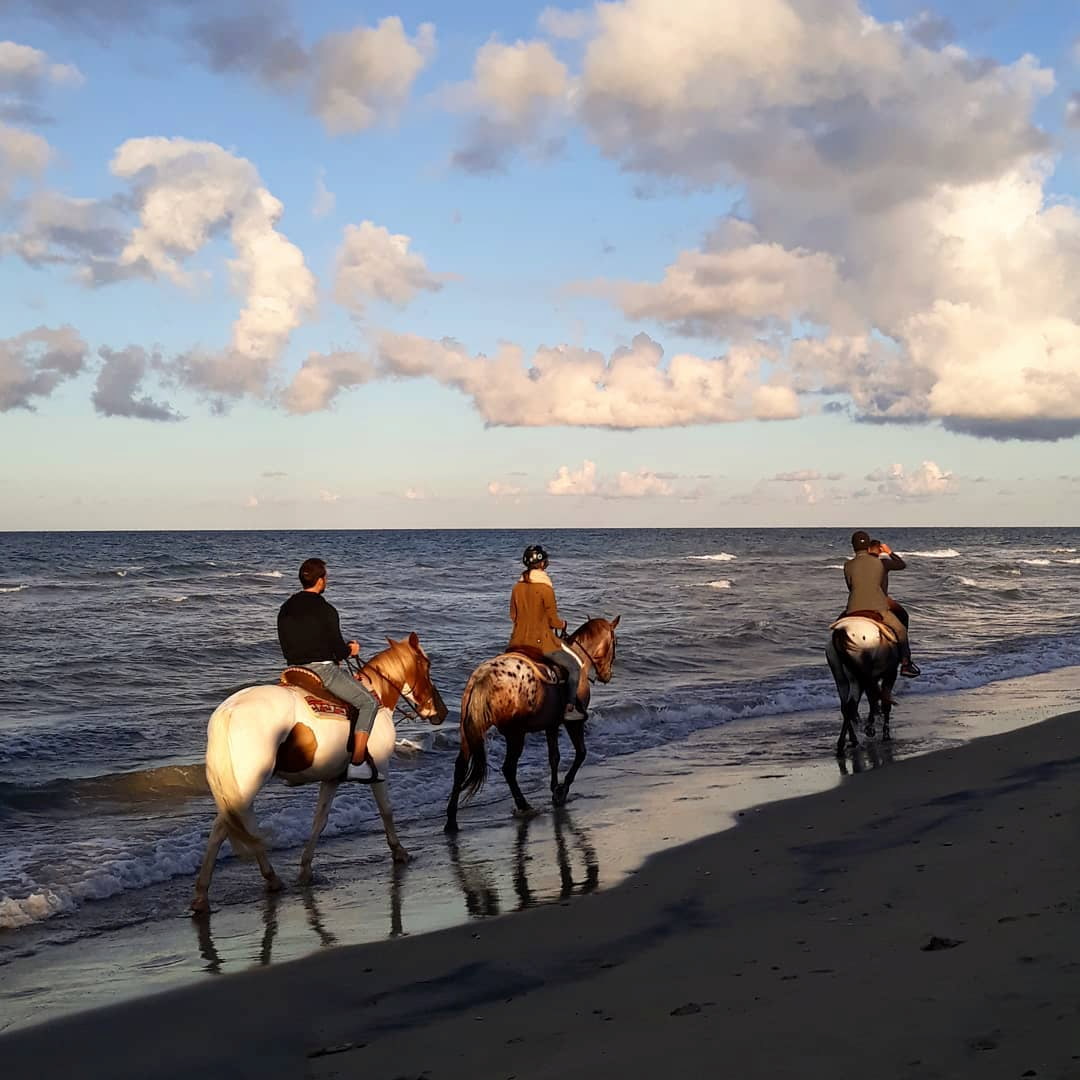
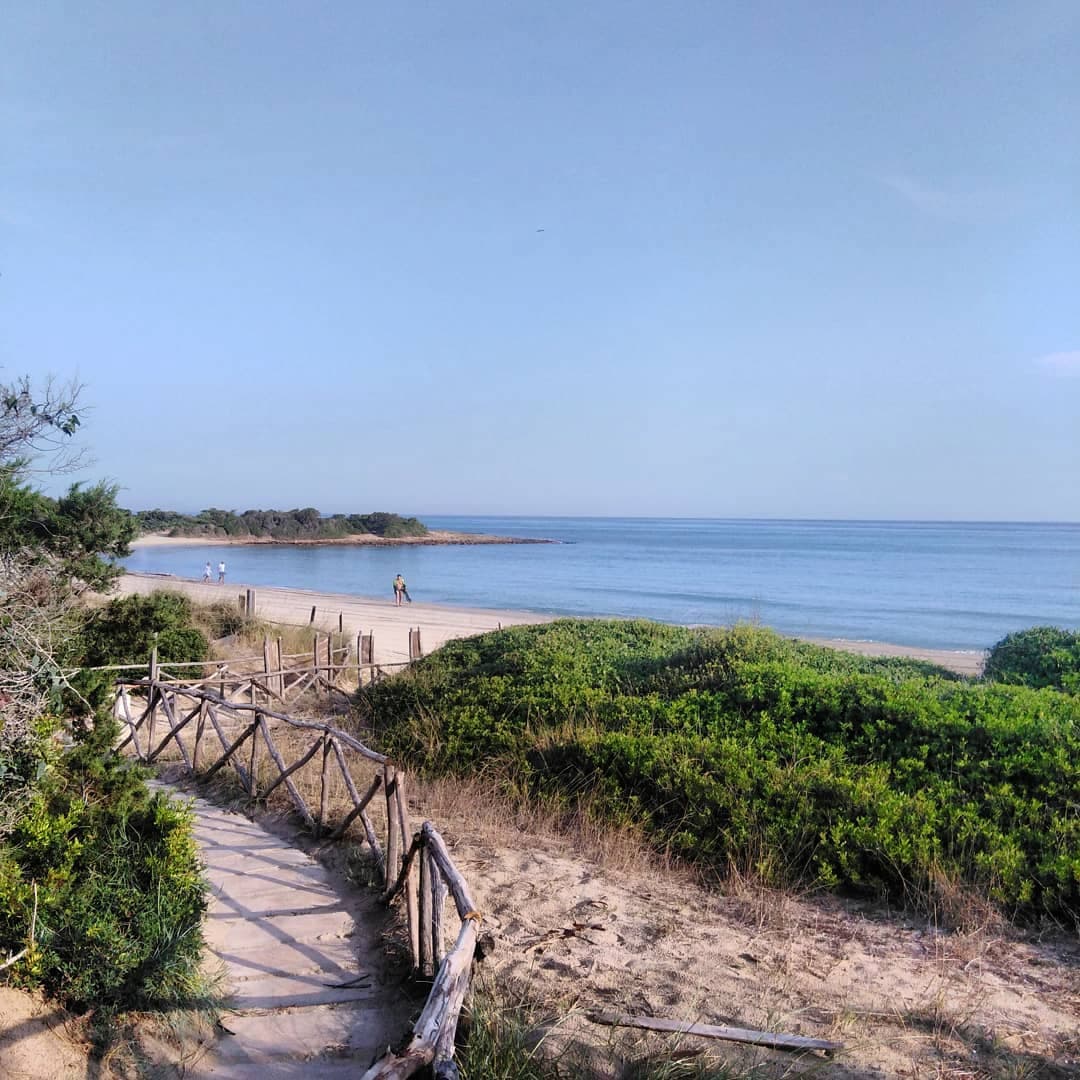
Natural beauty. The park itself is a protected area of remarkable biodiversity, featuring Mediterranean scrub, ancient olive groves, and pristine coastline. As we rode through the paths, my guide pointed out native plants and wildlife that make this ecosystem so special.
Perfect for beginners. Don’t worry if you’ve never ridden before – the tours cater to all experience levels, and the horses are well-trained and gentle. My guide provided clear instructions and stayed close throughout the journey, ensuring everyone felt comfortable and safe.
Booking information:
- Available daily upon reservation
- Contact: +39 080 405 4038 or +39 339 72 42 900
- Tours typically last 1-2 hours
- Suitable for both adults and children (usually 8+ years)
3. Kayaking at Sant’Andrea Island
Water exploration. For a refreshing adventure on the Adriatic Sea, I tried kayaking around Sant’Andrea Island near Brindisi. This small island sits at the entrance to Brindisi’s harbor and offers a unique perspective of the coastline and the impressive Castello Alfonsino.
Crystal waters. Paddling through the crystal-clear waters was both exhilarating and peaceful. The transparent kayaks available from some tour operators allowed me to observe marine life below – schools of colorful fish darting beneath my boat created a natural aquarium experience!
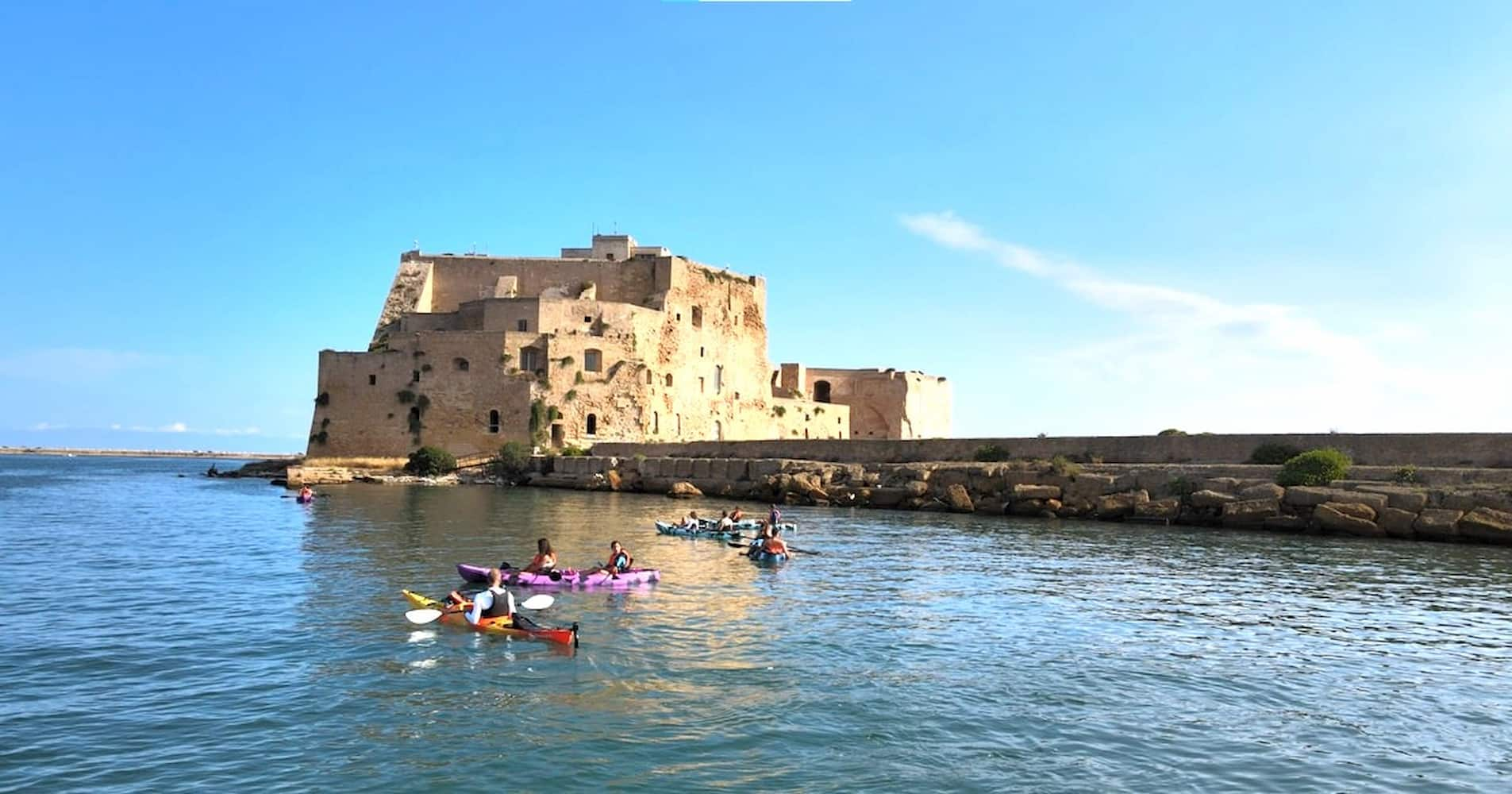
Hidden coves. The real magic of kayaking here is discovering secluded coves and small beaches that are inaccessible by land. I found a perfect little spot to beach my kayak and enjoy a refreshing swim away from the crowds.
Historical perspective. Circling the island provided stunning views of Castello Alfonsino (also known as Red Castle) from the water – a perspective few tourists get to experience. My guide shared fascinating stories about the castle’s history and its role in protecting Brindisi’s harbor.
Sunset option. If possible, book a late afternoon session to catch the golden hour light on the water. The setting sun creates a magical atmosphere as it reflects off the sea and illuminates the historic buildings along the coast.
⭐ Best Activities
- Brindisi: Kayaking at Sant'Andrea Island & Turtle Watching – Paddle around Sant’Andrea Island in a kayak while enjoying the beautiful coastal scenery and possibly spotting sea turtles in their natural habitat.
Free Things to Do in Brindisi
1. Visit Torre Guaceto Nature Reserve
Natural paradise. Just north of Brindisi, I discovered the breathtaking Torre Guaceto Nature Reserve – a WWF protected area that spans both land and sea. The name comes from the Arabic “Al Gawsit” meaning “the place of fresh water,” reflecting the life-giving springs found in this ecological treasure.
Pristine beaches. The reserve boasts some of the most unspoiled beaches I’ve seen in Italy, with dunes reaching up to 10 meters high. The crystal-clear waters are perfect for swimming and snorkeling, and I spent hours exploring the underwater world teeming with marine life.
Diverse ecosystems. What makes this place special is its variety of habitats – from freshwater wetlands to Mediterranean maquis, coastal dunes to seabed. During my visit, I spotted numerous bird species including marsh harriers, herons, and kingfishers. The reserve is also home to a Sea Turtle Recovery Center dedicated to protecting these magnificent creatures.
Activities in the reserve:
- Birdwatching in the wetland areas
- Snorkeling in the protected marine zone
- Hiking and cycling on designated trails
- Photography of unique flora and fauna
Visitor information. The reserve is accessible only on foot or by bicycle to preserve its natural state. During summer, you can reach it by bus from Brindisi. If driving, take the SS 379 road and exit at Serranova, following signs to Punta Penna Grossa where you’ll find parking about 500 meters from the beach. In summer, there’s a shuttle train service and bicycle rentals available.
2. Piazza Vittoria
City heart. Wandering through Brindisi’s historic center, I found myself in the beautiful Piazza della Vittoria – one of the city’s main squares and a perfect spot to experience local life. The square sits at the intersection of Brindisi’s two most important streets, making it a natural gathering place.
Shaded retreat. What I loved most about this piazza is its tree-lined avenue on both sides, providing welcome shade during hot summer days. I joined locals on the benches beneath the trees, enjoying the refreshing breeze and watching the world go by – a quintessential Italian experience that costs nothing but offers priceless cultural insights.
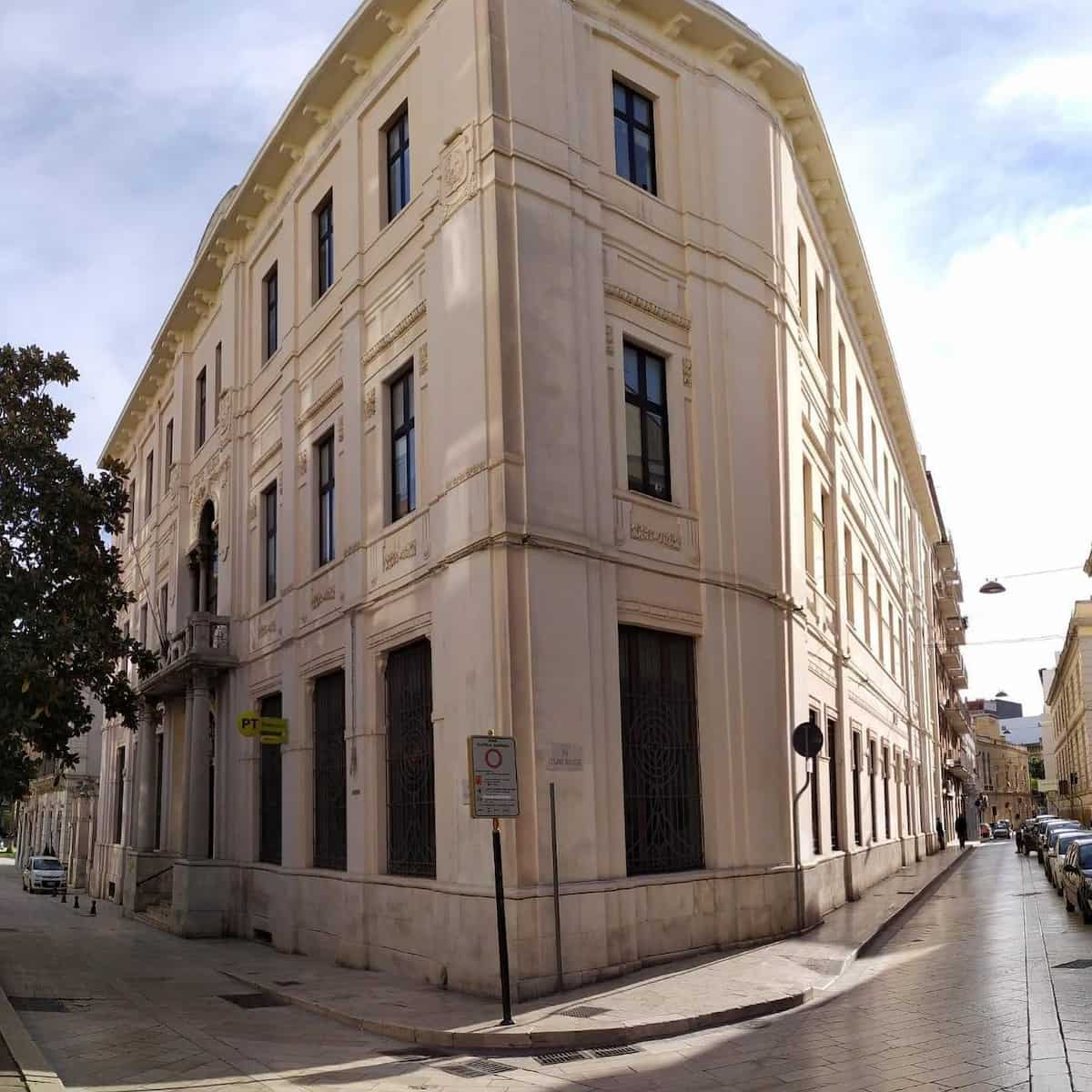

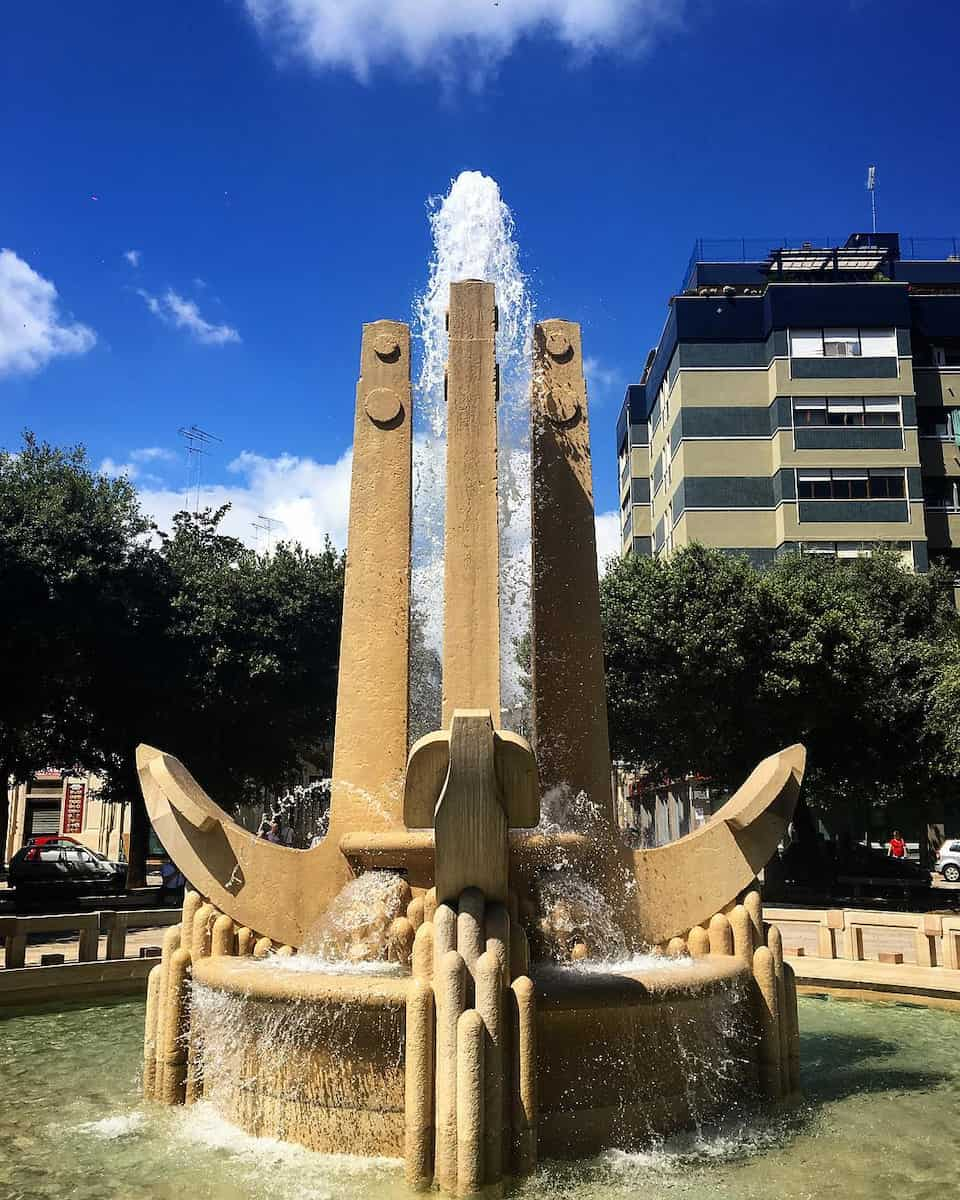
Historical fountain. The square’s centerpiece is the Fontana de Torres, named after the Spanish governor who ruled Brindisi in the 1600s. An inscription on the fountain celebrates the restoration of the Roman aqueduct, comparing it to damage caused by the previous Norman lord William I. This small detail offers a fascinating glimpse into the city’s complex history.
People-watching paradise. I spent a delightful afternoon here simply observing local life – elderly gentlemen playing cards, children chasing pigeons, and families enjoying gelato. The square comes alive in the evening during the traditional passeggiata (evening stroll), when it seems the entire city comes out to socialize.
Nearby attractions. From Piazza Vittoria, you can easily walk to other important sites including the Virgil monument, Gandhi statue, and the beginning of Corso Umberto – Brindisi’s main shopping street. This central location makes it the perfect starting point for exploring the city on foot without spending a euro.
Seasonal Activities in Brindisi
Christmas in Brindisi
Festive transformation. Brindisi comes alive during the Christmas season with “Brindisi and the widespread Christmas” program running from December 6 to January 6. The historic center transforms into a magical Christmas village with twinkling lights, decorations, and a festive atmosphere that captivates both locals and visitors alike.
Piazza Duomo celebrations. The heart of Christmas in Brindisi is undoubtedly Piazza Duomo, where spectacular light shows are projected onto the cathedral’s façade. I was mesmerized by how the ancient stones came alive with colorful animations telling Christmas stories. The square hosts daily events including concerts, puppet shows, and traditional performances.
Christmas markets. The Mercatini del Chiostro at the Corte degli Artigiani (former convent Scuole Pie) are a must-visit destination. Open on weekends from December 6-8, 13-15, and 20-22, these markets feature local artisans selling handcrafted gifts, traditional decorations, and delicious Puglian specialties. I found the perfect olive wood nativity scene here that now decorates my home every Christmas.
Santa’s Village activities:
- Creative workshops for children
- Puppet theater performances
- Christmas cookie decorating sessions
- Storytelling events
- Photo opportunities with Santa and his elves
Culinary delights. Christmas in Brindisi is a feast for the senses, especially your taste buds! Don’t miss the opportunity to try traditional Christmas sweets like cartellate (fried dough soaked in honey) and pettole (fried dough balls) available at the markets. I participated in an almond paste sweets workshop (December 13) where I learned to make traditional Puglian Christmas treats.
Summer Festivals and Events
Music festival season. Summer in Brindisi brings an explosion of music festivals celebrating everything from classical to electronic, rock to traditional folk music. The region hosts several renowned festivals including Piano Lab, Classiche Forme, and Polifonic, attracting music lovers from across Italy and beyond.
Beach soccer championship. From July 11-13, Brindisi becomes the capital of beach soccer when Italy, France, Argentina, and Brazil compete at the spectacular Guna Beach club just north of the city. The competition is broadcast live on Sky Sport, but nothing beats watching these matches in person with the Adriatic Sea as a backdrop.
Food and wine celebrations. Throughout summer, various food and wine festivals celebrate Puglia’s culinary heritage. Local restaurants and vendors set up stalls offering traditional dishes, while local wineries provide tastings of regional varieties. The combination of delicious food, excellent wine, and warm summer evenings creates an unforgettable atmosphere.
Maritime traditions. As a historic port city, Brindisi celebrates its connection to the sea with various maritime events during summer. The harbor fills with decorated boats, sailing competitions, and fishing tournaments, culminating in seafood feasts along the waterfront.
Autumn Foliage
Natural paradise. Just a short drive north of Brindisi, the Torre Guaceto Nature Reserve offers a spectacular setting for autumn walks. This WWF protected area spans both land and sea, creating diverse ecosystems that transform with the changing seasons.
Autumn colors. While Mediterranean landscapes don’t display the dramatic color changes seen in northern forests, autumn at Torre Guaceto has its own subtle beauty. The olive groves take on a silvery sheen, while the Mediterranean scrub displays muted golds and russets. The contrast with the deep blue Adriatic creates a photographer’s dream.
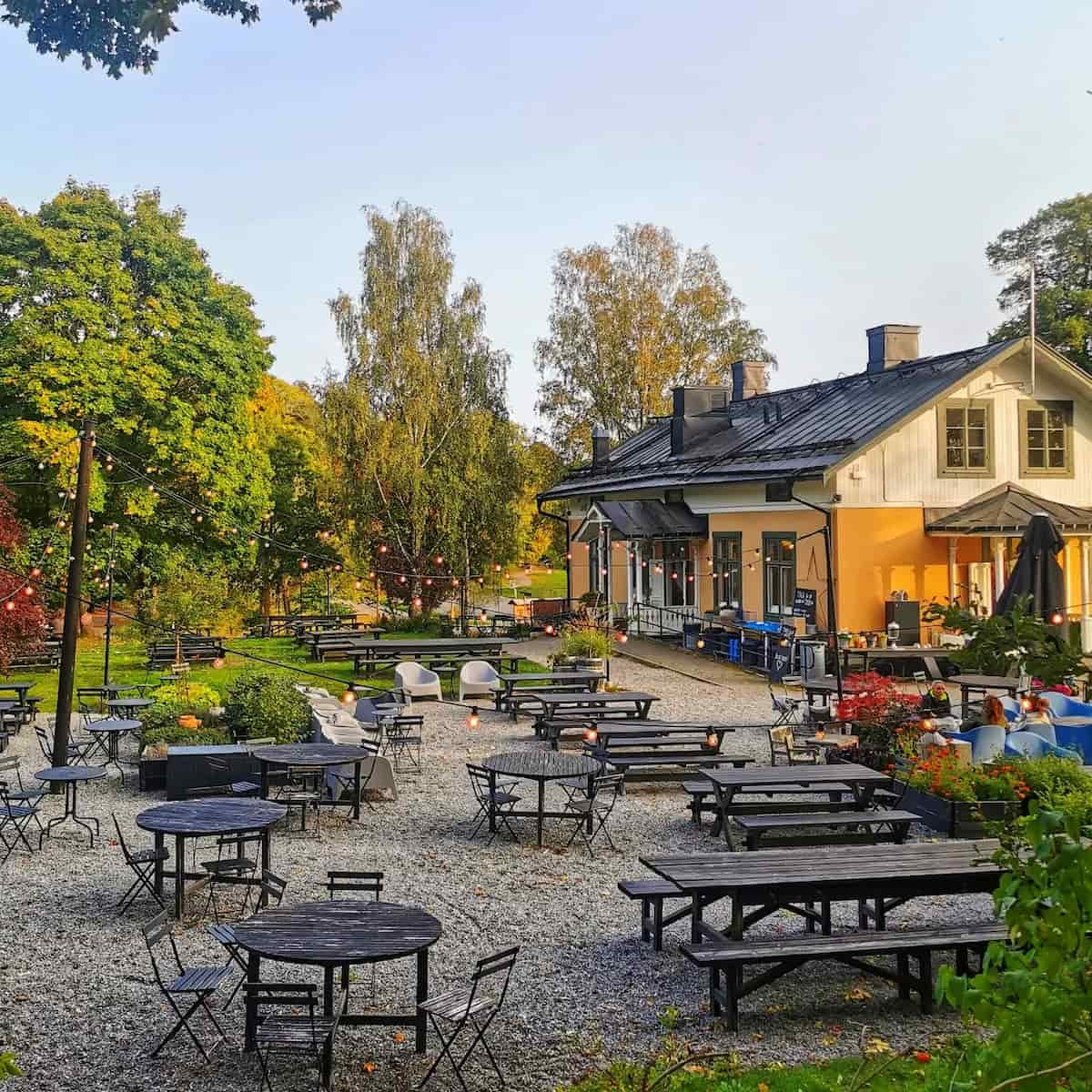
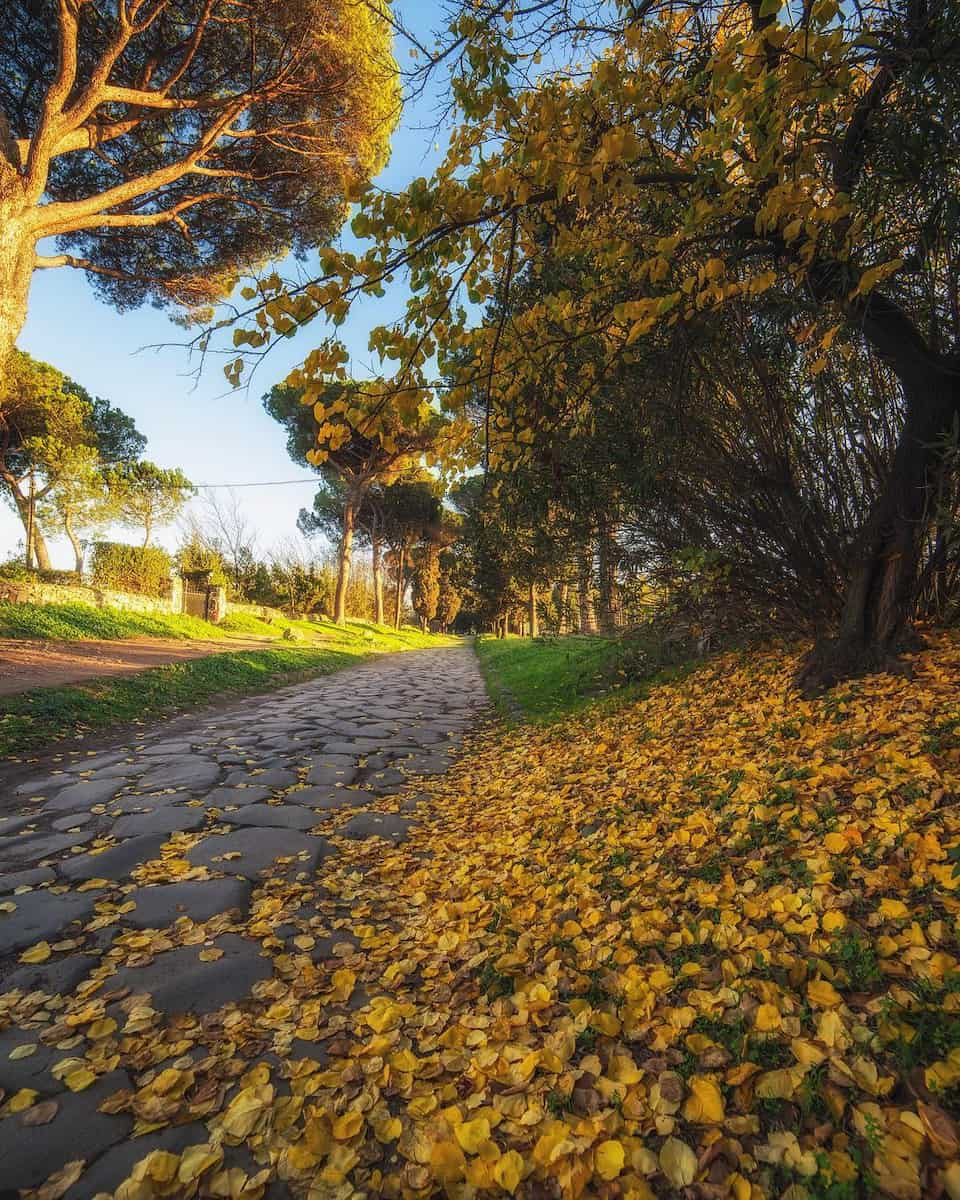
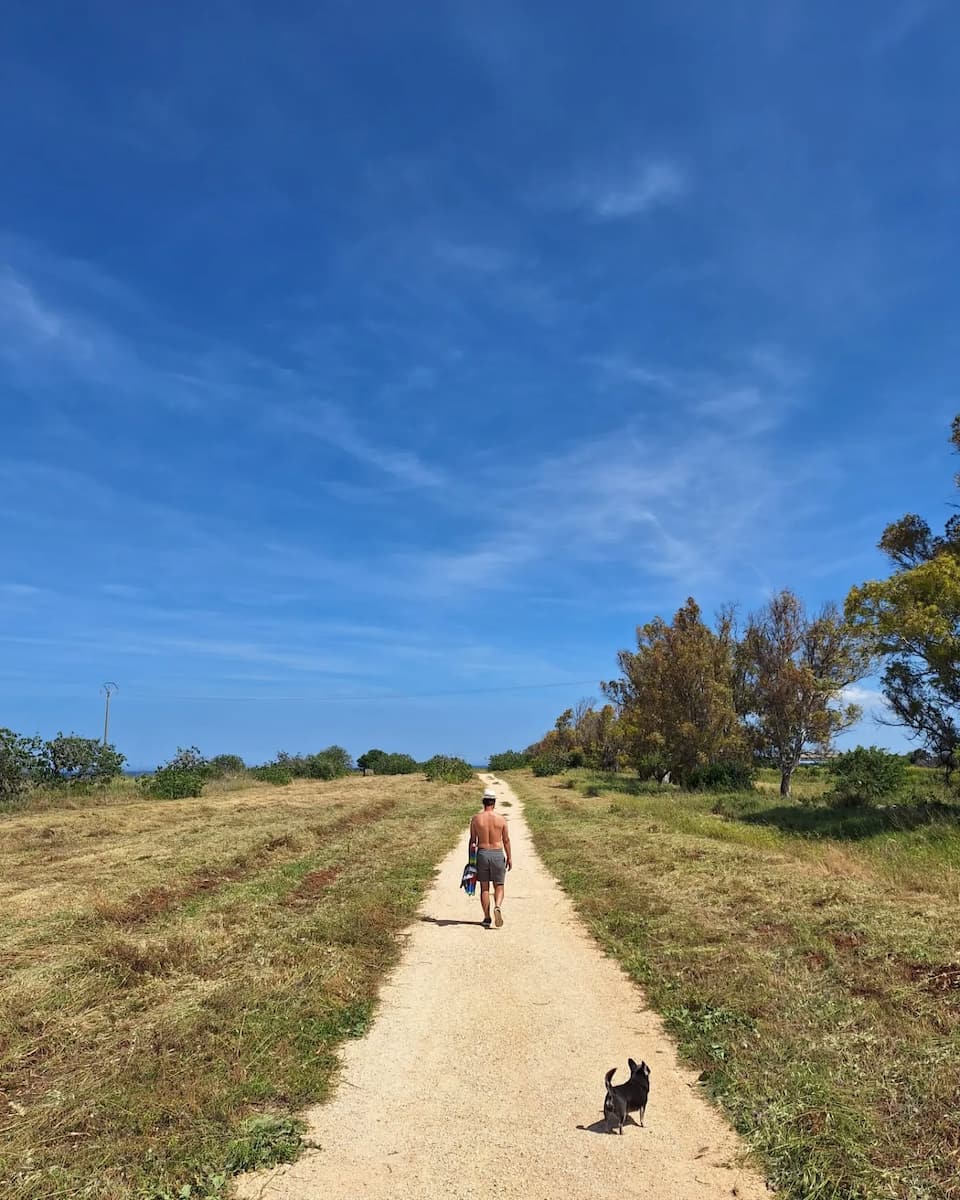
Birdwatching opportunities. Autumn is particularly special at Torre Guaceto for birdwatching enthusiasts. The reserve becomes a crucial stopover for migratory birds, with October and November bringing spectacular murmurations of starlings that paint dramatic patterns across the evening sky. I was amazed to learn from a guide that swallows double their body weight before departing the reserve.
Accessibility. The reserve is accessible only on foot or by bicycle to preserve its natural state. If driving, take the SS 379 road and exit at Serranova, following signs to Punta Penna Grossa where you’ll find parking about 500 meters from the beach. The reserve is open year-round from sunrise to sunset.
Day Trips from Brindisi
1. Alberobello (Trulli Houses)
UNESCO wonder. Just an hour’s drive from Brindisi, I discovered the enchanting town of Alberobello, home to over 1,500 trulli houses that earned UNESCO World Heritage status in 1996. These iconic conical-roofed limestone dwellings date back to the 14th century and represent a dry-stone building tradition that’s thousands of years old.
Architectural uniqueness. Walking through Alberobello’s narrow cobblestone streets, I was mesmerized by the distinctive trulli with their whitewashed walls and gray stone roofs. What makes these structures remarkable is their construction technique – built without mortar using locally sourced limestone, making them surprisingly durable despite their ancient origins.
Two districts to explore:
- Rione Monti: The larger and more touristy neighborhood with numerous trulli converted into shops and restaurants
- Rione Aia Piccola: A quieter, more residential area where locals still live in these historic dwellings
Historical significance. The trulli illustrate the long-term use of dry-stone building techniques with a history spanning thousands of years in the Mediterranean region. They’re an outstanding example of vernacular architecture that has remarkably retained its original form within a historic urban landscape.
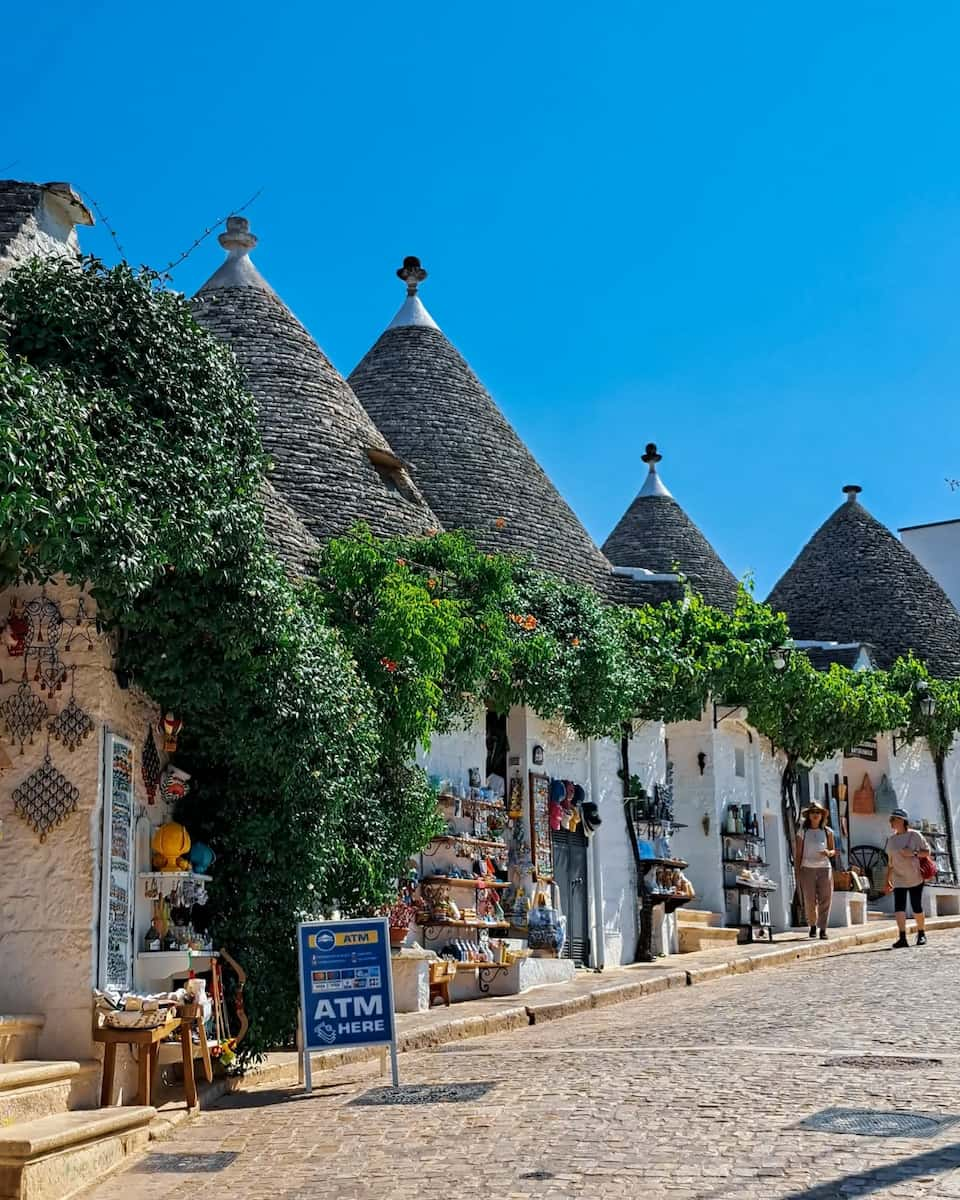
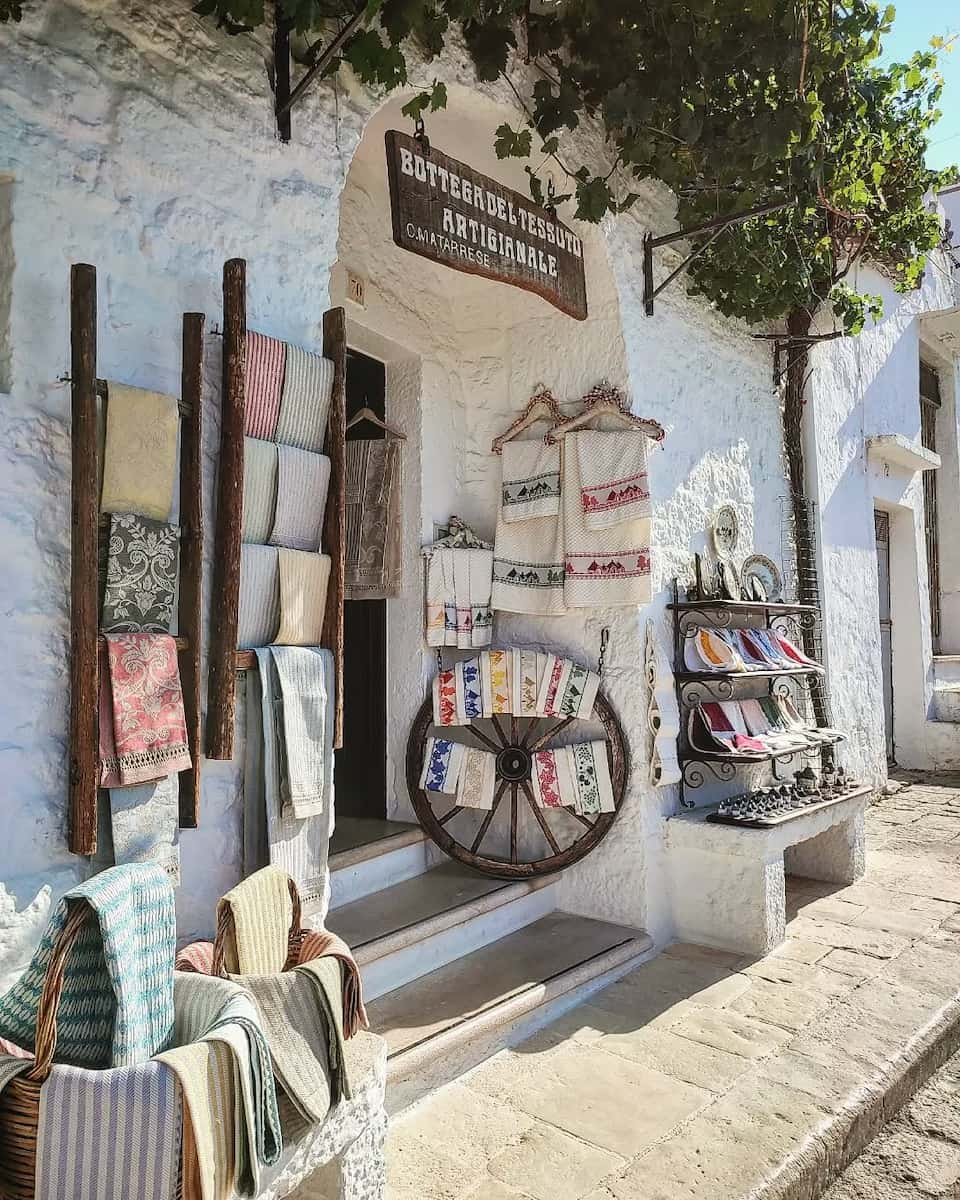
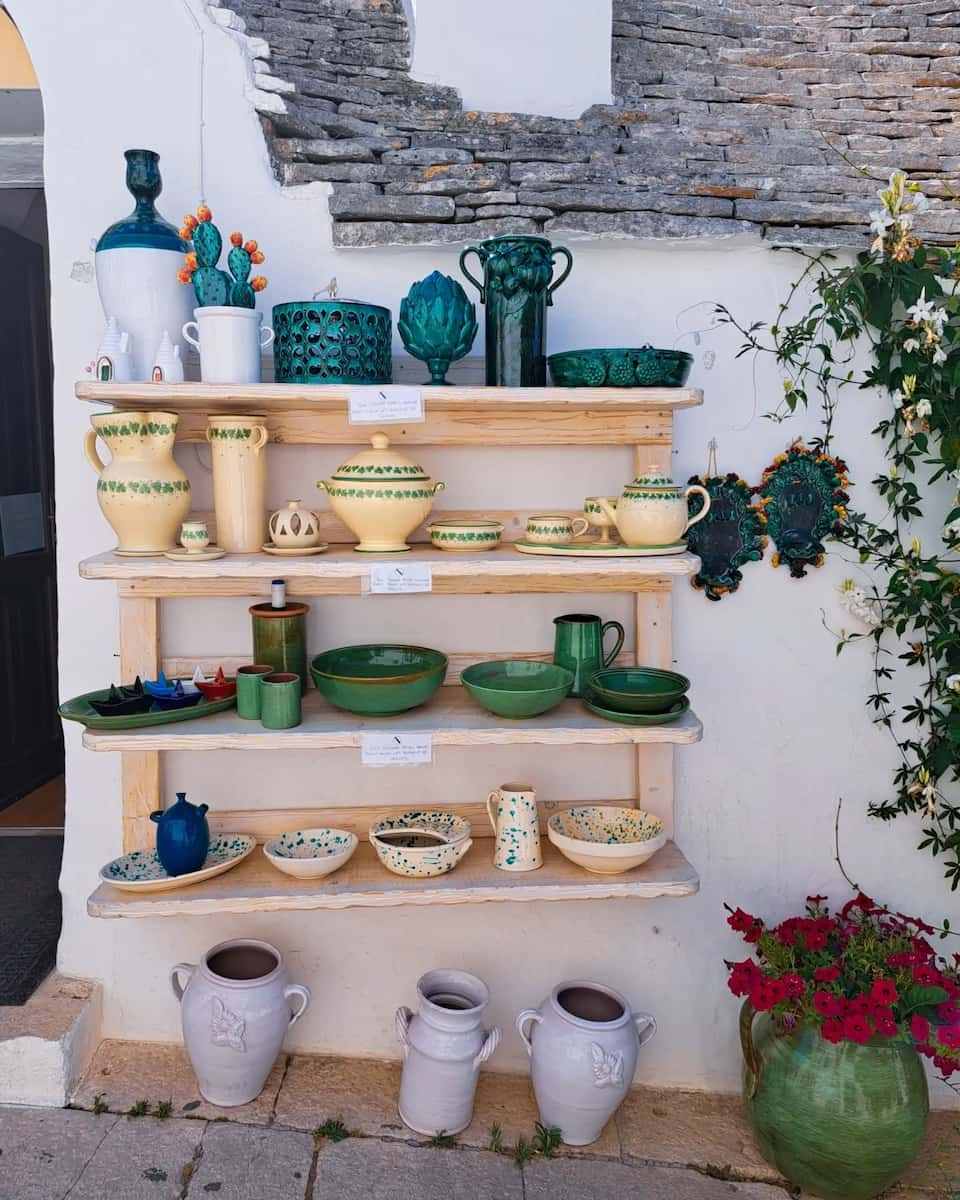
Cultural experience. Despite being undeniably touristy (especially in summer), Alberobello hasn’t lost its charm. I spent hours exploring the quirky shops selling hand-painted ceramics, sampling local delicacies in cozy trattorias, and photographing these architectural marvels from different angles. The Trullo Sovrano, dating from the 18th century, stands as the most impressive example and shouldn’t be missed.
⭐ Best Activities
- Tour d'Itria with Electric Bike Tour – Explore the picturesque Itria Valley, including Locorotondo, on an electric bike tour that allows you to enjoy the beautiful countryside with minimal effort.
2. Ostuni (The White City)
Dazzling whitewashed beauty. About 35 kilometers from Brindisi, Ostuni captivated me with its stunning whitewashed buildings cascading down a hillside. Known worldwide as “The White City,” this pearl of Puglia creates a breathtaking visual effect against the blue sky and nearby Adriatic Sea.
Ancient origins. Founded by the Messapians in the seventh century BC and later conquered by the Romans, Ostuni boasts a fascinating history. The city enjoyed a period of splendor under Emperor Frederick II (1194-1250), who freed it from feudal bonds and took the town under his personal protection. The Renaissance marked Ostuni’s maximum development before facing challenges during the 17th century.
Architectural highlights. Wandering through the labyrinthine streets of Ostuni’s historic center, I discovered numerous architectural treasures. Piazza della Libertà features an impressive 21-meter obelisk dedicated to Sant’Oronzo, introducing visitors to the typical baroque architecture of Salento. The Holy Spirit church offers a rare example of late-Gothic architecture in Puglia, while the 15th-century cathedral dedicated to Santa Maria della Assunzione dominates the skyline.
Defensive elements. The city is surrounded by Aragonese walls where Porta Nova and Porta San Demetrio provide access to the historic center. These defensive structures, along with circular towers, reflect Ostuni’s strategic importance throughout history.
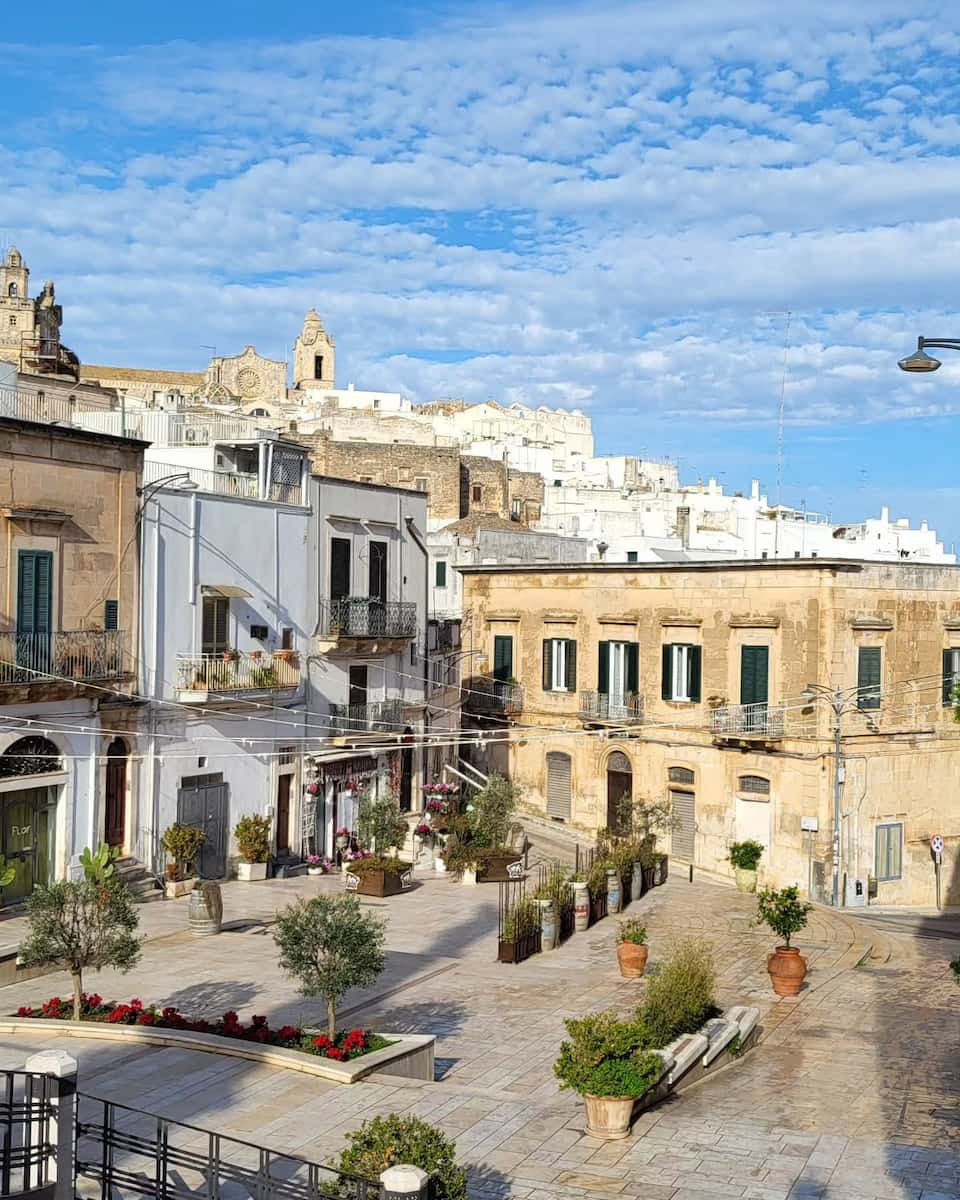
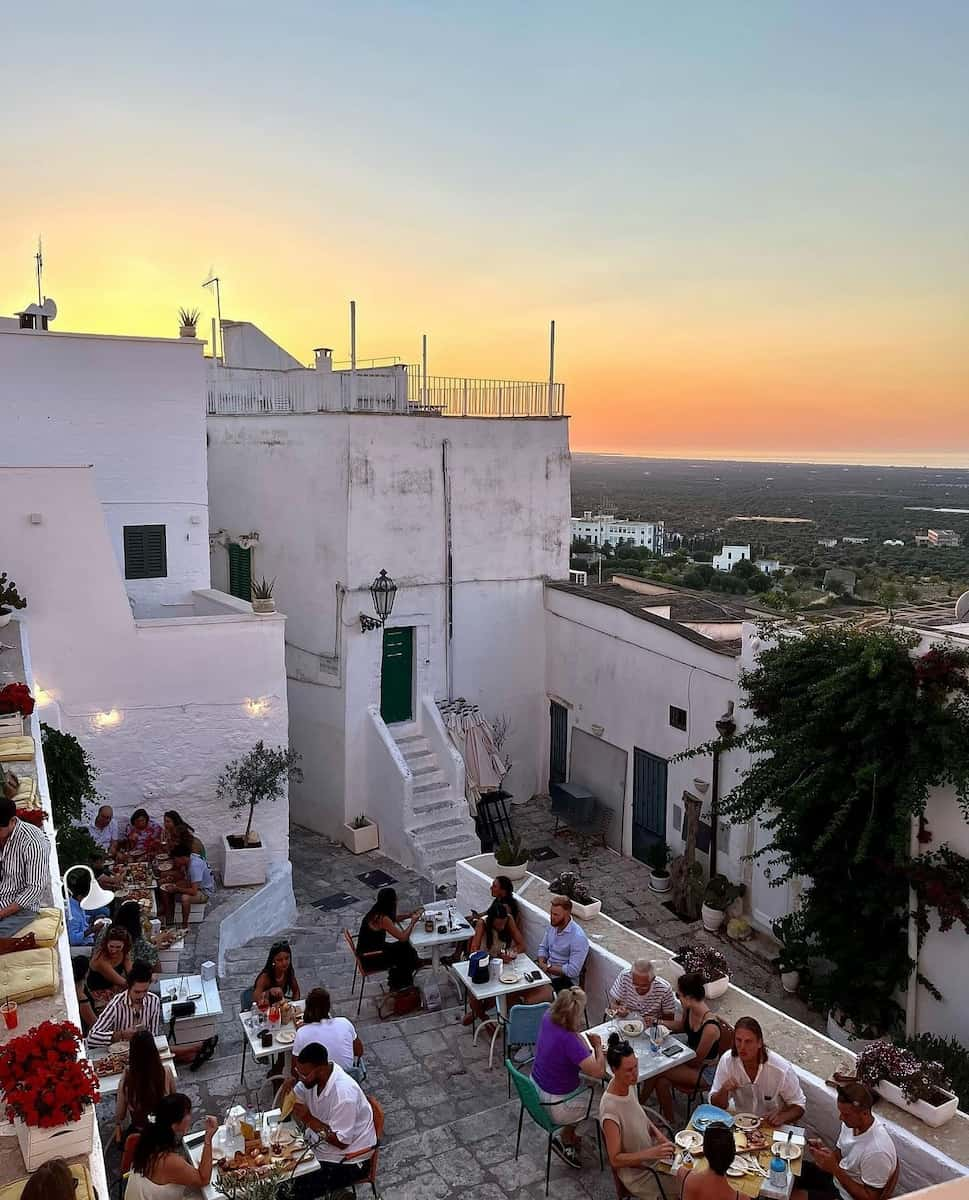
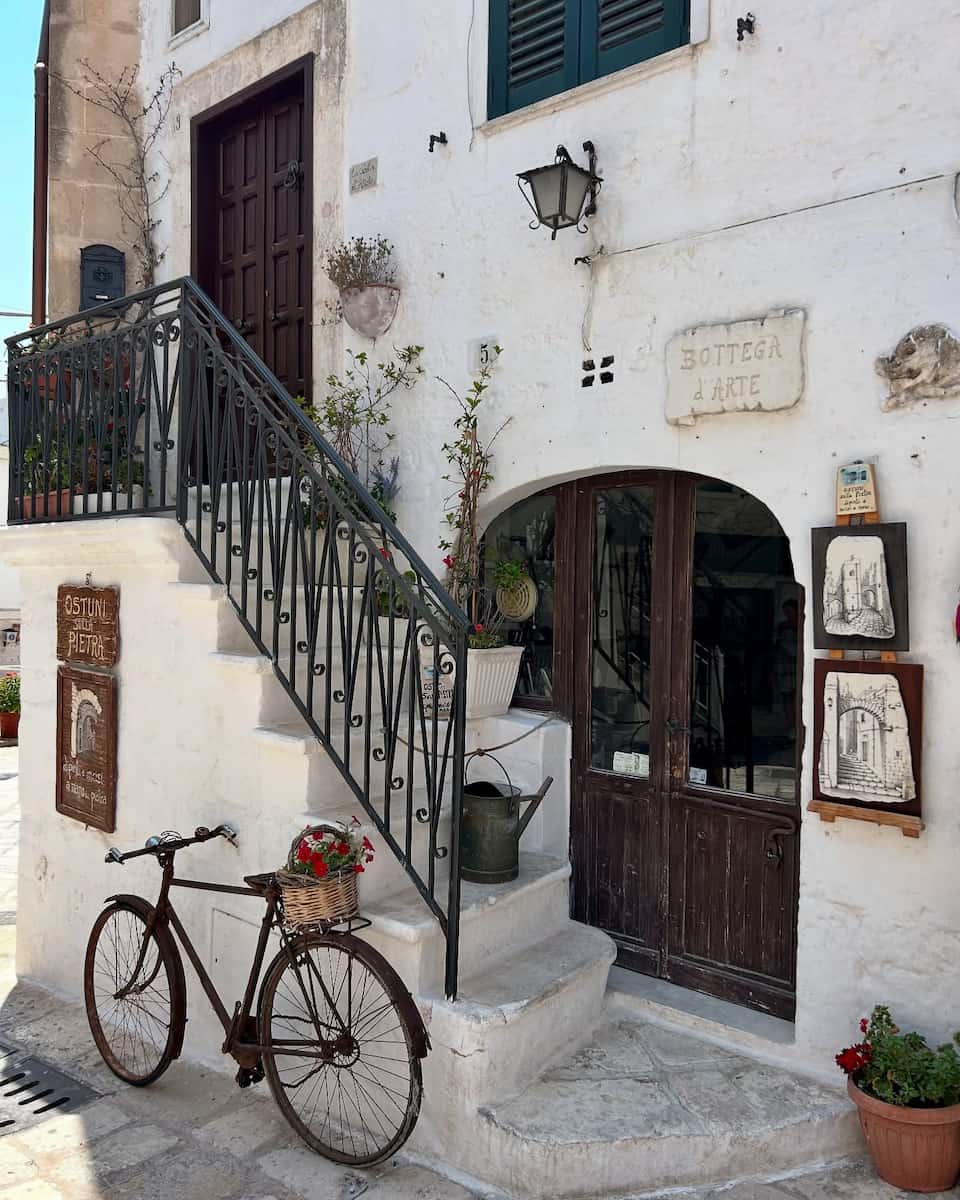
Natural wonders. Just outside the center lie two important parks: the Natural Archaeological Park of Santa Maria di Agnano, where fascinating archaeological finds from the Paleolithic to Middle Ages have been discovered in caves, and the Parco delle Dune Costiere, a wonderful nature reserve preserving biodiversity and protecting endangered species.
⭐ Best Activities
- Tour of the Medieval Village – Discover the charm and history of a medieval village near Brindisi with this guided tour that takes you through ancient streets and historic buildings.
3. Lecce (Baroque Architecture)
Florence of the South. An hour south of Brindisi, I explored Lecce – often called the “Florence of the South” for its extraordinary concentration of baroque architecture. The city experienced a period of great prosperity in the 16th century known as “Barocco Leccese” or Lecce Baroque, resulting in magnificent palaces, churches, and public buildings.
Unique limestone. What makes Lecce’s baroque style distinctive is the local limestone used in construction. This soft, malleable stone allowed artisans to create incredibly intricate decorations, giving the architecture its unique and beautiful appearance.
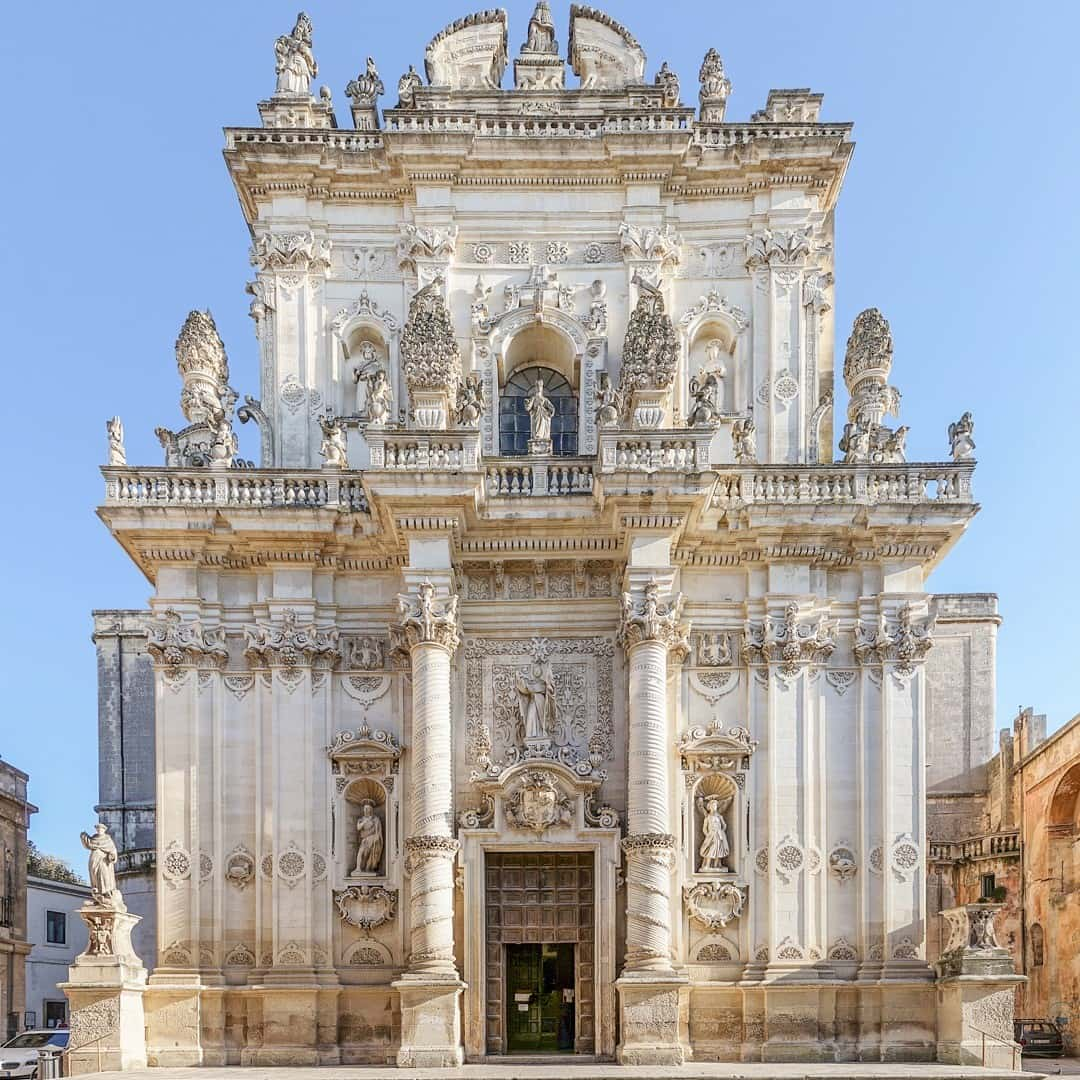
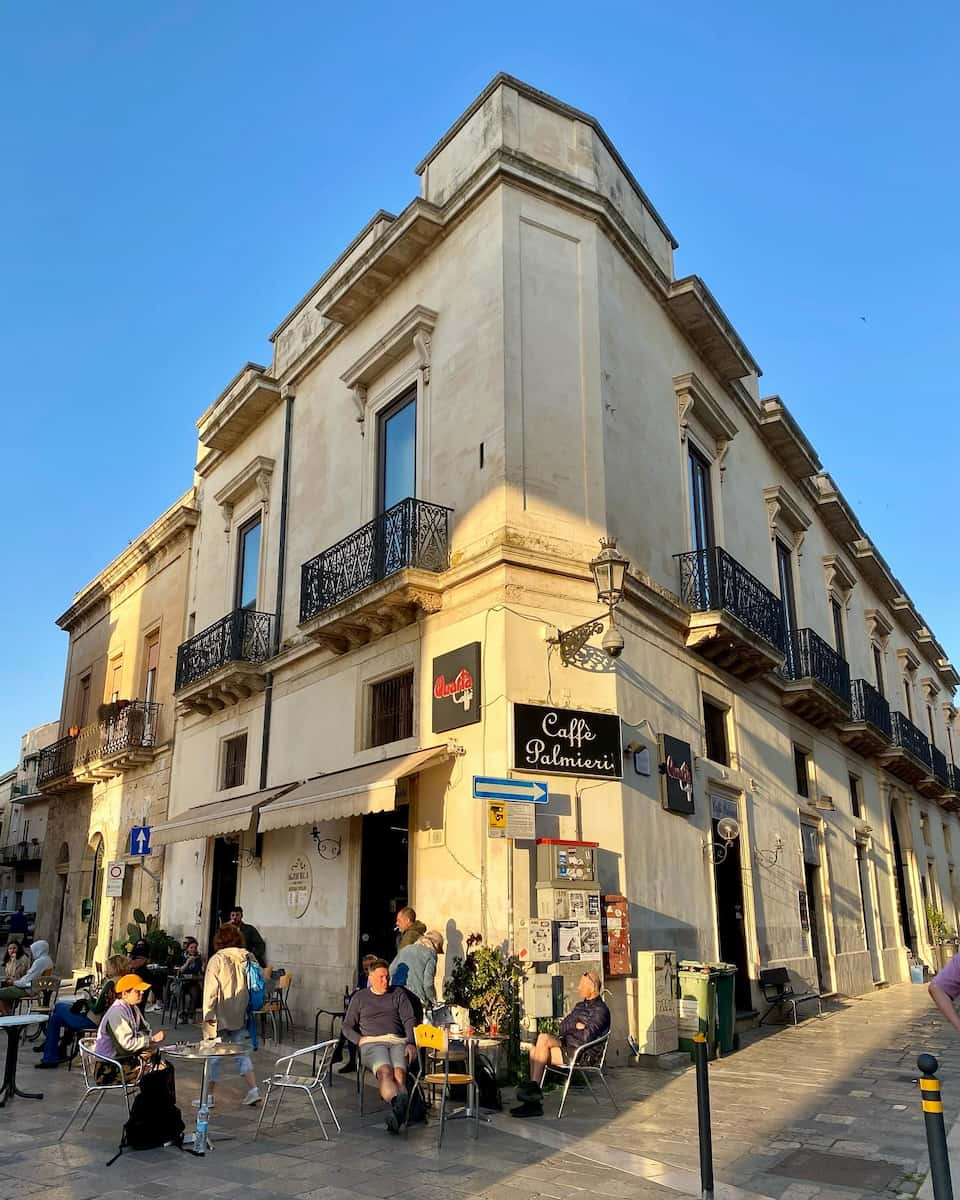
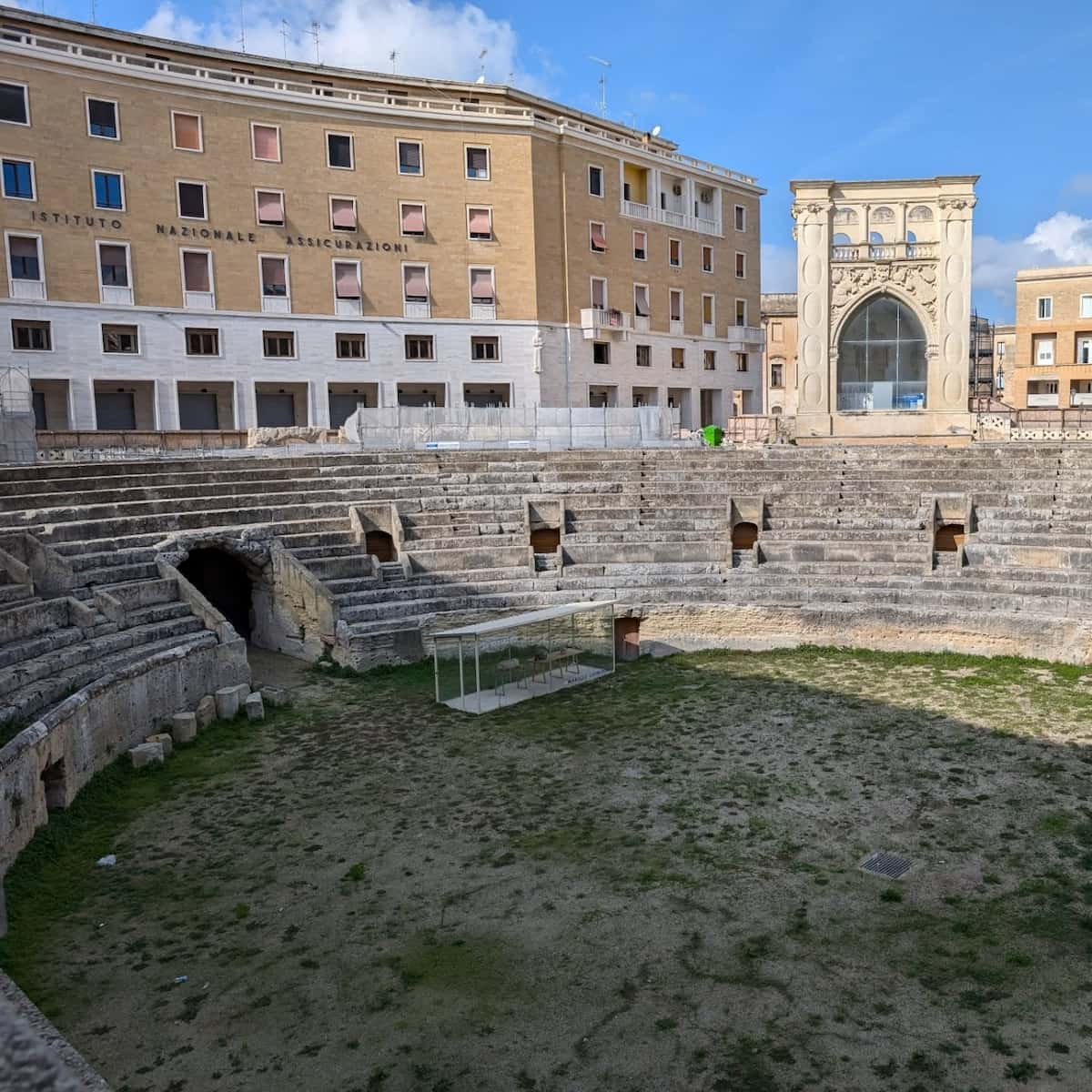
Basilica of Santa Croce. The most emblematic monument of Lecce Baroque, this basilica built between 1549 and 1646 features a façade that’s an ensemble of sculptures and details creating complex plays of light and shadow. The columns, capitals, and floral ornaments combine to create a work of cohesion and refinement, with a large rose window dominating the center.
St. Oronzo Square. The heart of the city, this square features a statue of St. Oronzo atop a Roman column (reportedly donated by Brindisi), erected between 1666 and 1683 to thank the saint for his intercession during the plague. The square is surrounded by historic buildings including the Palazzo del Seggio (built in 1592) and contains a portion of a Roman amphitheater that creates a fascinating contrast between antiquity and the present day.
Architectural diversity. I was impressed by the variety of baroque expressions throughout the city. The church of San Matteo (1667-1700) features a convex facade reminiscent of Borromini’s style and an elliptical plan creating dynamism and movement. Meanwhile, the church of Santa Chiara (renovated 1687-1691) stands out for its octagonal plan – a rare element in churches of that period.
⭐ Best Activities
- Private Cooking Class in Lecce: Traditional Handmade Pasta – Learn to make authentic Puglian pasta in this hands-on cooking class in nearby Lecce, where you’ll master traditional techniques under expert guidance.
4. Locorotondo (Wine Tasting Tours)
Circular beauty. Named among “Italy’s Most Beautiful Villages,” Locorotondo charmed me with its perfectly circular historic center and distinctive ‘cummerse’ – the area’s typical rectangular houses with sloping roofs. The name itself means “round place,” reflecting the town’s unique layout.
Wine heritage. What makes Locorotondo truly special is its renowned wine tradition dating back centuries. The area received DOC (Denominazione di Origine Controllata) status in 1969, making it one of Italy’s longest-established wine appellations. Despite this history, it’s only since the turn of the millennium that these wines have gained wider recognition.
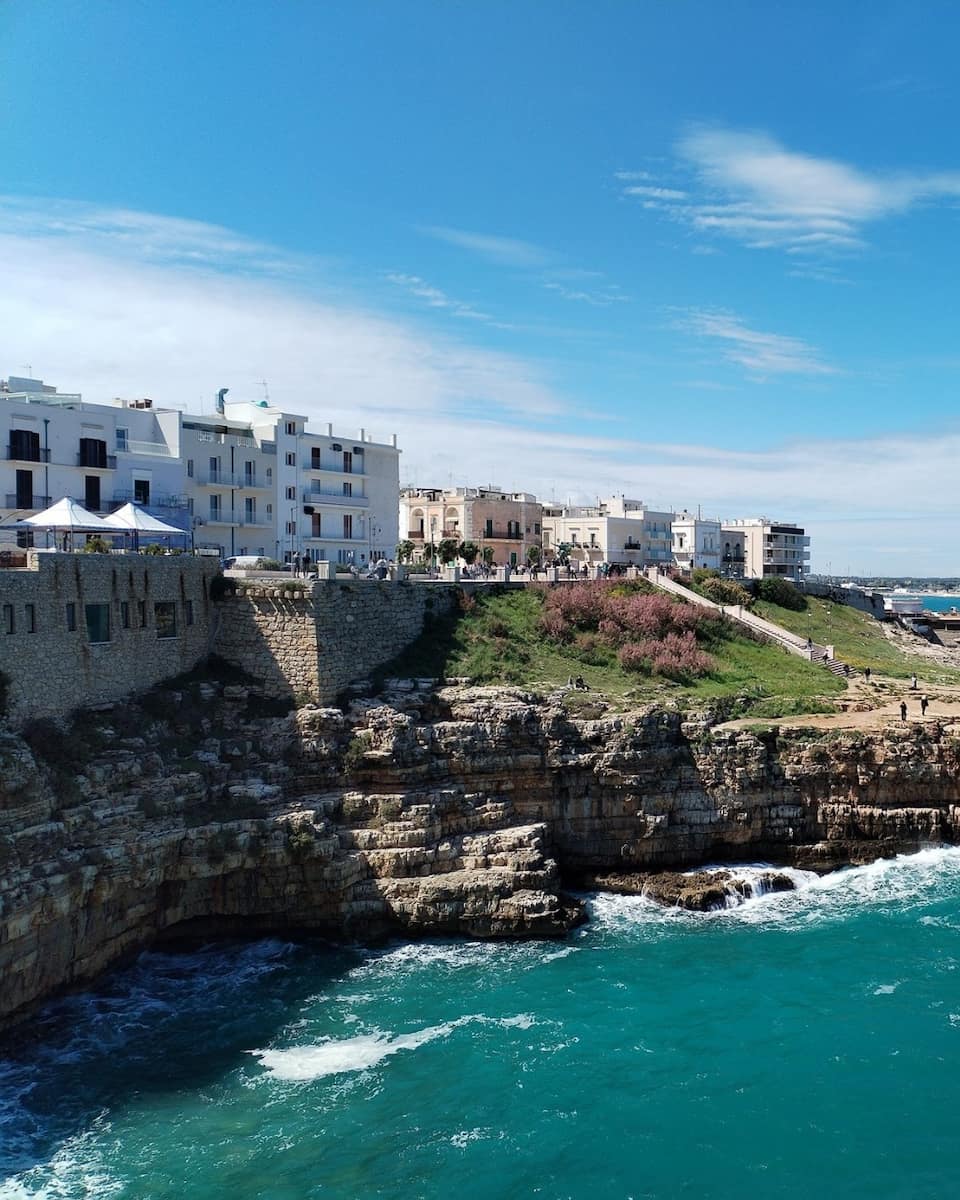
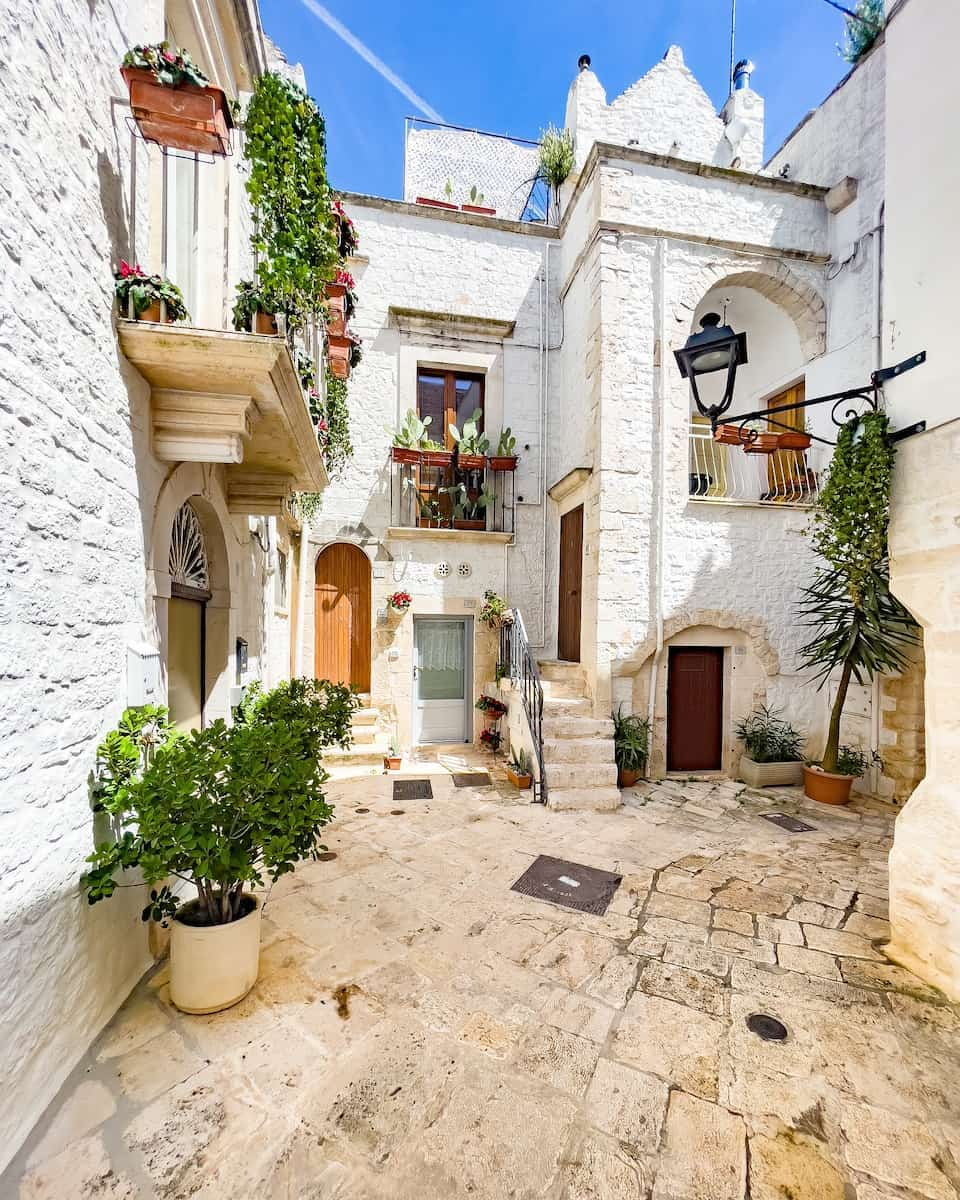
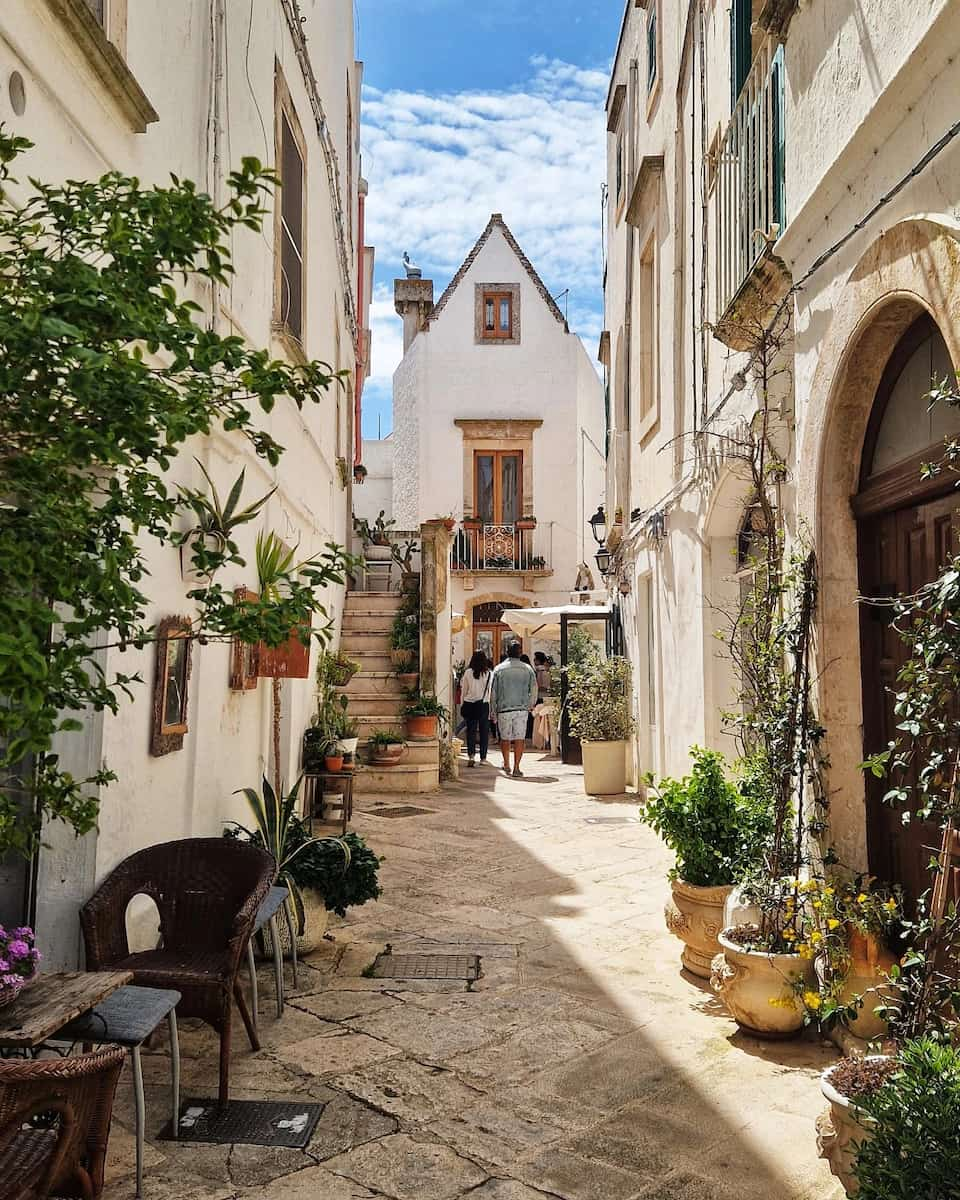
Distinctive white wines. Unlike most of Puglia which is known for rustic reds, Locorotondo specializes in fresh, bright white wines made primarily from Verdeca (minimum 50%) and Bianco d’Alessano (minimum 35%) grapes. These wines stand out for their crisp character and food-friendly nature.
Wine tasting experiences. I joined a guided tour that combined cultural exploration with wine appreciation. After exploring the historic center, we visited a local winery in the picturesque Itria Valley where I learned about the region’s viticultural history and unique terroir. The experience culminated with a tasting of four native wines, including the renowned Locorotondo DOC, paired with typical Apulian products.
E-bike wine tours. For something more active, e-bike tours offer a wonderful way to experience both the town and surrounding countryside. Starting in Locorotondo’s center, these tours take you along scenic country roads between vineyards and traditional dry stone walls before visiting a winery. The pedal-assisted bikes make the journey accessible even for casual cyclists.
- Most wine tours last 2-4 hours
- Prices typically range from €45-€75 per person
- Tours usually include guided visits to the historic center, vineyard tours, and tastings of 3-4 wines with local food pairings
⭐ Best Activities
- Private Tour from Brindisi to Alberobello, Locorotondo, and Ostuni – Enjoy a comprehensive day trip from Brindisi to three of Puglia’s most beautiful towns: Alberobello with its trulli houses, circular Locorotondo, and whitewashed Ostuni.v
❓ FAQ
How many days should I spend in Brindisi?
I recommend spending at least 2-3 days in Brindisi to properly explore the city and its main attractions. Add another 2-3 days if you want to include day trips to nearby towns like Lecce, Ostuni, and Alberobello.
When is the best time to visit Brindisi?
The ideal time to visit Brindisi is during late spring (May-June) or early autumn (September-October) when temperatures are pleasant and tourist crowds are thinner. Summer months (July-August) offer perfect beach weather but expect more tourists and higher prices.
Is Brindisi expensive for tourists?
Brindisi is relatively affordable compared to more popular Italian destinations like Rome, Florence, or Venice. A mid-range daily budget of €70-100 ($75-110) should cover accommodation, meals, and sightseeing for most travelers.
How do I get from Brindisi Airport to the city?
The easiest way is to take the STP shuttle bus that runs between the airport and the city center, costing about €3 ($3.30) and taking approximately 15 minutes. Alternatively, taxis are available outside the terminal and cost around €20-25 ($22-28) for the same journey.
Is Brindisi safe for solo travelers?
Brindisi is generally very safe for solo travelers, including women traveling alone. As with any destination, exercise normal precautions like avoiding isolated areas at night and keeping an eye on your belongings in crowded places.
What local foods should I try in Brindisi?
Don’t miss orecchiette pasta with cime di rapa (turnip tops), fresh seafood dishes like tiella (rice, potatoes, and mussels), and rustico (puff pastry filled with mozzarella and tomato). Also try local wines like Primitivo and Negroamaro, along with traditional taralli crackers as a snack.
